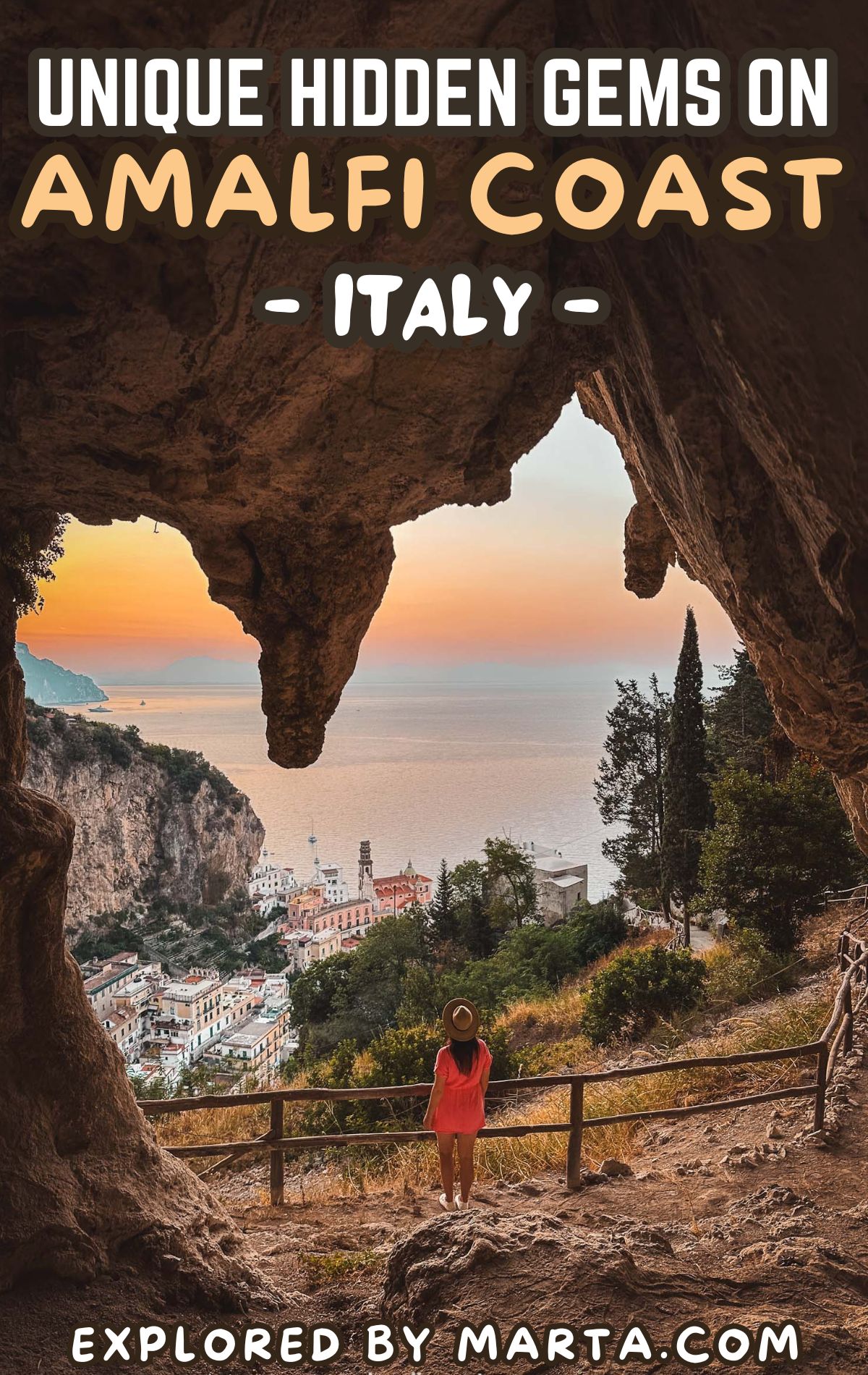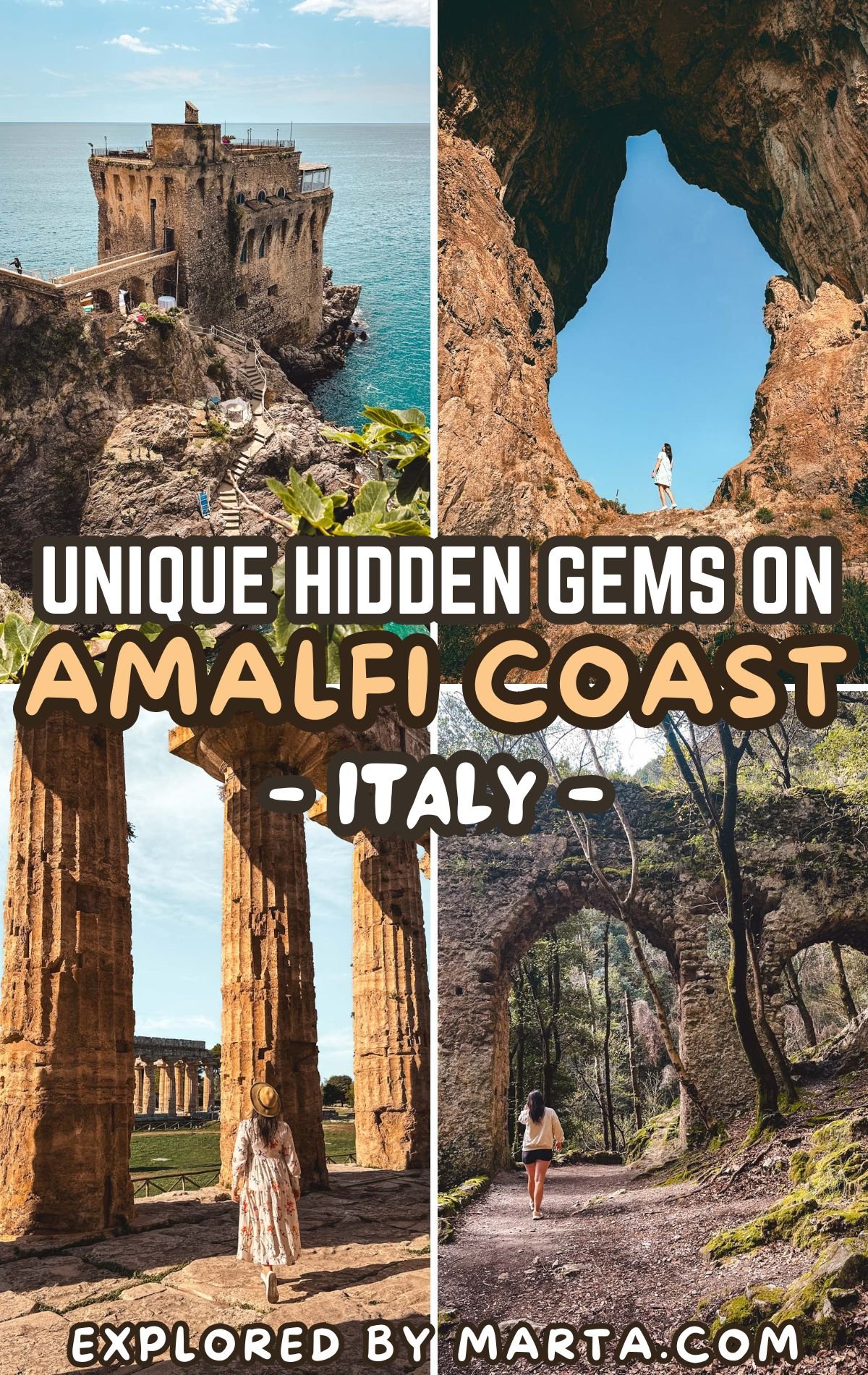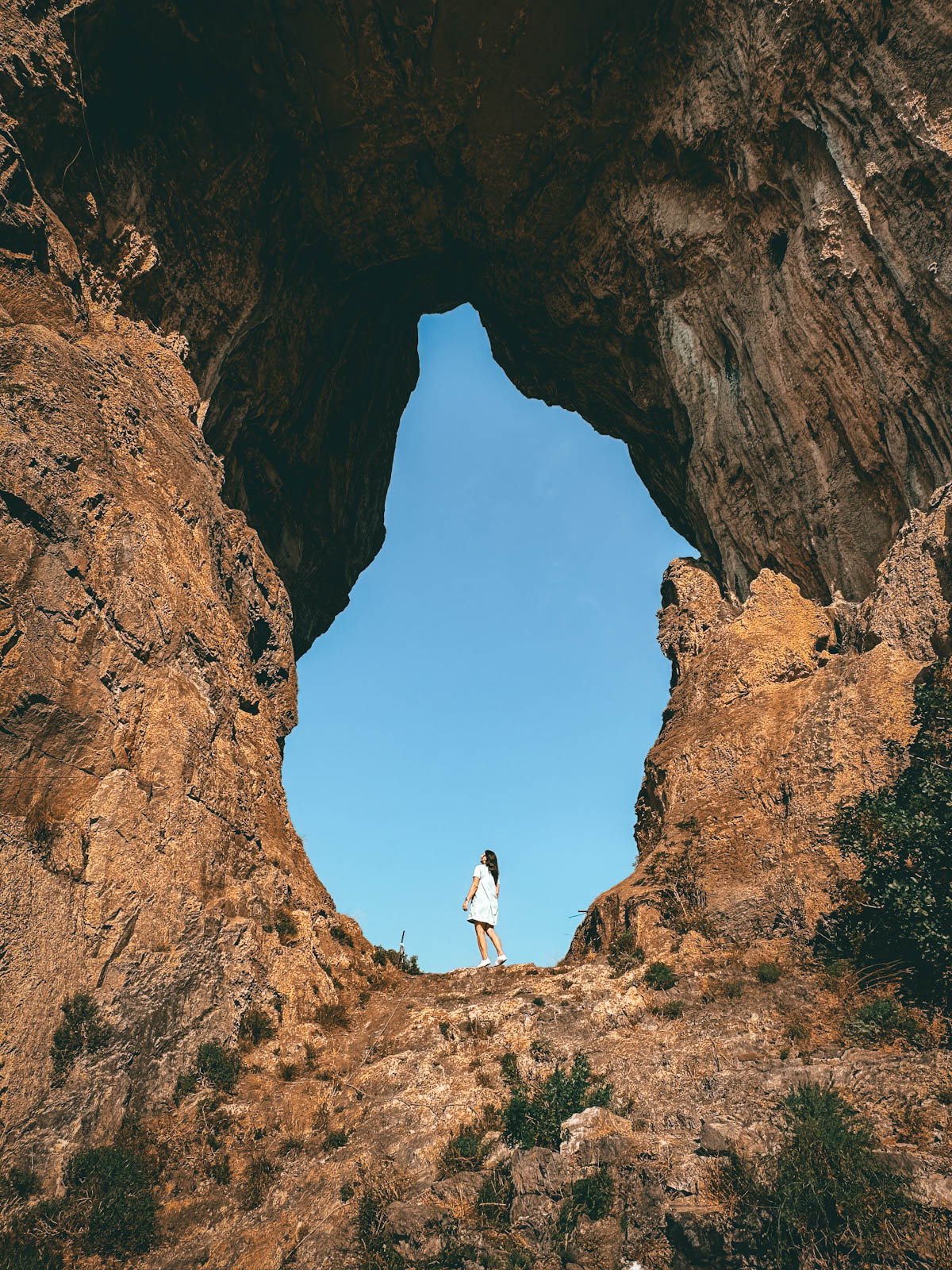19 unique hidden gems on the Amalfi Coast, Italy
This post may contain affiliate links. If you use these links to buy something I may earn a small commission at no extra cost to you! Thank you for your support!
Are you looking for some unique hidden gems on the Amalfi Coast to add to your itinerary? There is definitely more to the Amalfi Coast than social media shows, so let me help you escape the summer crowds and discover the Amalfi Coast off the beaten path!
Known for its stunning nature, cliffside villas, panoramic views, and charming villages, the Amalfi Coast is a place like no other. We spent around six months living in this part of Italy, and visited nearly every place on the map – from famous landmarks to hidden spots.
In this blog post, you’ll find all the coolest hidden gems on the Amalfi Coast (and in the surrounding area!) with photos, descriptions, and locations on Google Maps. Happy travels!
1. The ancient underground Roman Villa in Positano

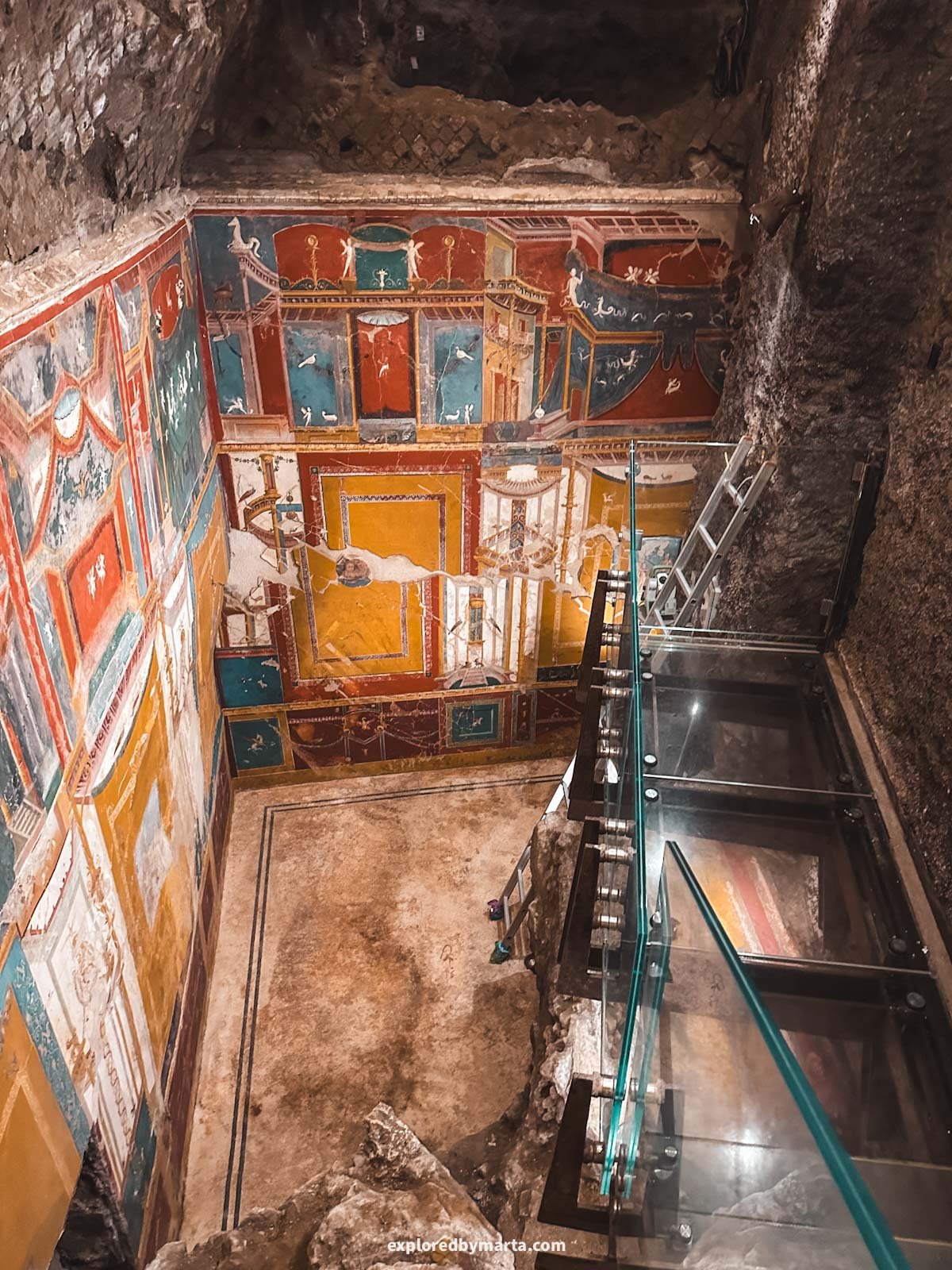
Positano is a must-visit destination on the Amalfi Coast, and is very familiar with mass tourism. But, believe it or not, there are still some lesser-known spots hidden from the crowds in Positano.
Where could it possibly be? Well, it is literally underground, and it is definitely one of my favorite hidden gems on the Amalfi Coast.
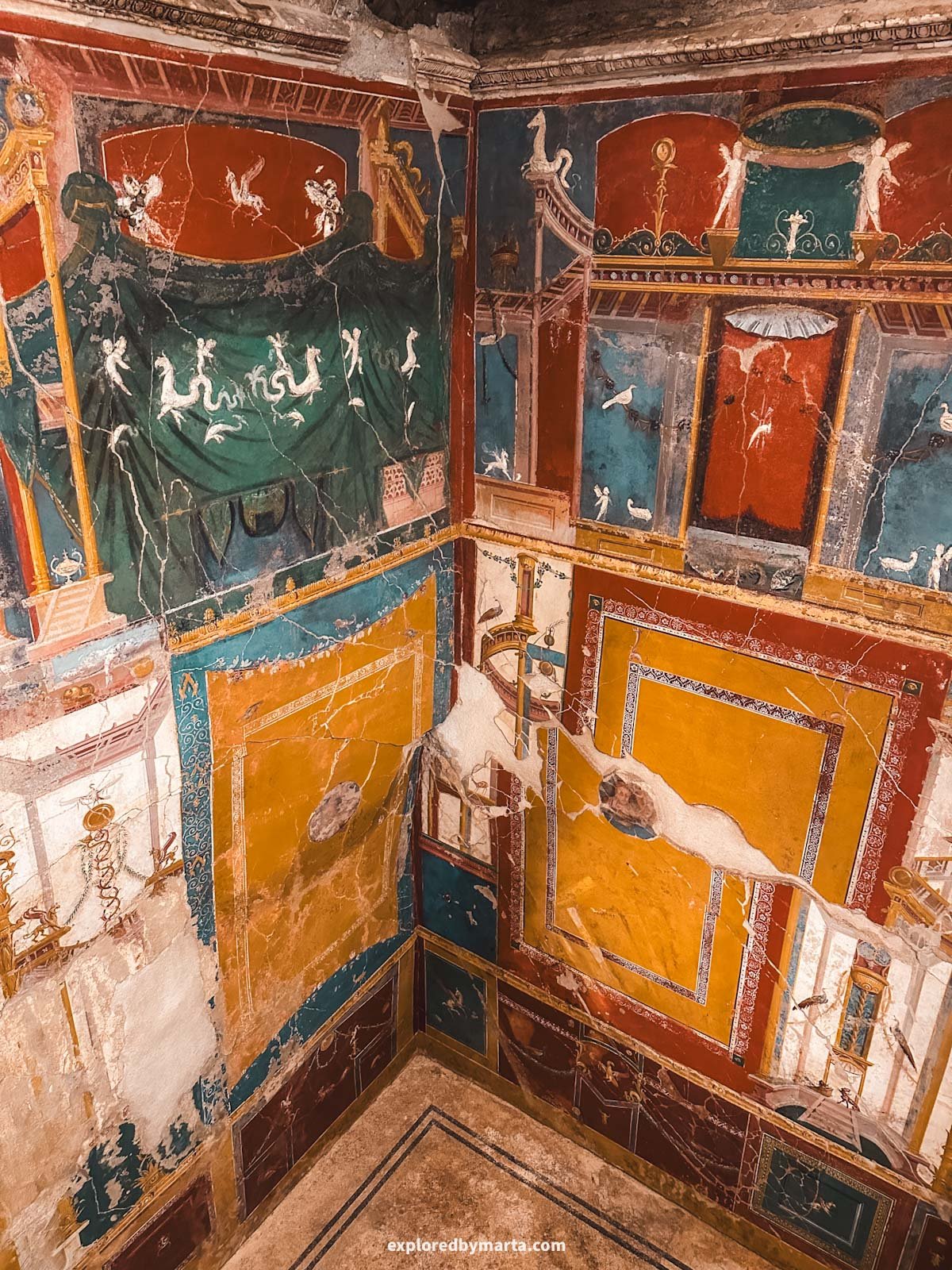
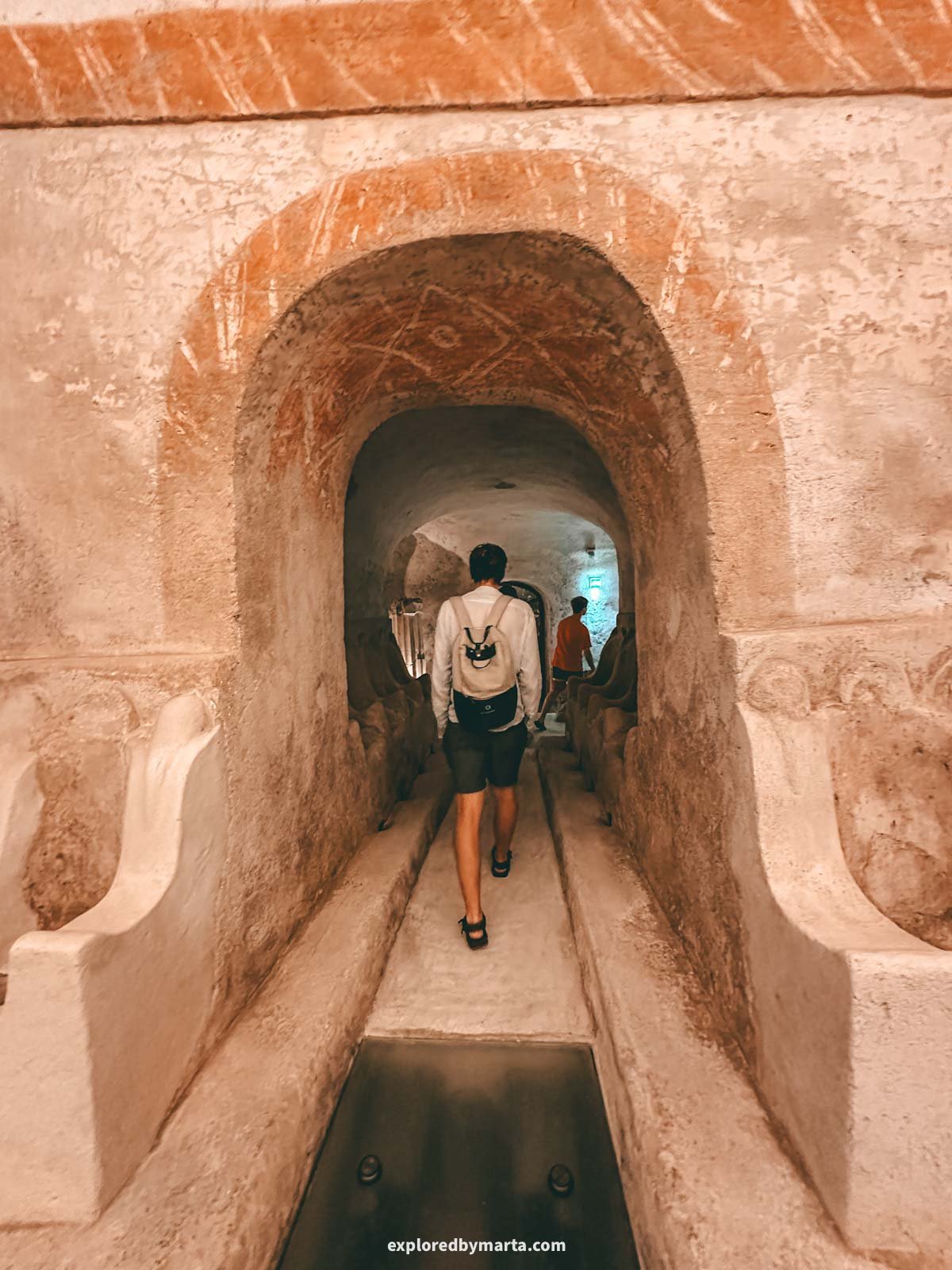
Before it became a famous tourist destination, Positano used to be an ancient fishing village. However, before it was a small fishing village, Positano was home to a large and lavish Roman villa.
Rich Romans, including some Roman Emperors, loved this area and built many summer residences along the Amalfi Coast, the Sorrento Peninsula, as well as Capri Island.
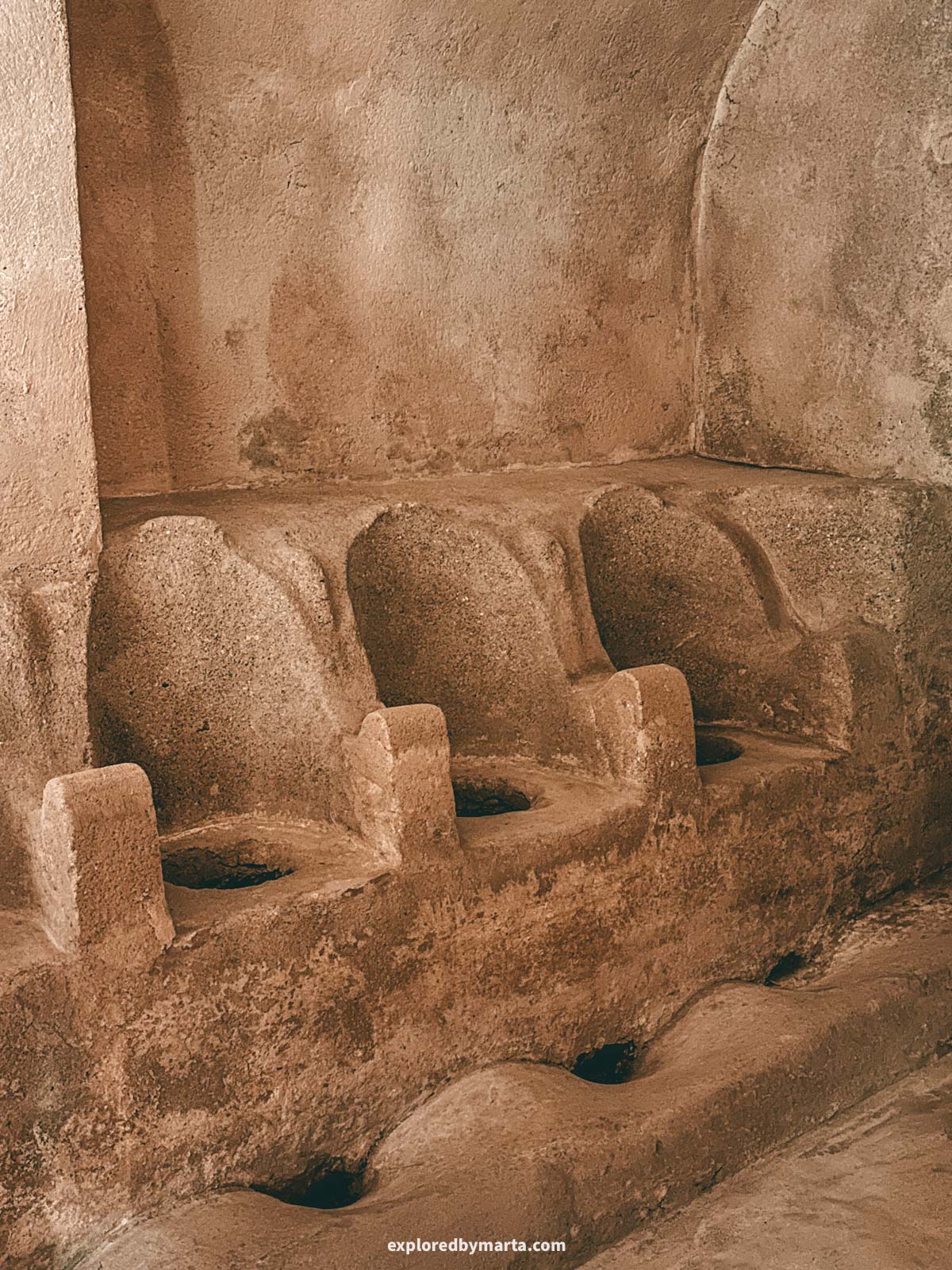
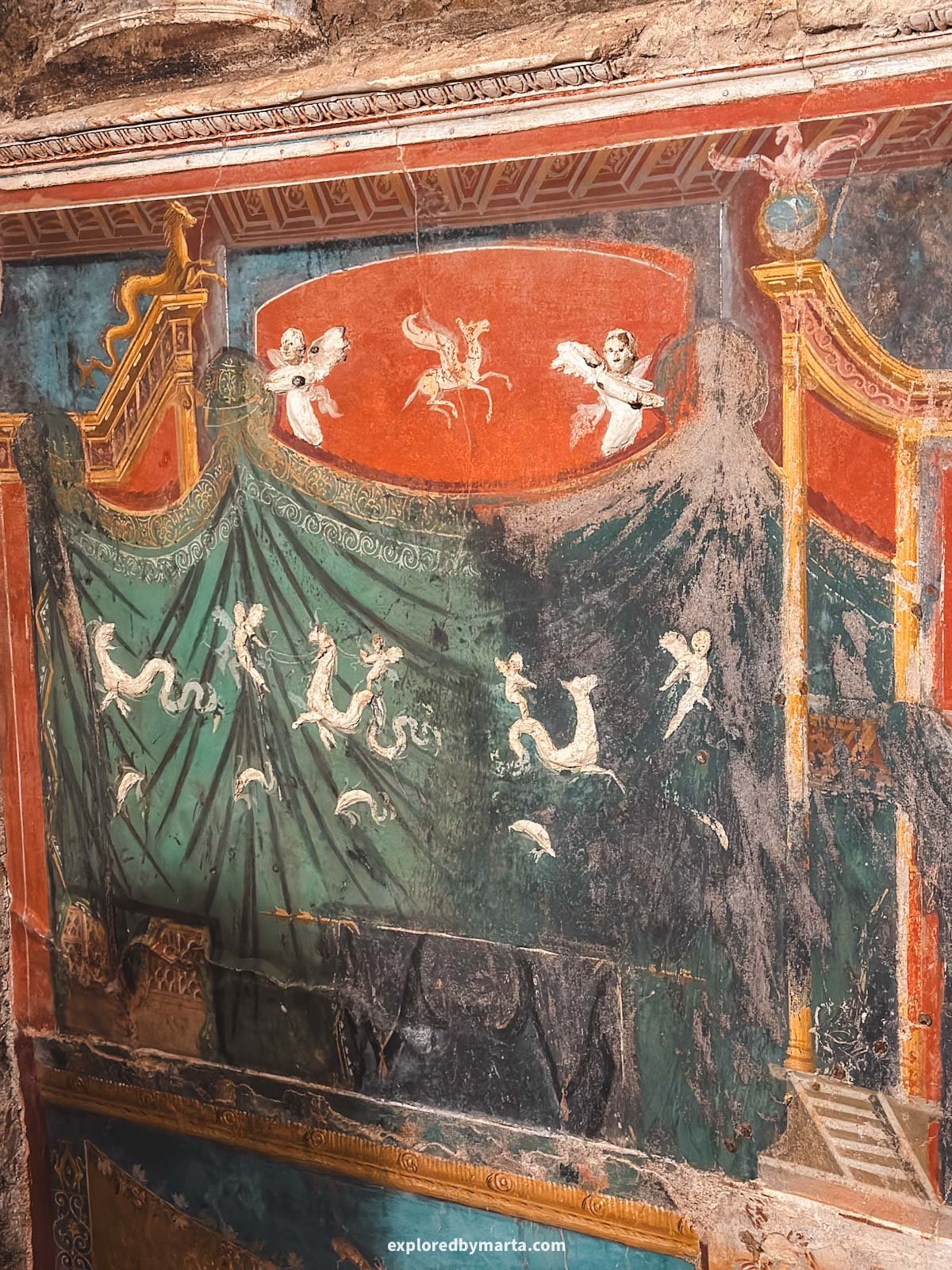
Only relatively recently was it discovered that there are remains of a large 2 thousand-year-old Roman villa under Positano. The villa was destroyed as a result of the infamous Mount Vesuvius eruption back in 79 AD, and was left buried under layers of ash and mud.
As centuries passed, the Roman villa buried 20 meters underground was forgotten, and a new fishing village formed where Positano is today. It grew bigger and bigger, until it was a town as we see it today.
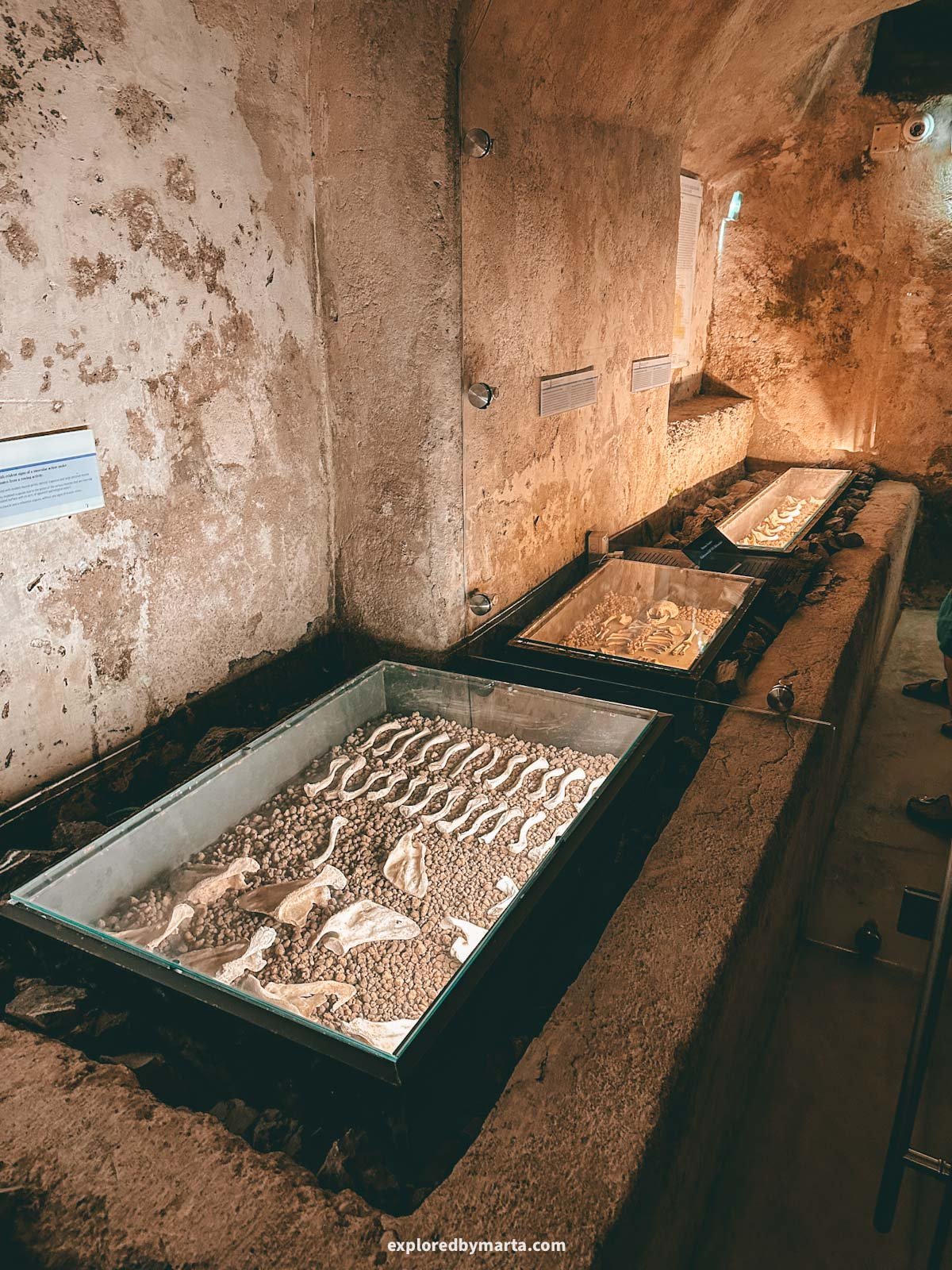
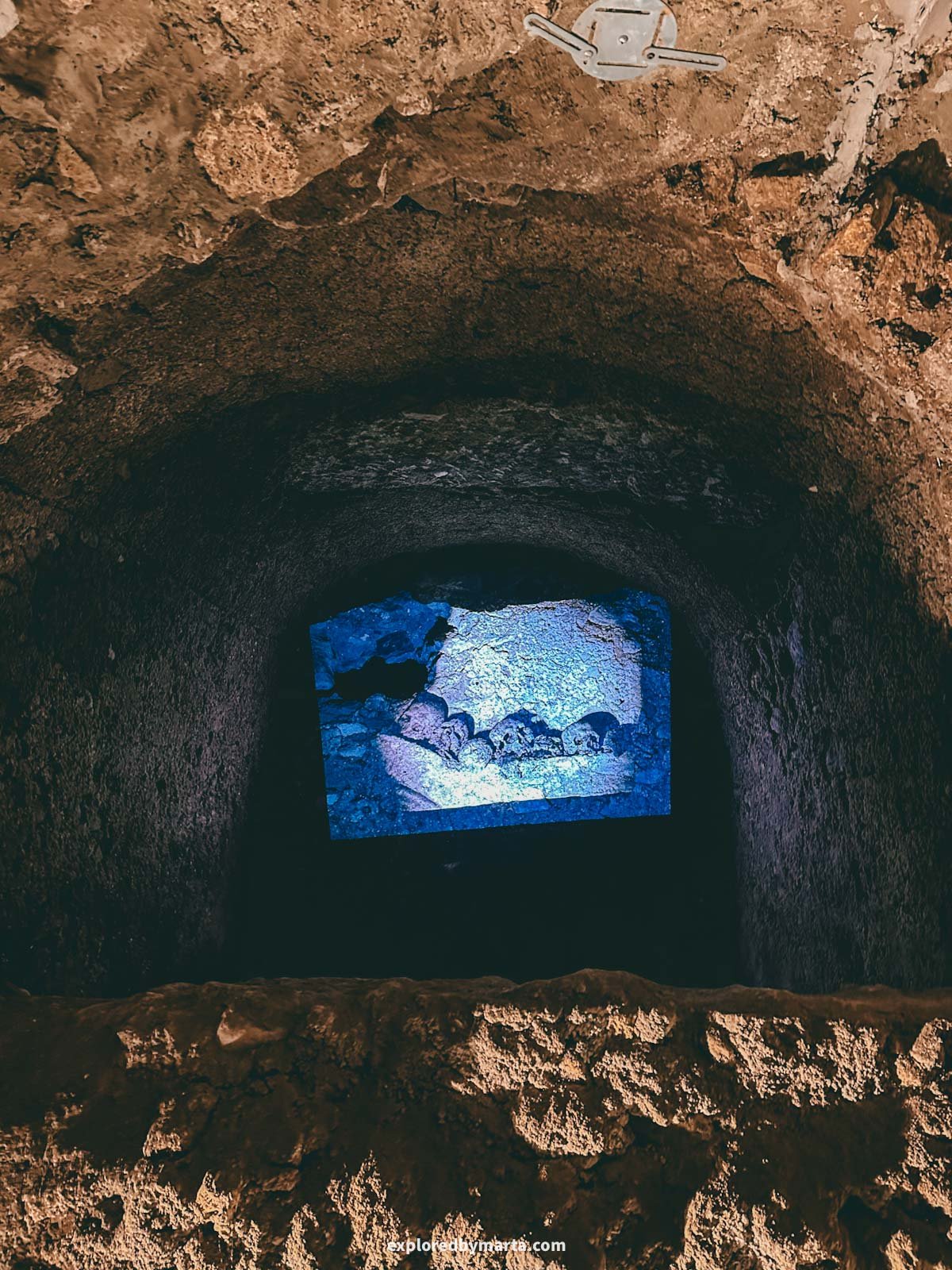
But the forgotten villa still lies underground in the heart of Positano – right under the main church, Chiesa di Santa Maria Assunta. In recent years, thanks to archaeological excavations, a small part of the villa has been dug out and can be toured with a guide.
This seemed to be a great idea to us, and we joined this tour. The stories they told and places they showed were truly captivating.
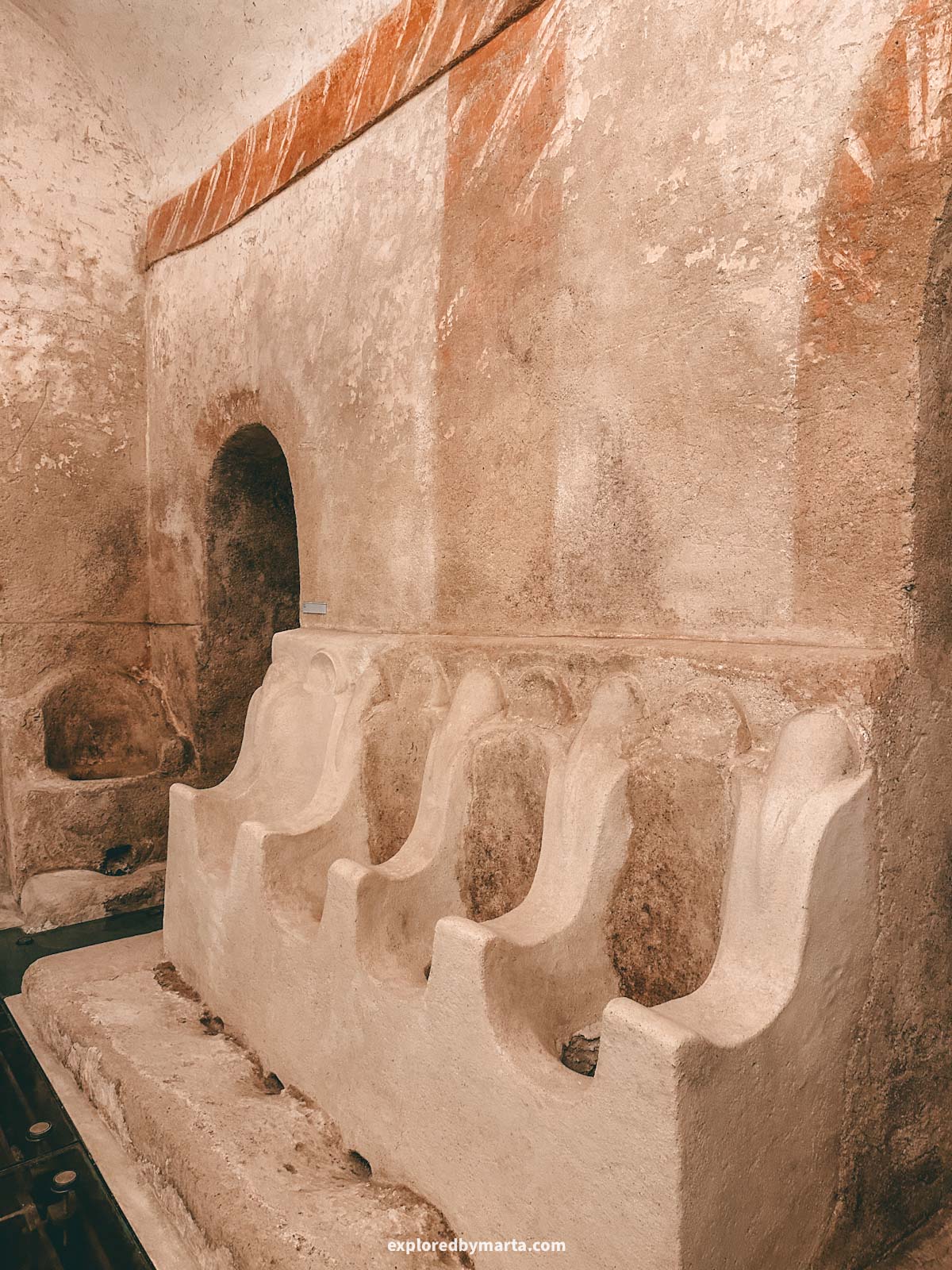
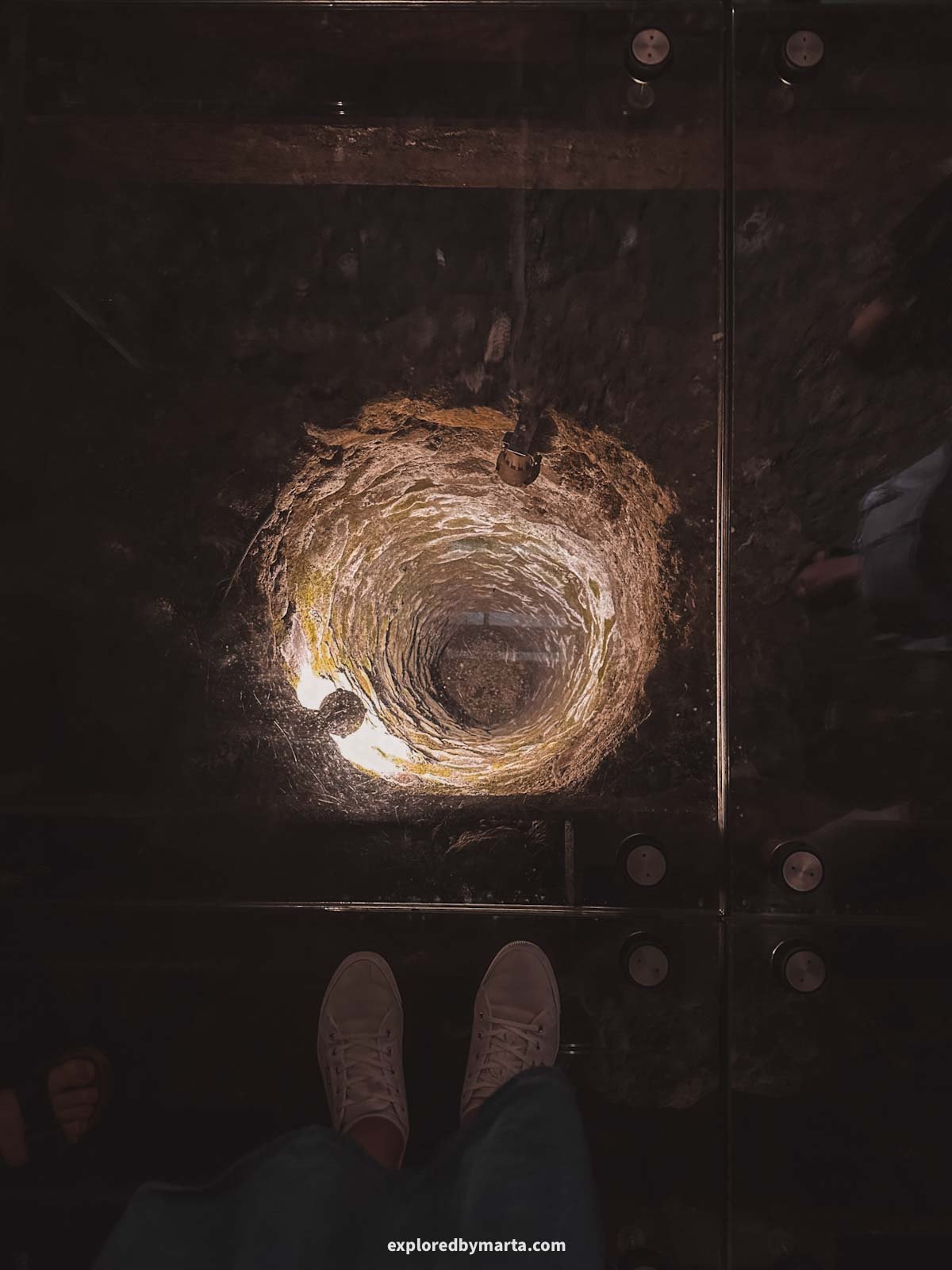
We saw the parts of the Roman Villa, saw many artefacts found in the villa, as well as from the monastery that was built above the villa in later centuries, and also walked around the catacombs where monks were buried in seated positions.
I cannot imagine the faces of archaeologists when they found a whole room of skeletons all sitting in chairs around the room. Yikes!

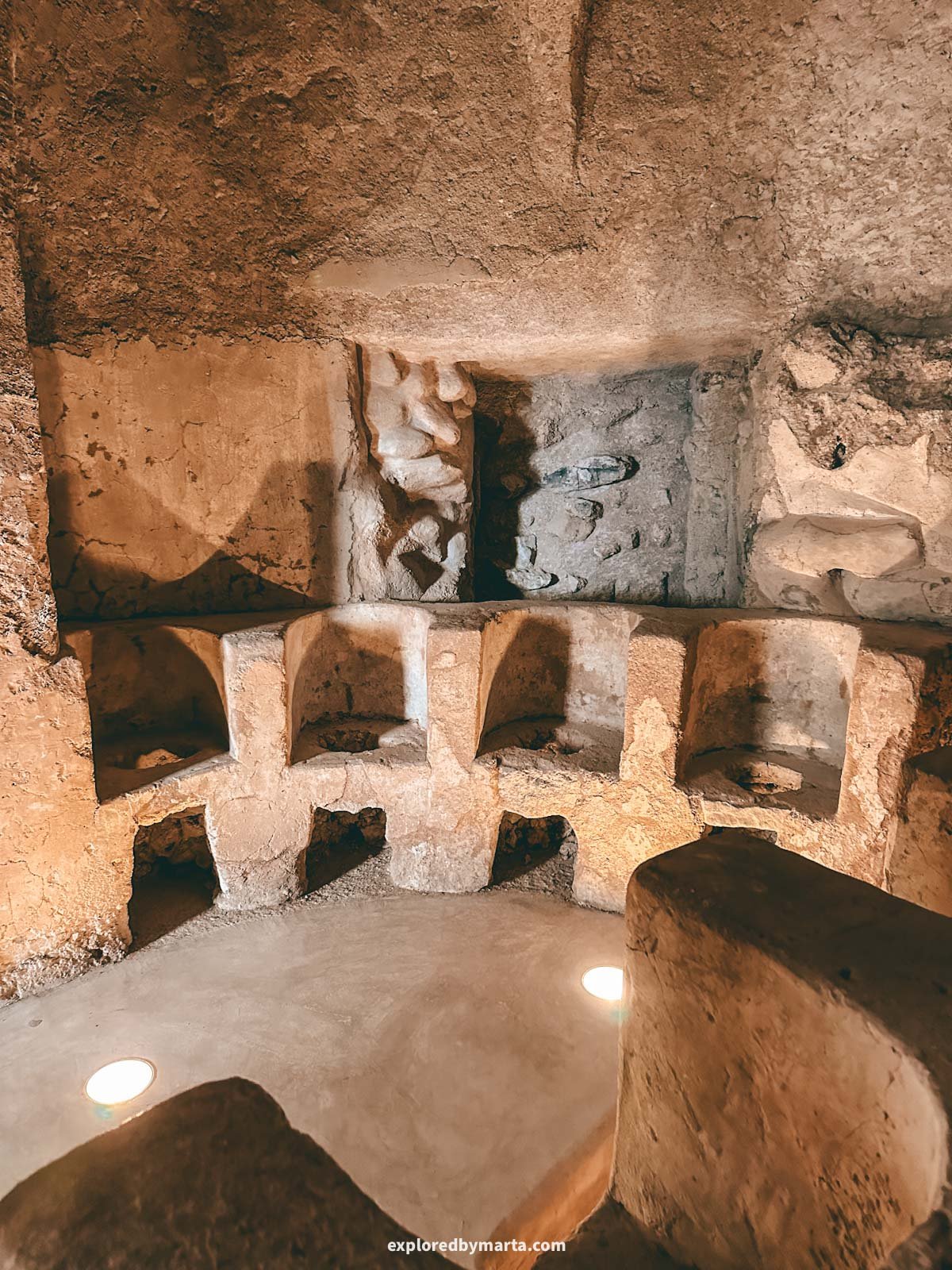
Normally, I am not amused by such tours, but this was truly interesting, informative, surprising, and even shocking at times. This was definitely one of the most impressive places we visited on the Amalfi Coast!
Exploring the lost history of Positano in a small group was unforgettable, definitely one of my favorite things to do in Positano. If you have an hour to spare, stop buying endless souvenirs and do this tour, hehe. You’re welcome!
Location: Museo Archeologico e Villa Romana
2. Buco di Montepertuso

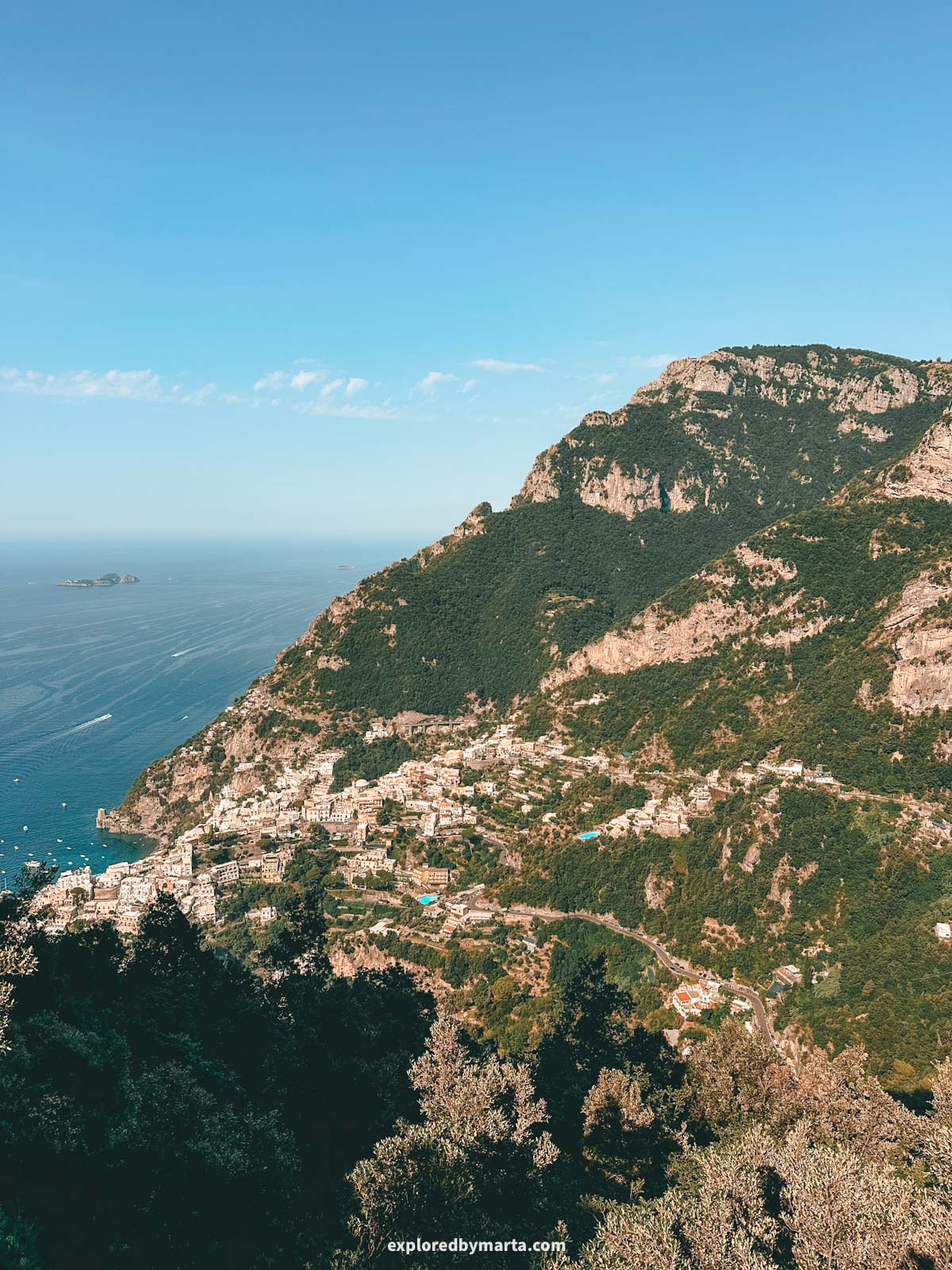
Buco di Montepertuso, or Montepertuso Hole, is a massive perforated rock in Montepertuso village above Positano. This was one of my favorite hidden gems we found on the Amalfi Coast! Plus, we got to enjoy it all to ourselves!
If you are a nature lover and you are staying in Positano, a hike up to Positano’s most unique natural landmark must be among your top things to do in Positano!
The hike itself is pretty straightforward – endless uphill stairs with the last 200 meters by a smaller forest path. I easily did this hike in my white sneakers, no need for special hiking shoes. Just make sure you are comfortable!
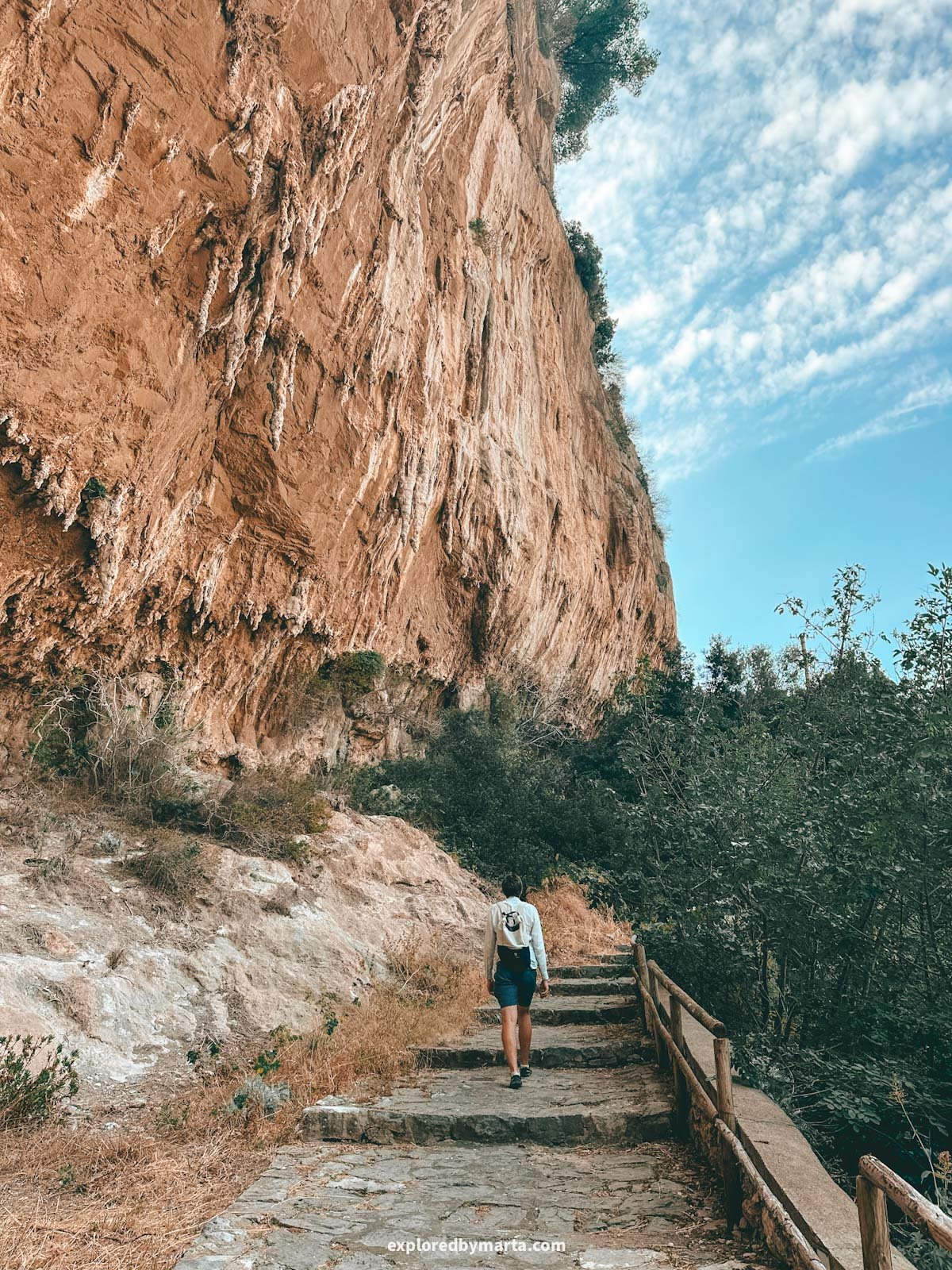
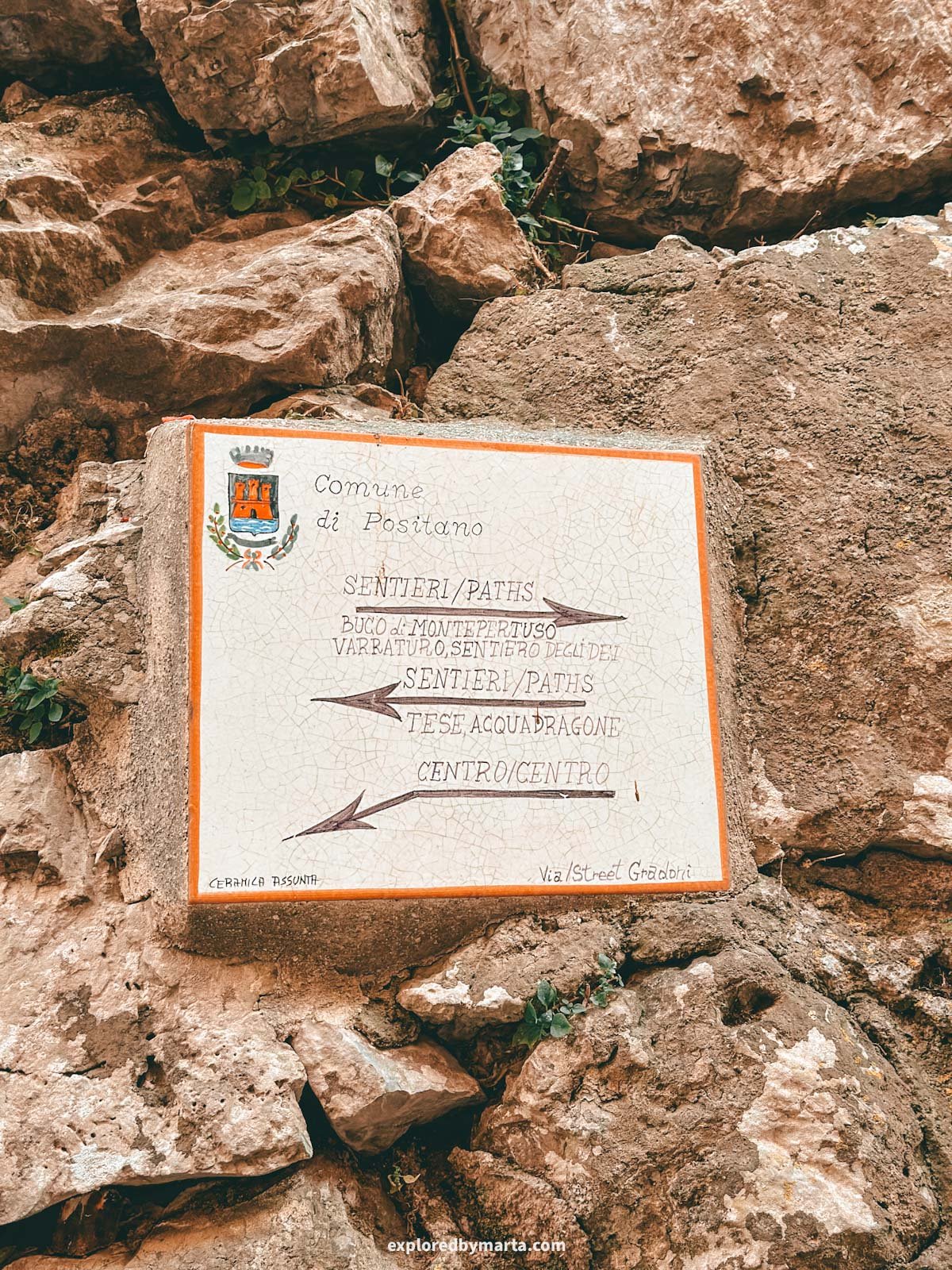
The hike starts wherever you are in Positano – if you start by the beach at sea level, you’ll just have to manage more elevation gain, but if you start somewhere higher uphill, you’ll have a bit less climbing.
We arrived in Positano in the morning by SITA bus and got off the bus at the Positano Sponda bus stop, so we started our hike from there. It was a pretty hot morning, so I’m glad we didn’t have to walk all the way up from the beach!
At first, we followed the main road, then turned onto Via Grado, a long flight of stairs that leads up to Montepertuso, a hamlet right above Positano.

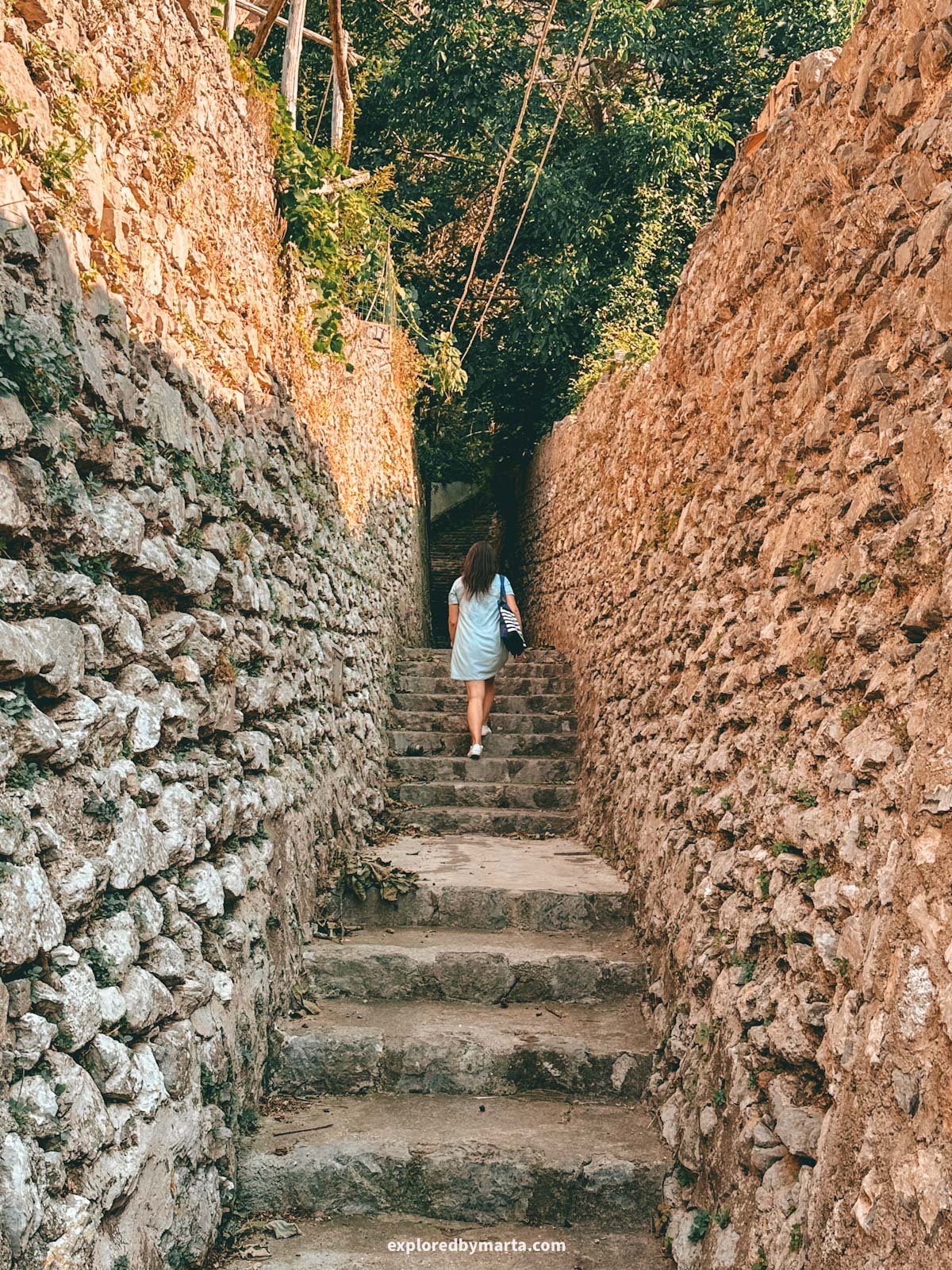
In Montepertuso, we found our way to the Via Gradoni path and continued up until the street ends right by a farm. From there, we got on a small forest path that led us above the farm into the forest and right to the iconic hole in the mountain.
The forest section is very short, and the hole is right there above the farm; you just don’t see it from below, because the trees are in front of it. Getting there is not complicated at all, but the challenging part is the elevation gain.
From the bus stop, we managed to accumulate 400 meters, or 1,300 ft, of elevation! It was really like climbing stairs non-stop, haha. I was dripping in sweat, and we drank almost 2 liters of water.
However, the iconic rock formation was totally worth the climb. I love rock arches, holes, and all kinds of unique natural rock formations, so this view was like Christmas for me. Plus, the way back down was all downhill and very easy.
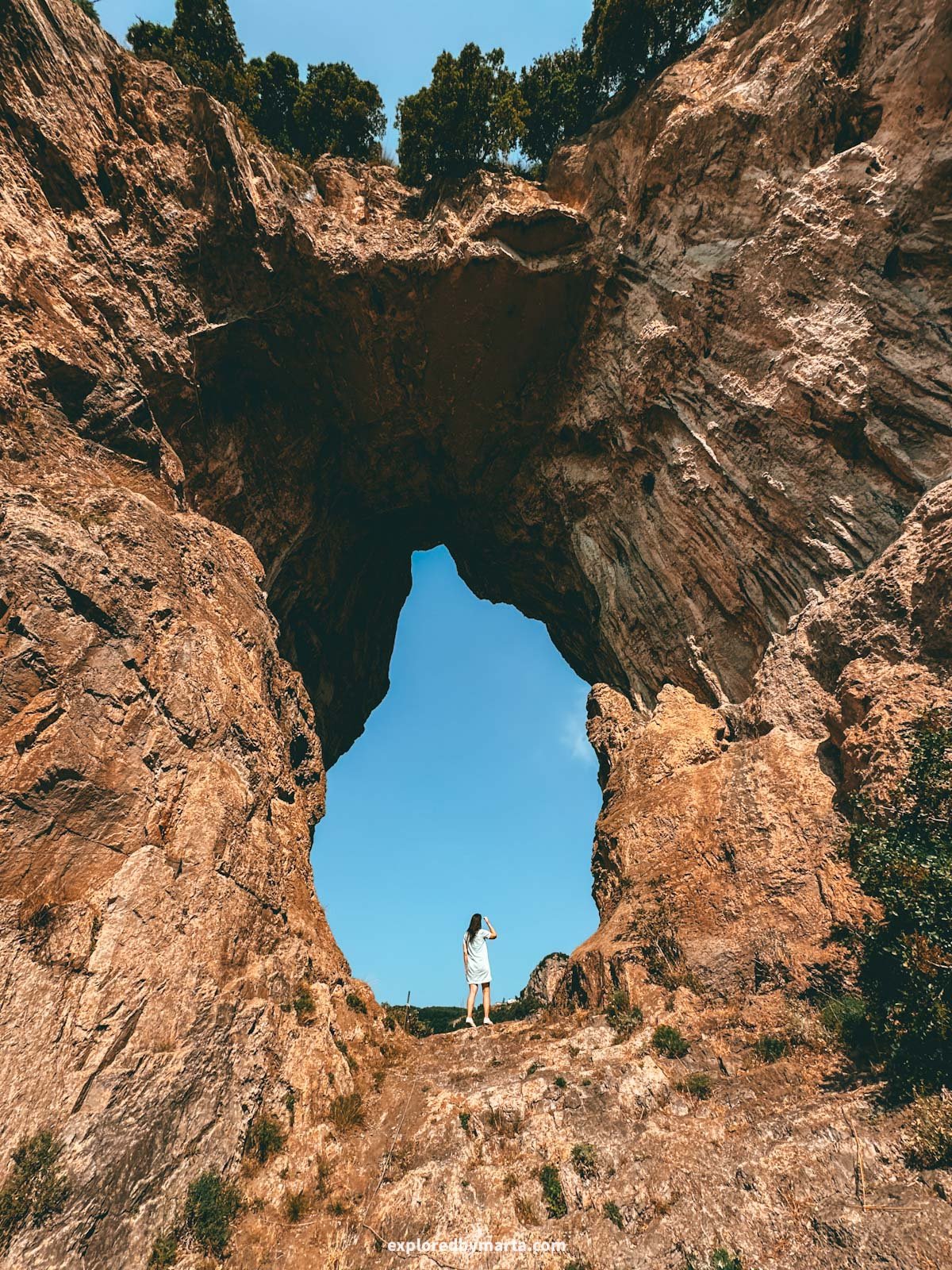
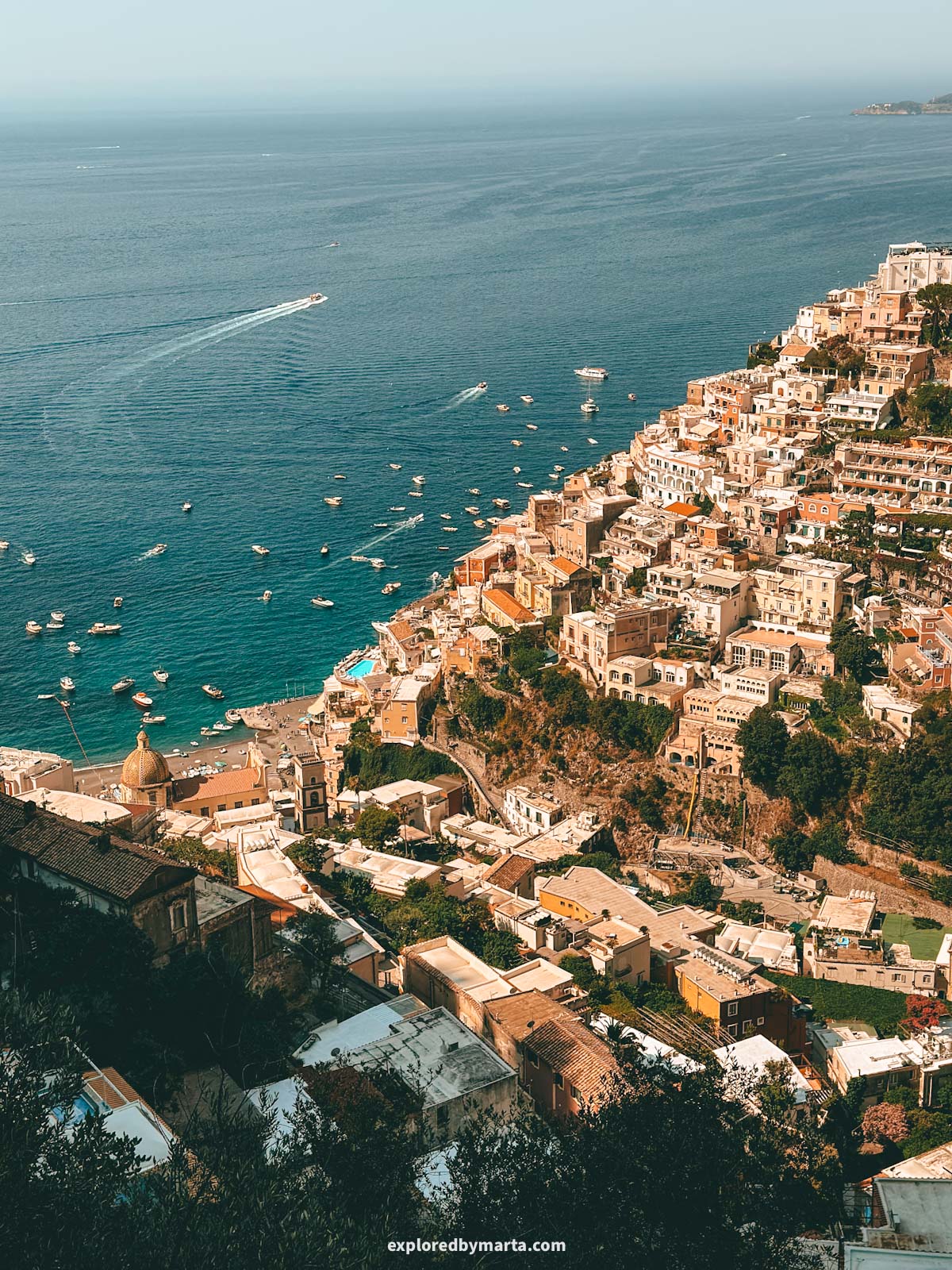
If you’re not a fan of climbing stairs (hello, what are you doing on the Amalfi Coast!?), then you can take the bus or a taxi up to Montepertuso village and then walk the final steps from there. This way, it should be totally doable for most people, including kids.
Fun fact! Did you know that the name of the Montepertuso village translates as the ‘Mountain of the Hole’? One of the local legends says the hole was formed during the fight between Archangel Michael and the Devil himself.
The story goes that the Devil was causing great chaos in the area, and it was up to Saint Michael to end it. They say that during their battle, the Archangel Michael struck the mountain with such force that he left behind a massive round hole in it.
Either way, we thoroughly enjoyed the views of Positano and the shimmering blue sea during the hike, and I enjoyed the iconic hole in the rock even more so! I hope you get to squeeze this hike into your itinerary!
Location: Buco di Montepertuso
3. Ceramics Street in the ceramics capital, Vietri sul Mare
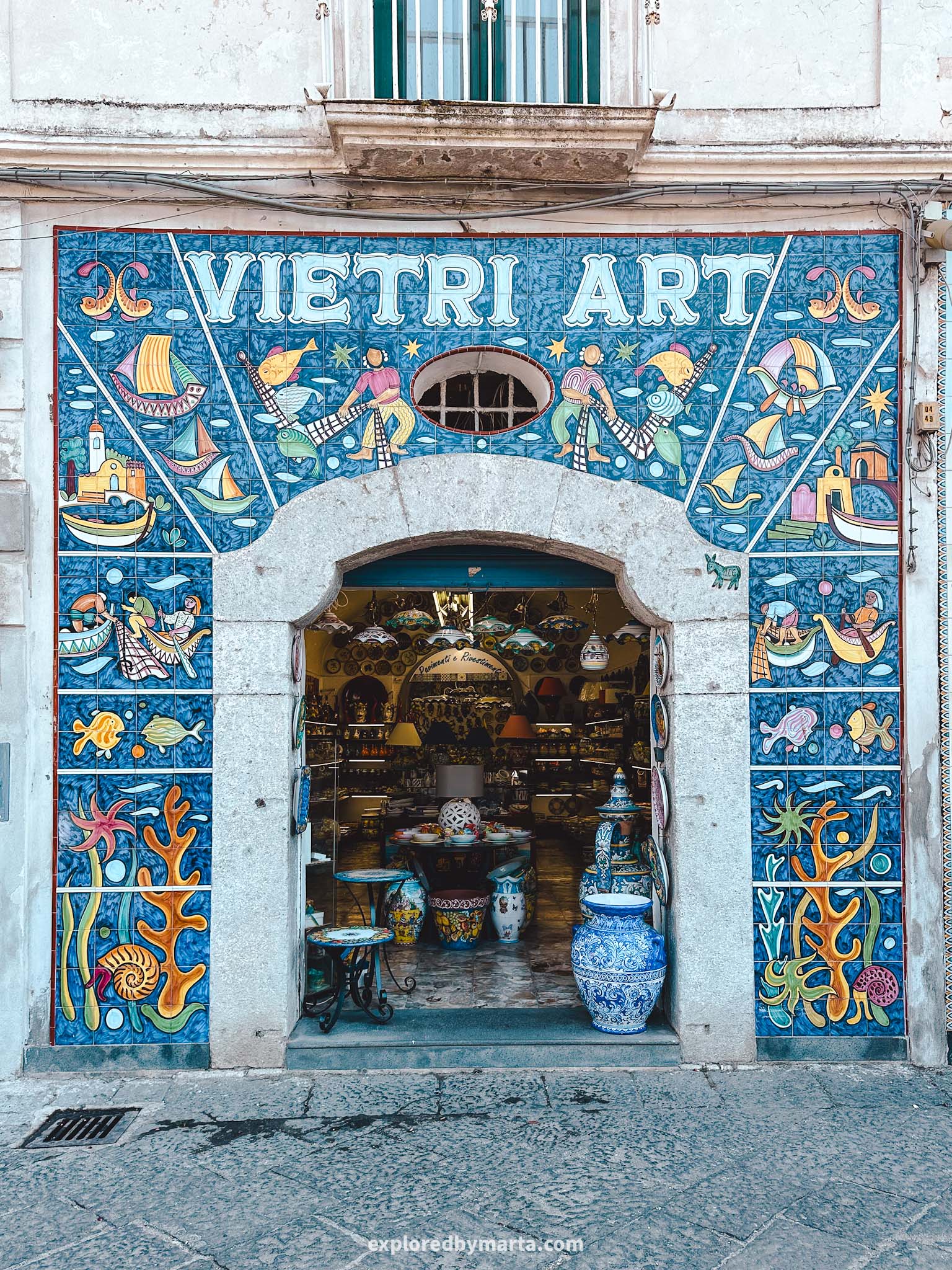
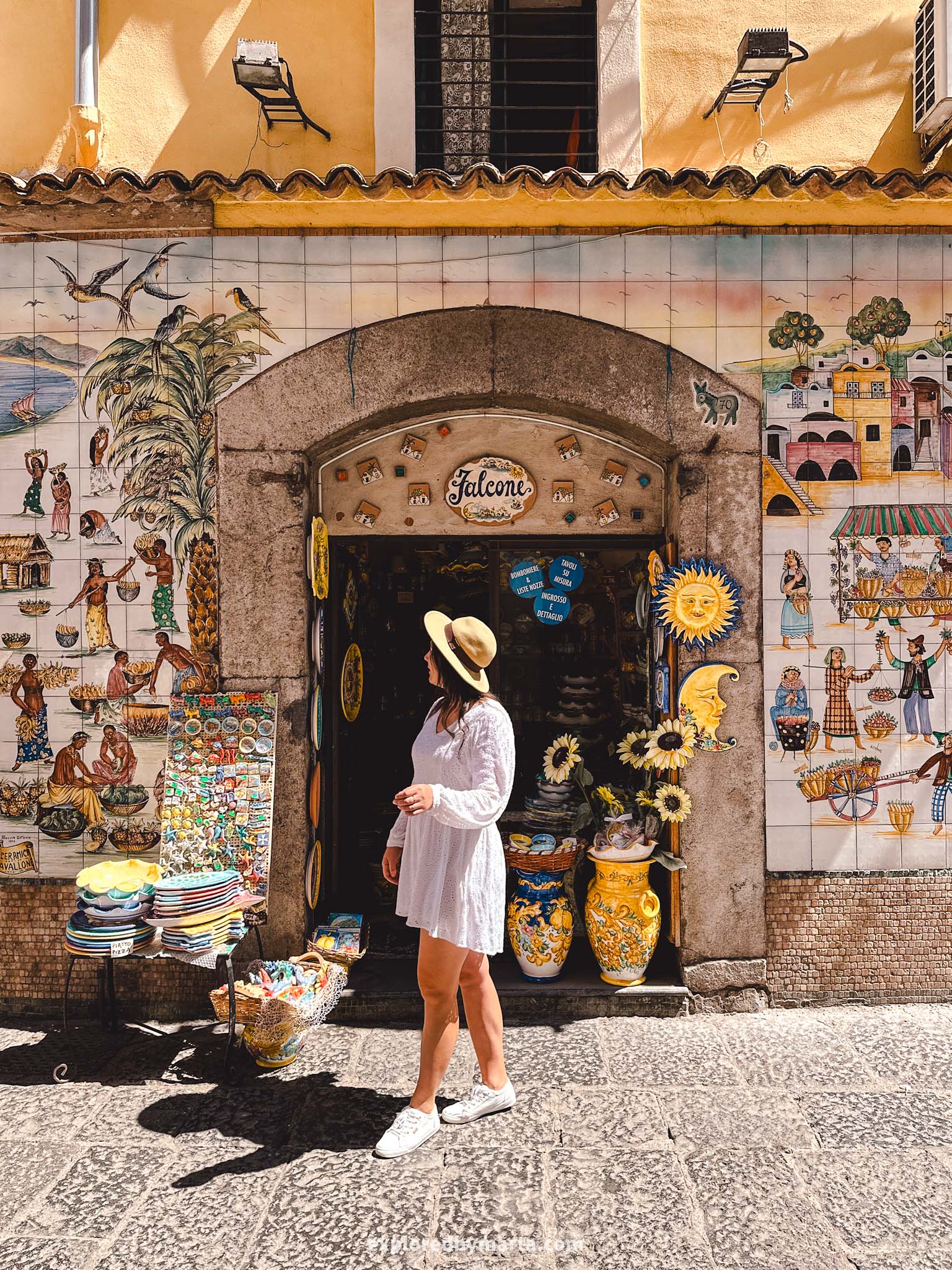
Every traveler to the Amalfi Coast knows (or at some point realizes) that buying local handmade ceramics is one of the bucket list things to do on the Amalfi Coast.
But only a few of them know this special spot along the coastline – Vietri sul Mare, for centuries known as the capital of ceramics production on the Amalfi Coast.
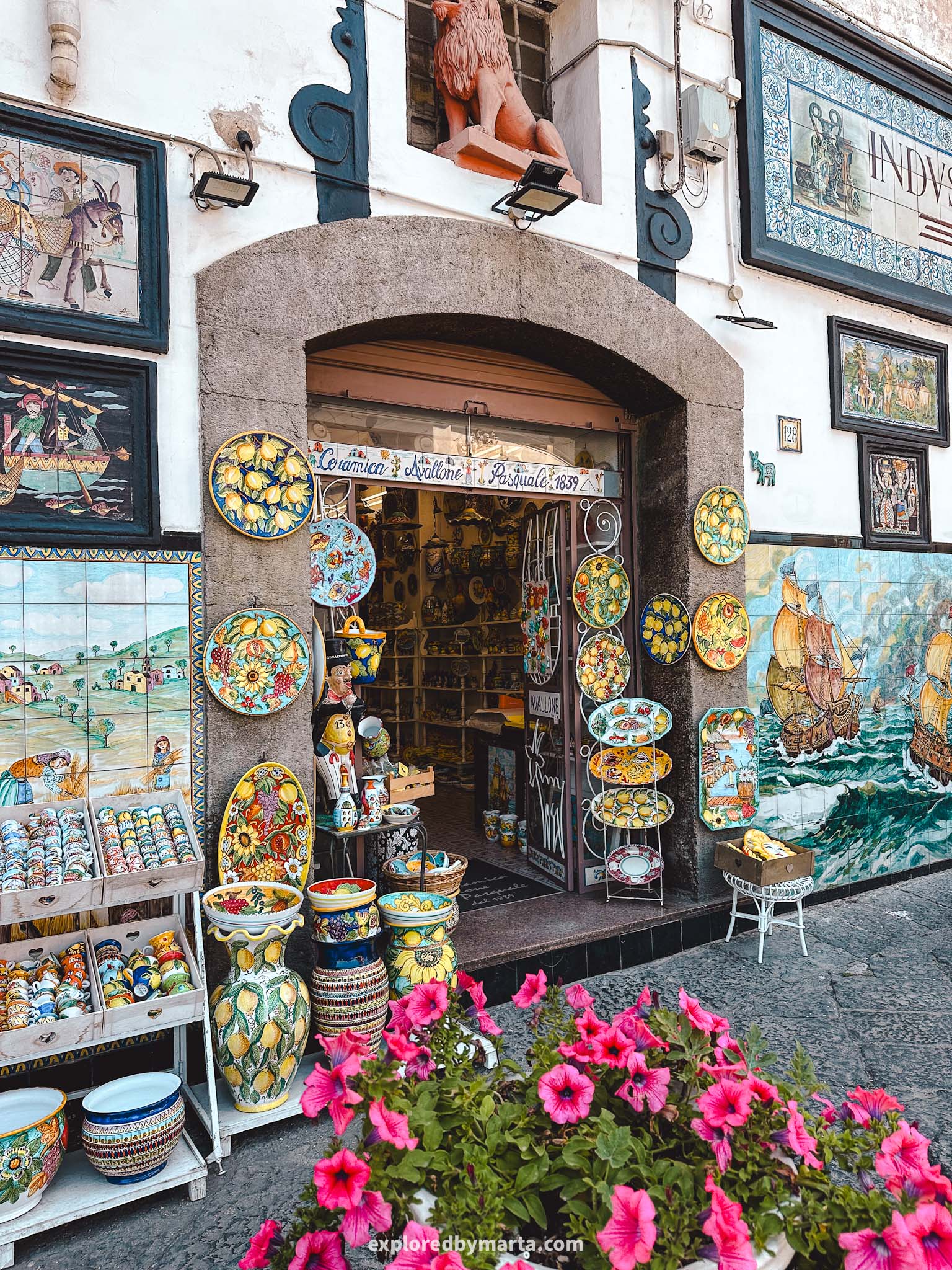
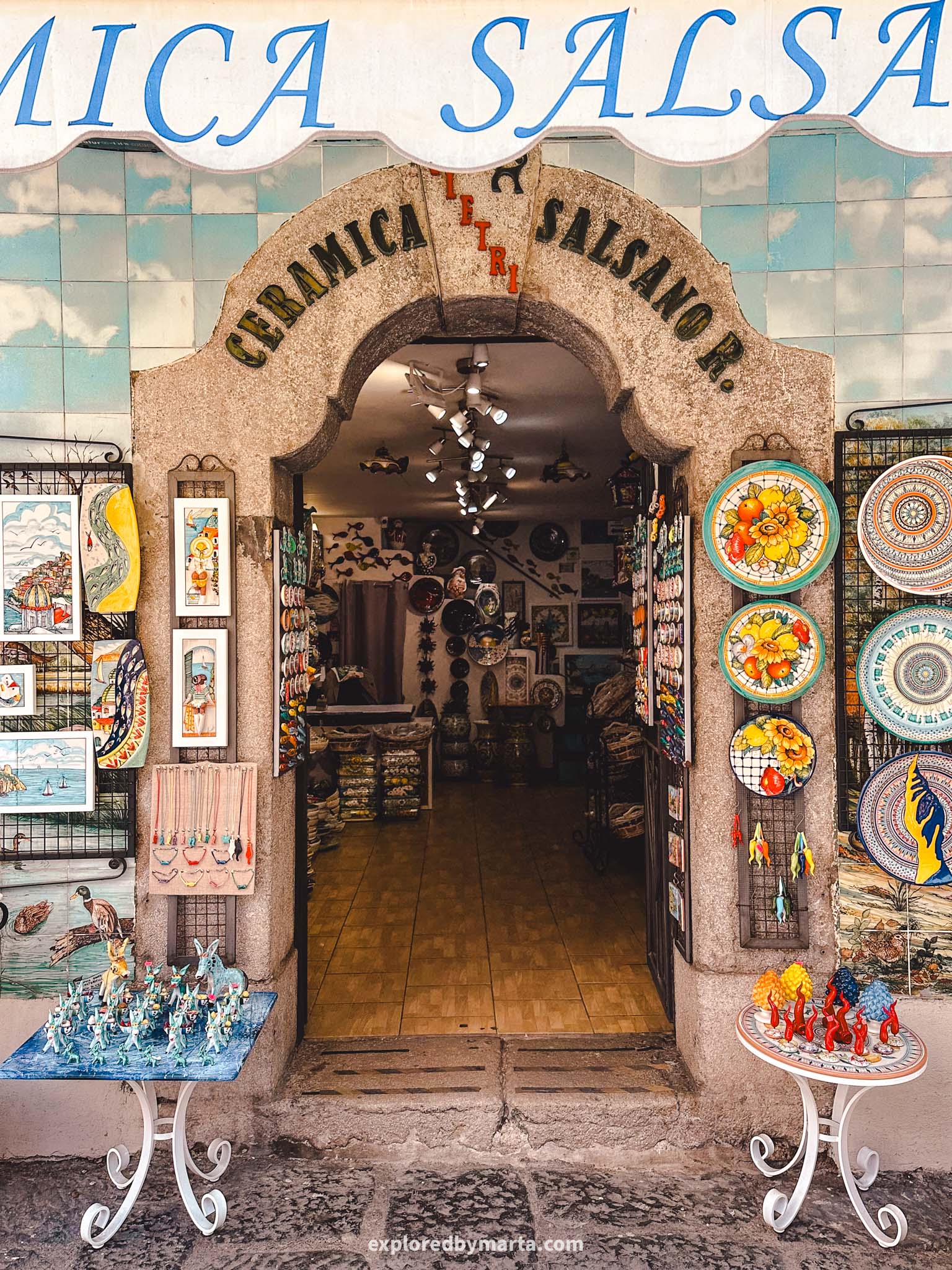
Most travelers to the Amalfi Coast only spend 3 to 7 days here and visit only the famous locations like Amalfi, Positano, Ravello, plus take a trip to Capri, so, despite its status as the capital of ceramics production, Vietri sul Mare has long remained under the radar.
I have visited basically every village along the Amalfi Coast, and I know very well that you can buy ceramics everywhere. However, nothing can compare with Vietri sul Mare, and I hope you have the time and the ability to visit and explore this village.
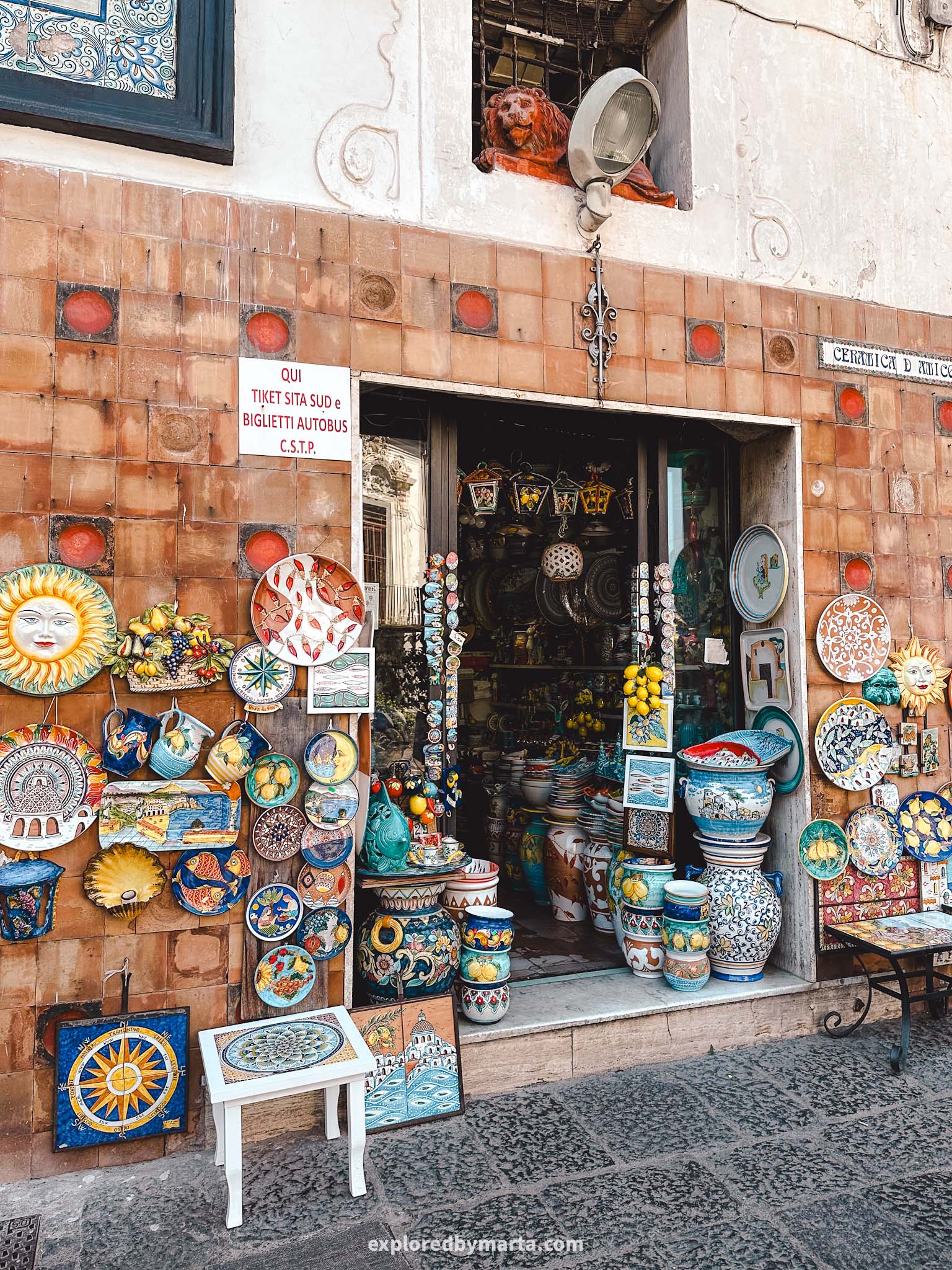
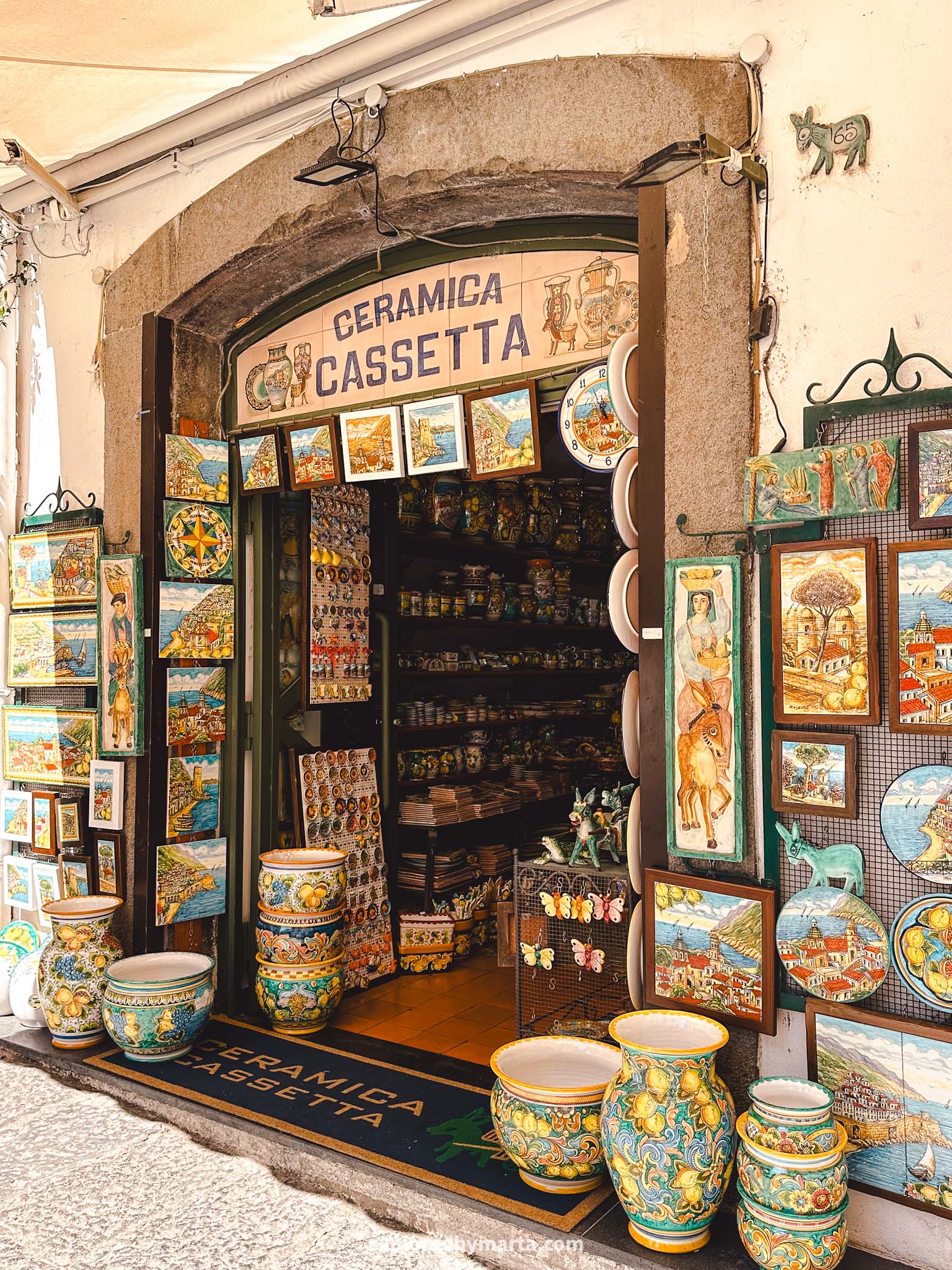
If you only do one thing in Vietri sul Mare, it has to be strolling along Corso Umberto I, the main ceramics street in the village, filled with countless independent manufacturers’ ceramic shops. I couldn’t even count all of them – there are so many of them!
But what I did notice was that all of them have the most beautiful shop entrances! Like, how stunning are they? These stores are adorned with painted ceramic tiles, pots, plates, flowers, and other ceramic design elements, making the whole street a joyful spectacle.
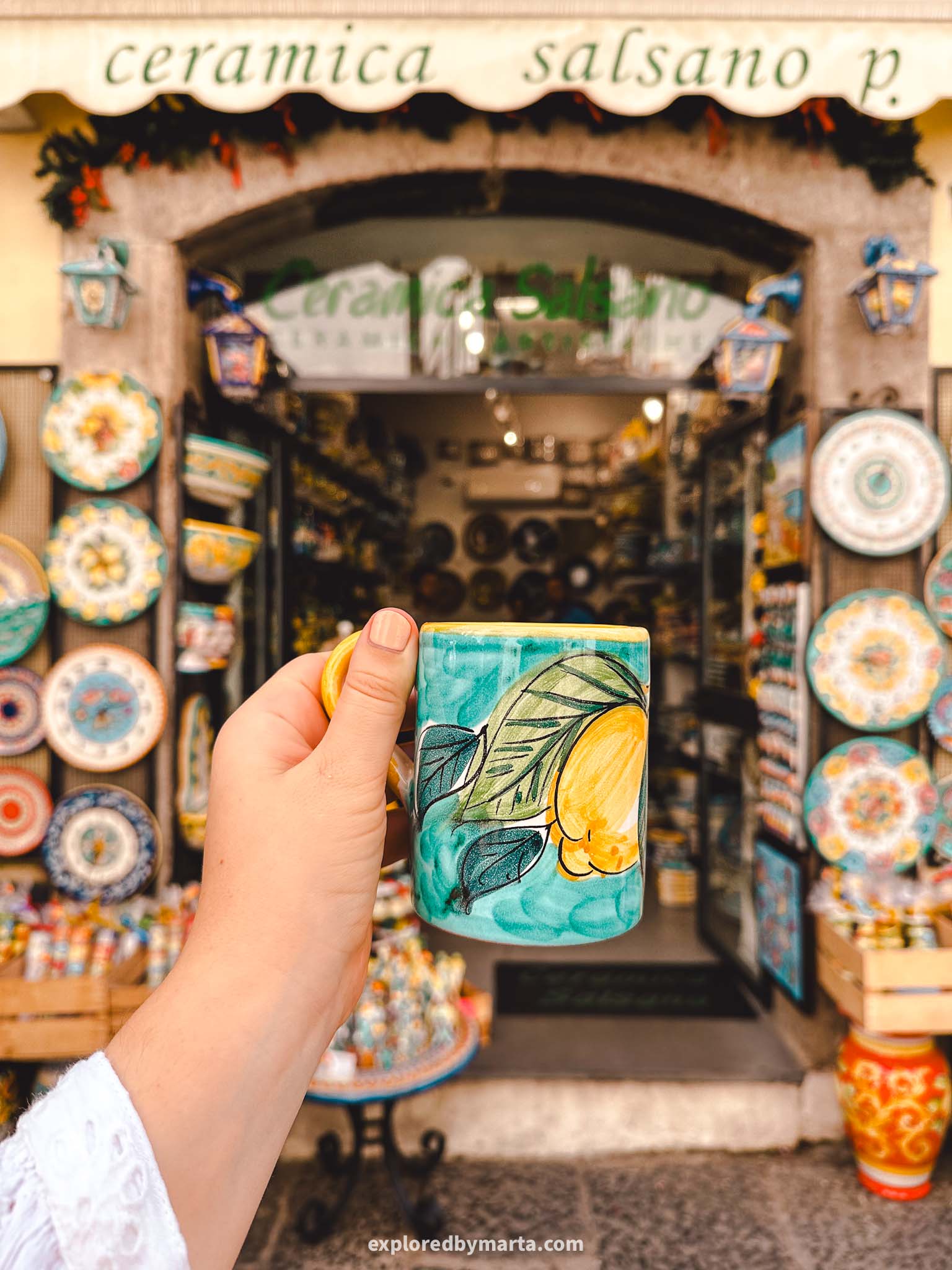
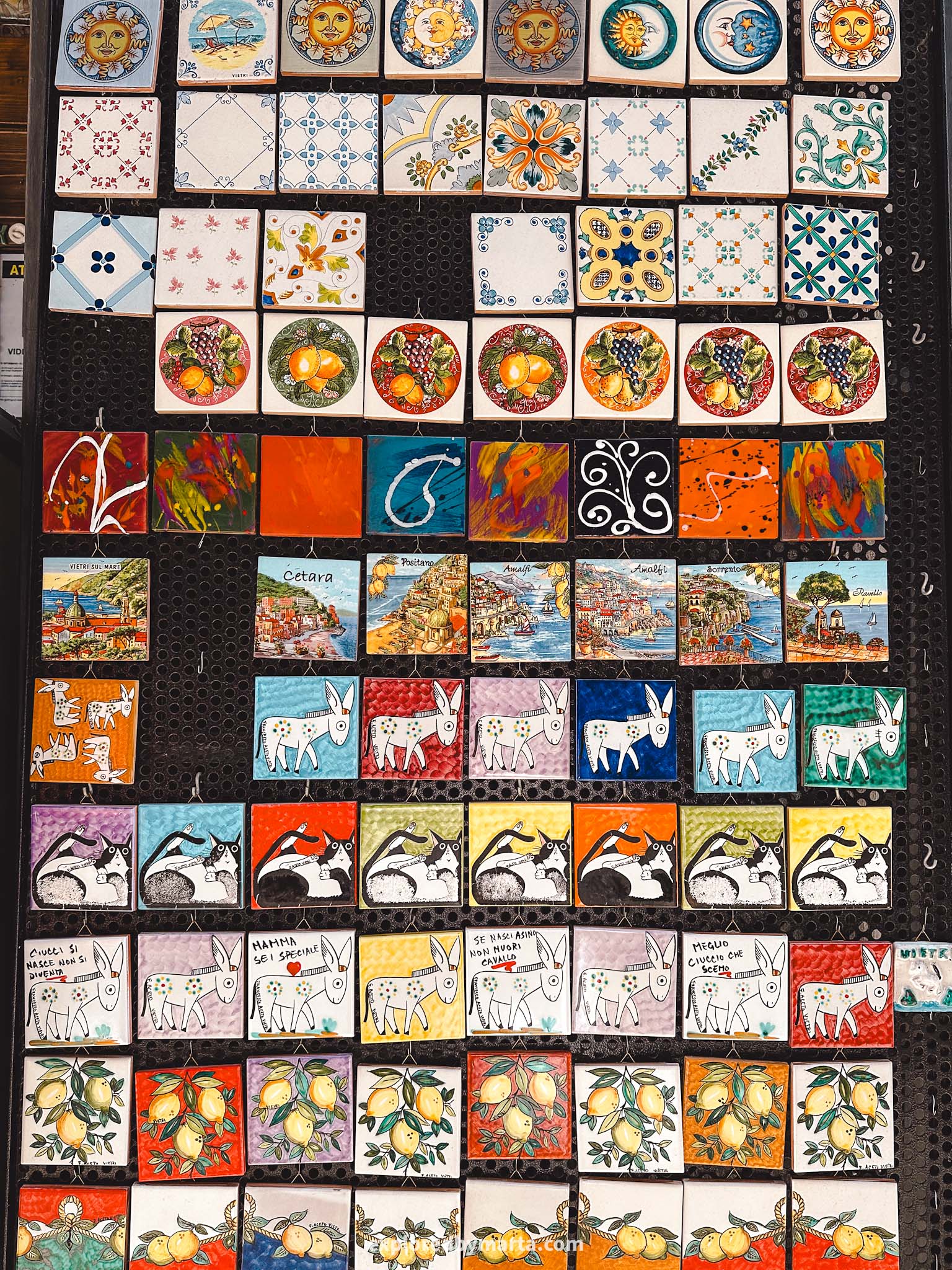
Not only shop entrances, but entire walls around the doors and some houses in the village are all adorned with these beautiful ceramics. In my opinion, this street is one of the most beautiful places on the Amalfi Coast.
In these stores, they sell everything from Christmas ornaments to every possible kitchen item – all made of ceramics. Of course, the most popular items are mugs, plates, and bowls. I hope you won’t only take pictures, but also buy something!
The Corso Umberto I street is not long, so I highly recommend walking all the way from one end to the other. We walked the street there and back. The first time we checked out everything, and the second time we bought some goodies to take home. I got a lemon mug!
Location: Corso Umberto I
4. Villa Comunale in Vietri sul Mare
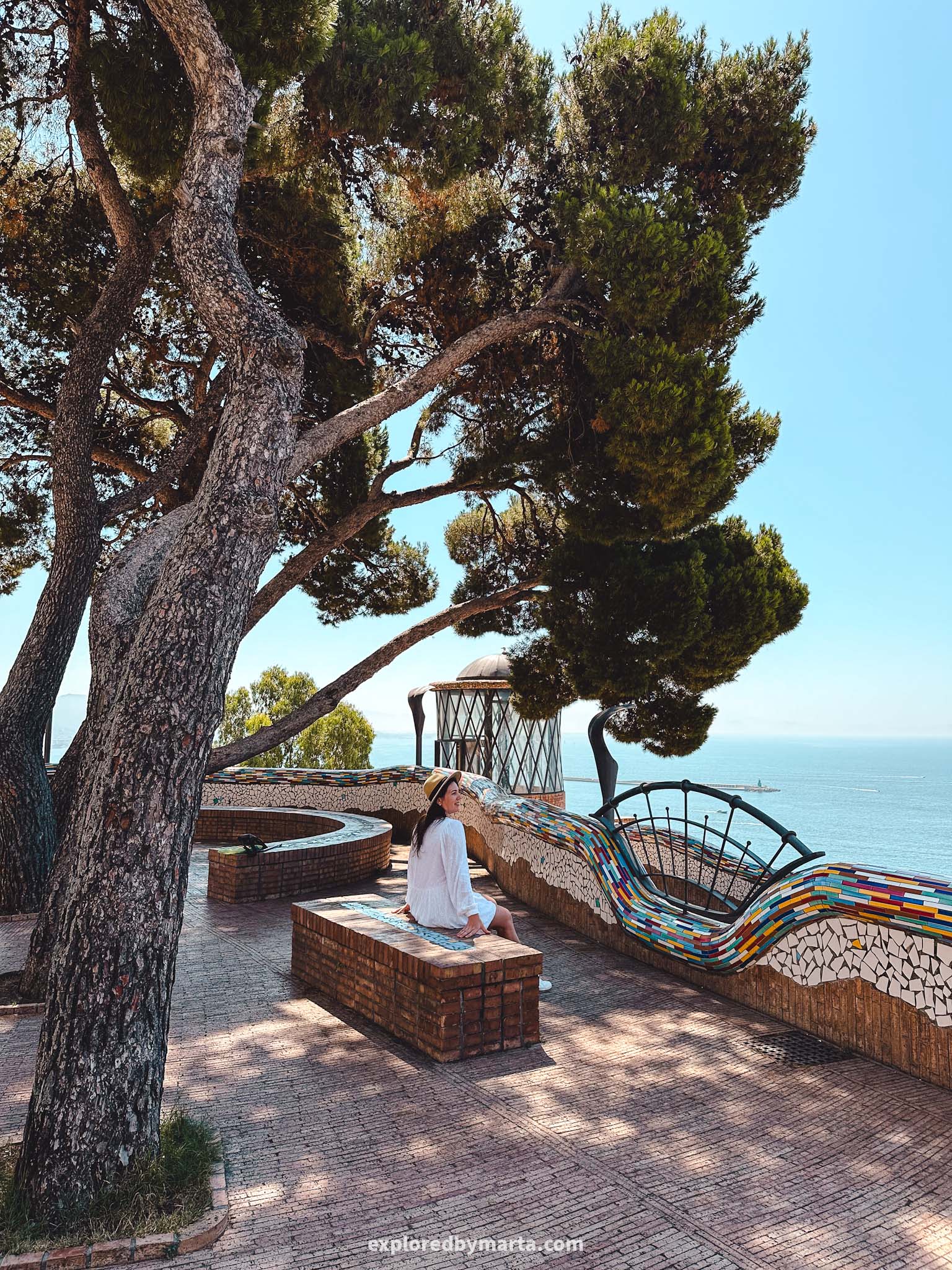
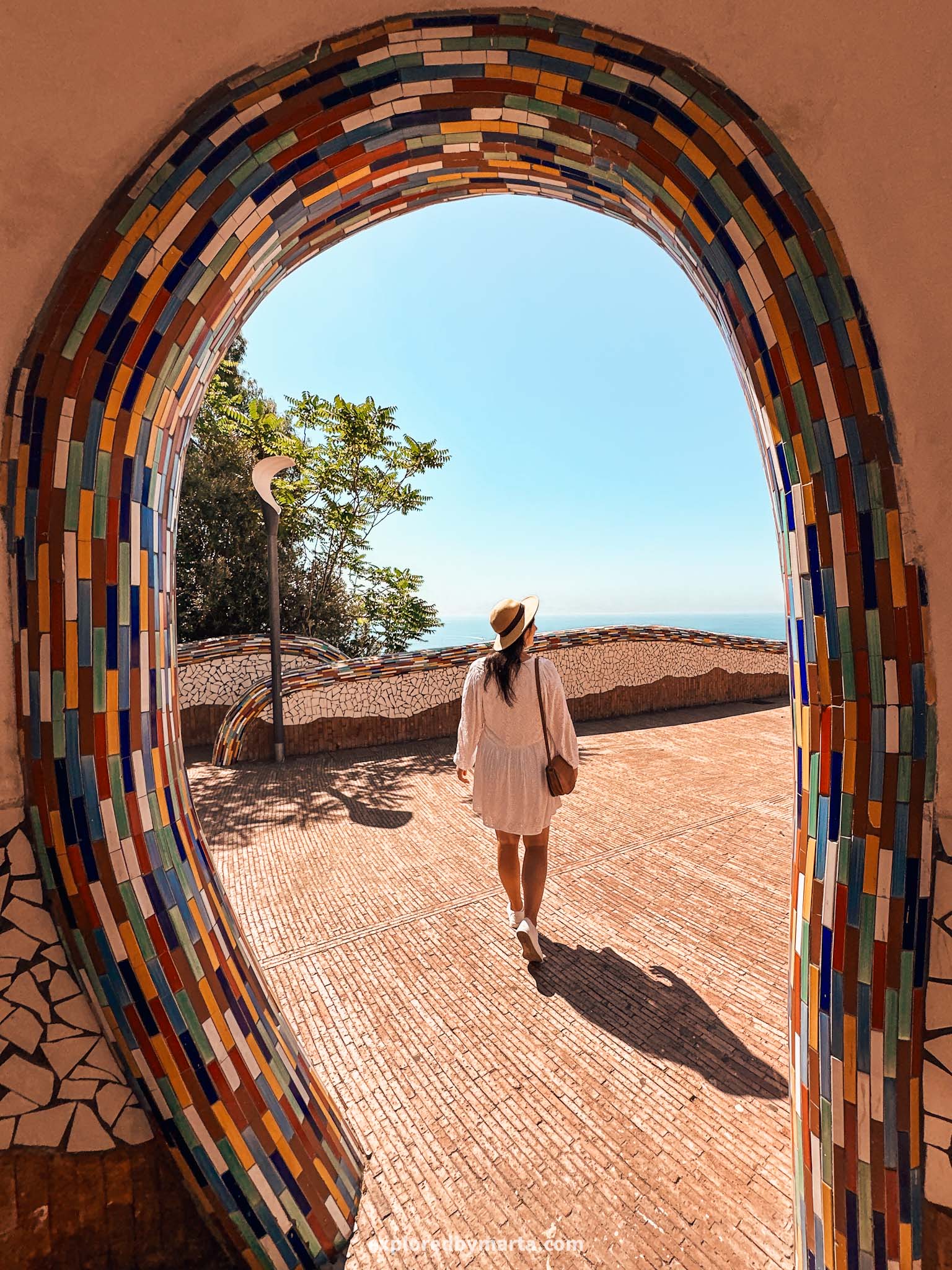
While we are in Vietri sul Mare, let me introduce you to the most beautiful Villa Comunale on the Amalfi Coast!
You may stumble upon places called ‘Villa Comunale’ all around the Amalfi Coast. It typically refers to public gardens or parks where people can freely come, relax, or walk around and admire the scenery.
Villa Comunale in Vietri sul Mare is one of the most impressive examples among all towns on the Amalfi Coast. This unique cliffside garden offers unbeatable views of the Tyrrhenian Sea and the surrounding coastline.

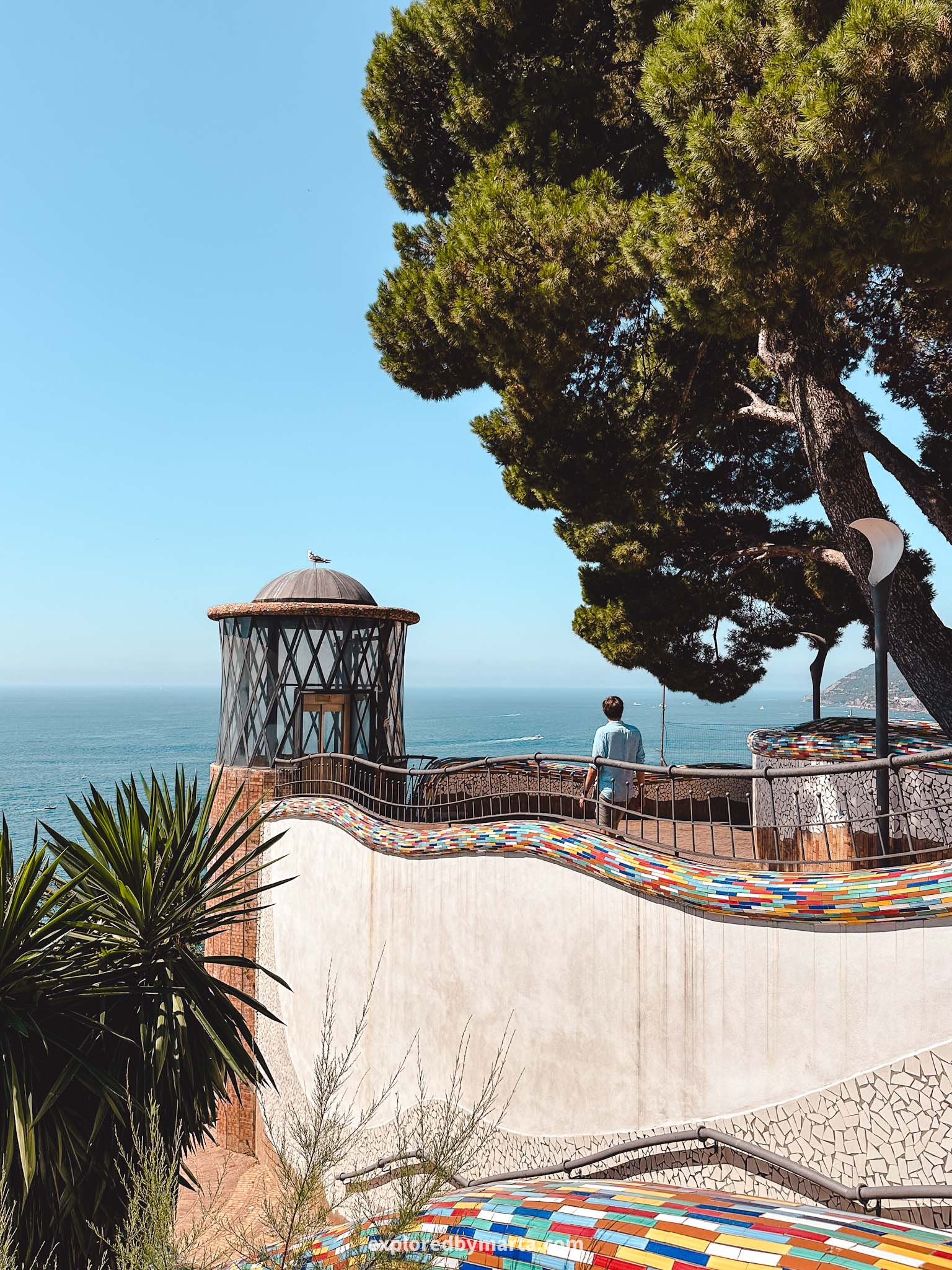
Villa Comunale has opening hours, but you can access it for free. The garden has multiple levels connected by pathways and an elevator. The paved pathways are decorated with mosaics and ceramic details.
It is the most beautiful seaside park I have visited along the Amalfi Coast!
There is also a small amphitheater with seats towards the sea. The only thing missing in this place, though, was shade. Only the upper level of the gardens had a couple of massive trees with seating in the shade. But the beauty of this place was palpable!
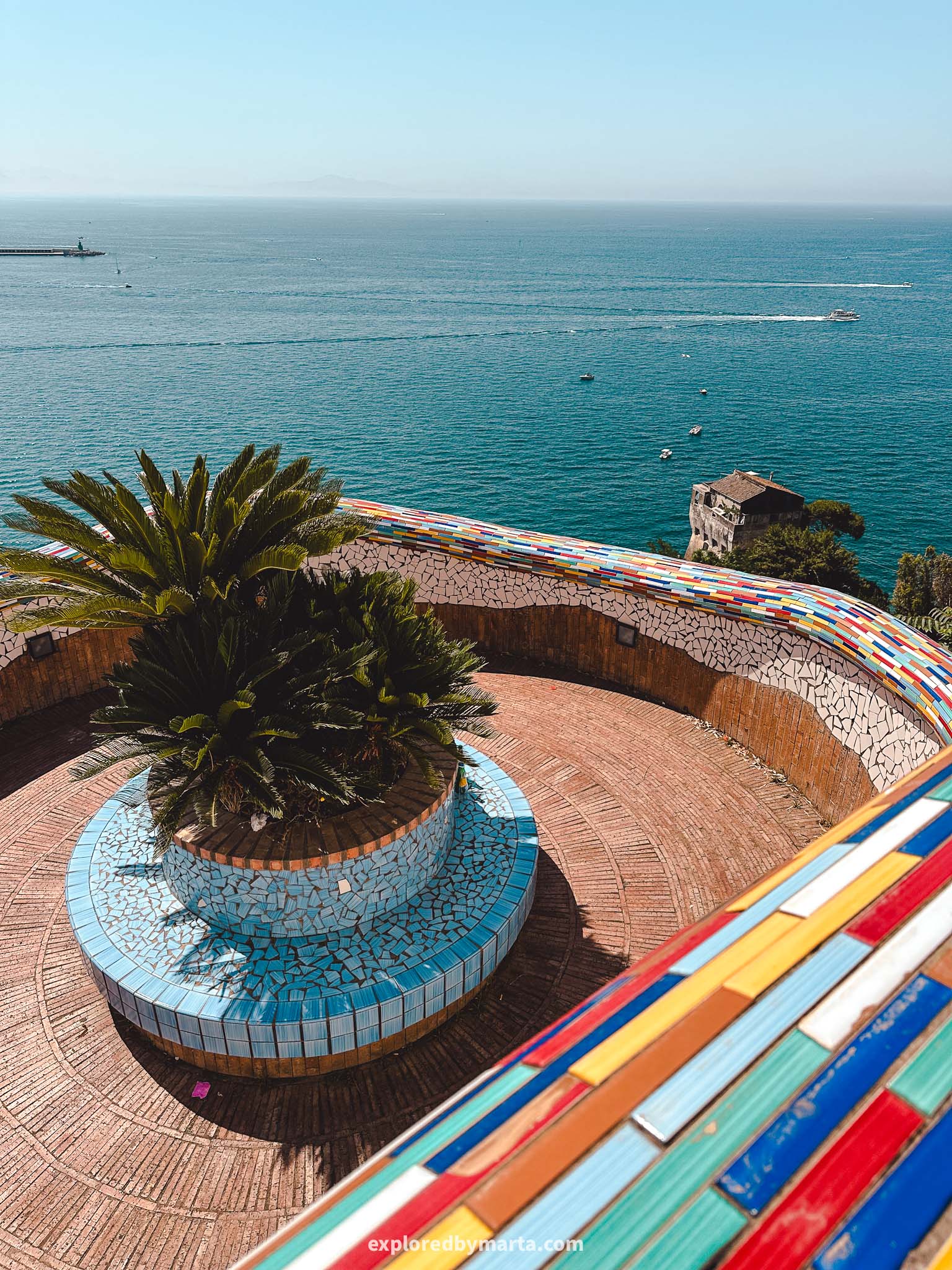
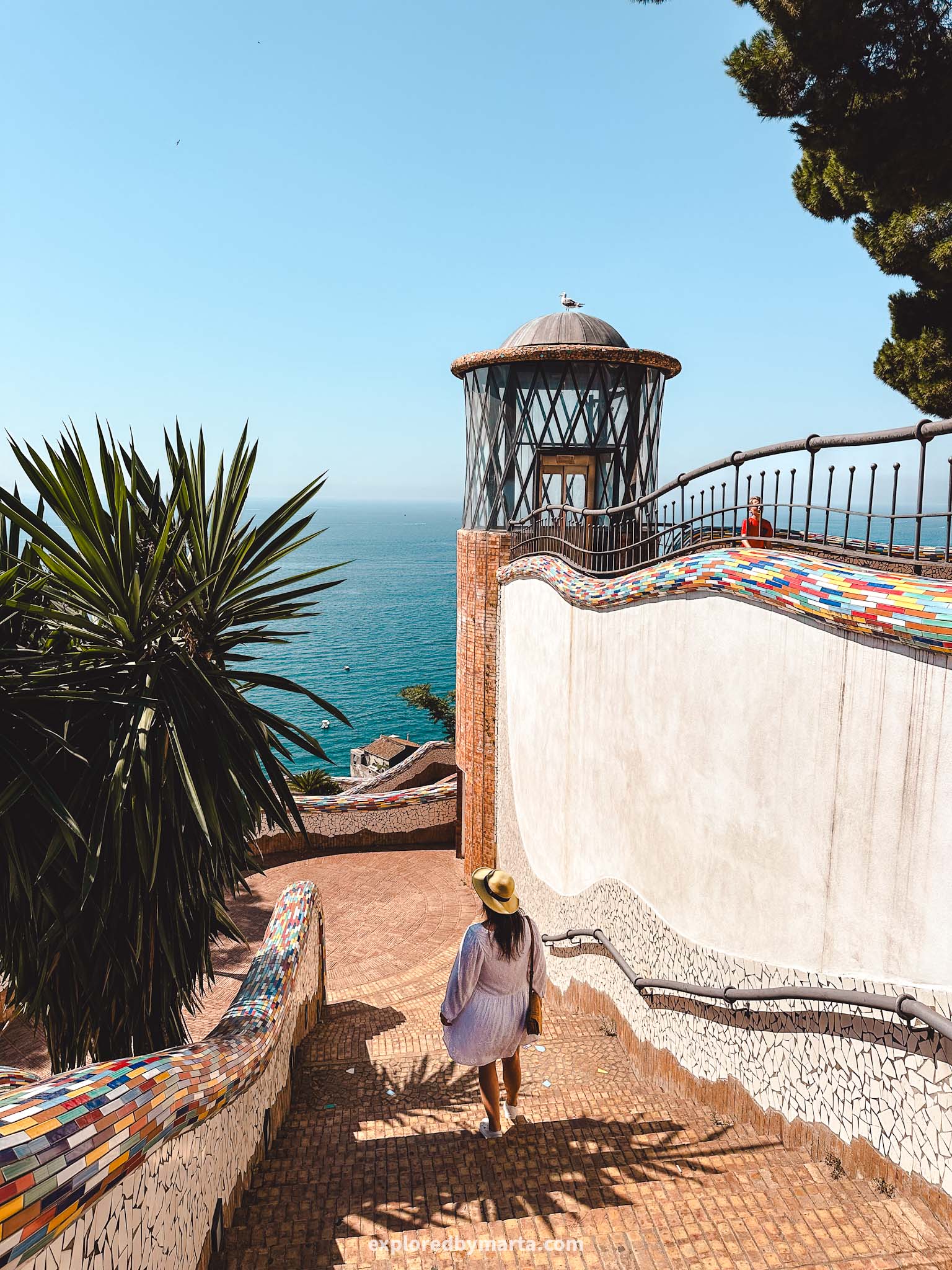
Despite the lack of shade, exploring Villa Comunale was one of my favorite things to do in Vietri sul Mare. The whole park is hanging on a cliffside and is even difficult to find, so we were the only ones there.
And some spots with ceramic mosaics reminded me of Antoni Gaudí’s Park Güell in Barcelona (but on a much smaller scale and with no crowds, haha!).
There is also a restaurant Pane & Panorama, next to the gardens. They open in the evening and place tables and seats on the upper level of the gardens so you can enjoy a magical sunset meal with unbeatable views.
Location: Villa Comunale in Vietri sul Mare
5. Chiesa di San Salvatore in Atrani

Now let’s move to Atrani, one of the lesser-known towns and one of the most picture-perfect places on the Amalfi Coast!
If you’re visiting Amalfi town and have a couple of hours to spare, I highly recommend walking over to Atrani – it is connected to Amalfi with a pedestrian tunnel carved into rock, and you can walk over there in like 10 minutes.
One of my favorite places to visit in Atrani was the wonderful and unique Church of Saint Salvador De’ Birecto. It is one of the most unique churches I have seen, like ever! Do you see how it is situated above the street with a white staircase to access it?
This church is one of my favorite hidden gems on the Amalfi Coast, and not many tourists know about this cool place.
The church dates back to the 10th century, and it played an important part during the 10th-11th centuries when the Duchy of Amalfi or the Republic of Amalfi was an independent country.
At that time, the Duchy of Amalfi was ruled by the Duke of Amalfi, who was crowned, right here on these steps! Atrani still celebrates yearly events, with people dressing in medieval gowns and ‘crowning’ the new Duke at the church stairs.
A cool way to preserve history and tradition!
Location: Chiesa di San Salvatore de’ Birecto
6. Secret sanctuary & heart-shaped cave above Atrani


If you are looking for some *actually* hidden places on the Amalfi Coast, this one is for you! Only a few people get to visit this place in a day!
Situated on a rock outcrop over 700 steps above Atrani is a small 12th-century sanctuary, Santuario Santa Maria del Bando. Right next to it, there are also a couple of caves carved into the rock, including a beautiful heart-shaped cave.
These places are behind a gate, and you can’t visit them on your own, but you can get there if you book an appointment online (I sent a DM on Instagram) a day before and arrange a tour with a local guide. The tour is free, but we gave him a tip.


The guide offered us the sunrise tour, and we agreed – the best decision ever! If you can organize it in the morning, go for it!
So we came back to Atrani the next day before sunrise and climbed up to the sanctuary while it was dark. At first, we toured the two caves (there once was a monastery, you’ll see some ruins there!) and then finished the tour at the sanctuary.
One of the caves had the shape of a heart, and this is where we waited for the sun to come up. It was pretty magical. One of the most memorable experiences I had while traveling around the Amalfi Coast!


After the caves, we toured the little sanctuary dating back to the 12th century. It has a beautiful tiled floor, a massive bell, and the most breathtaking views of Atrani and the Amalfi Coast in the background.
This is where I understood why Atrani is called ‘the real-life nativity scene’! The tiny houses down below looked like Lego pieces, haha.
We were so lucky to have a beautiful sunrise that morning. This was the best way to start the day! No matter where I looked, the views were just spectacular. There’s no guarantee you’ll get the same views, but you can check the forecast before and decide for yourself.
Location: Santuario Santa Maria del Bando
7. Ruins of the San Eustaquio Basilica
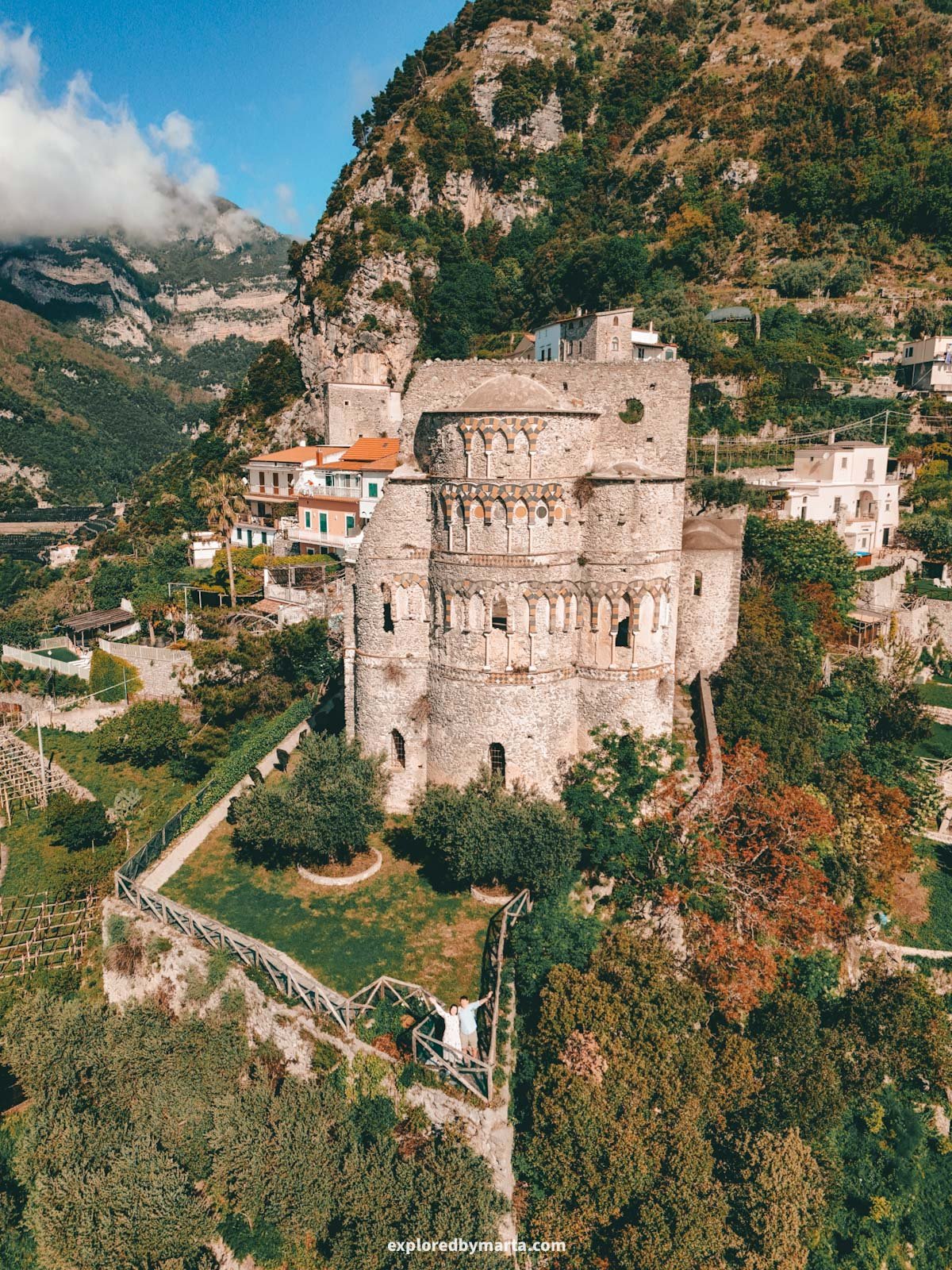

Located up in the mountains in Scala Municipality, right above Amalfi town and just a short ride from Ravello, is one of my favorite hidden gems on the Amalfi Coast – the ruins of the San Eustaquio Basilica.
Scala is the oldest town on the Amalfi Coast, and the ruins of San Eustaquio Basilica is a place of rich cultural heritage and a reminder of the past glory of the Amalfi Coast. It is one of the most unique historic churches in the area.


The medieval basilica (or its ruins) is perched on a high mountainside, and a thousand years ago it was the largest and most important basilica in the entire Republic of Amalfi.
It is a truly serene place with the most panoramic views of Atrani and Amalfi towns below. We stumbled upon this gen by accident, and I’m so glad we got to visit this place.
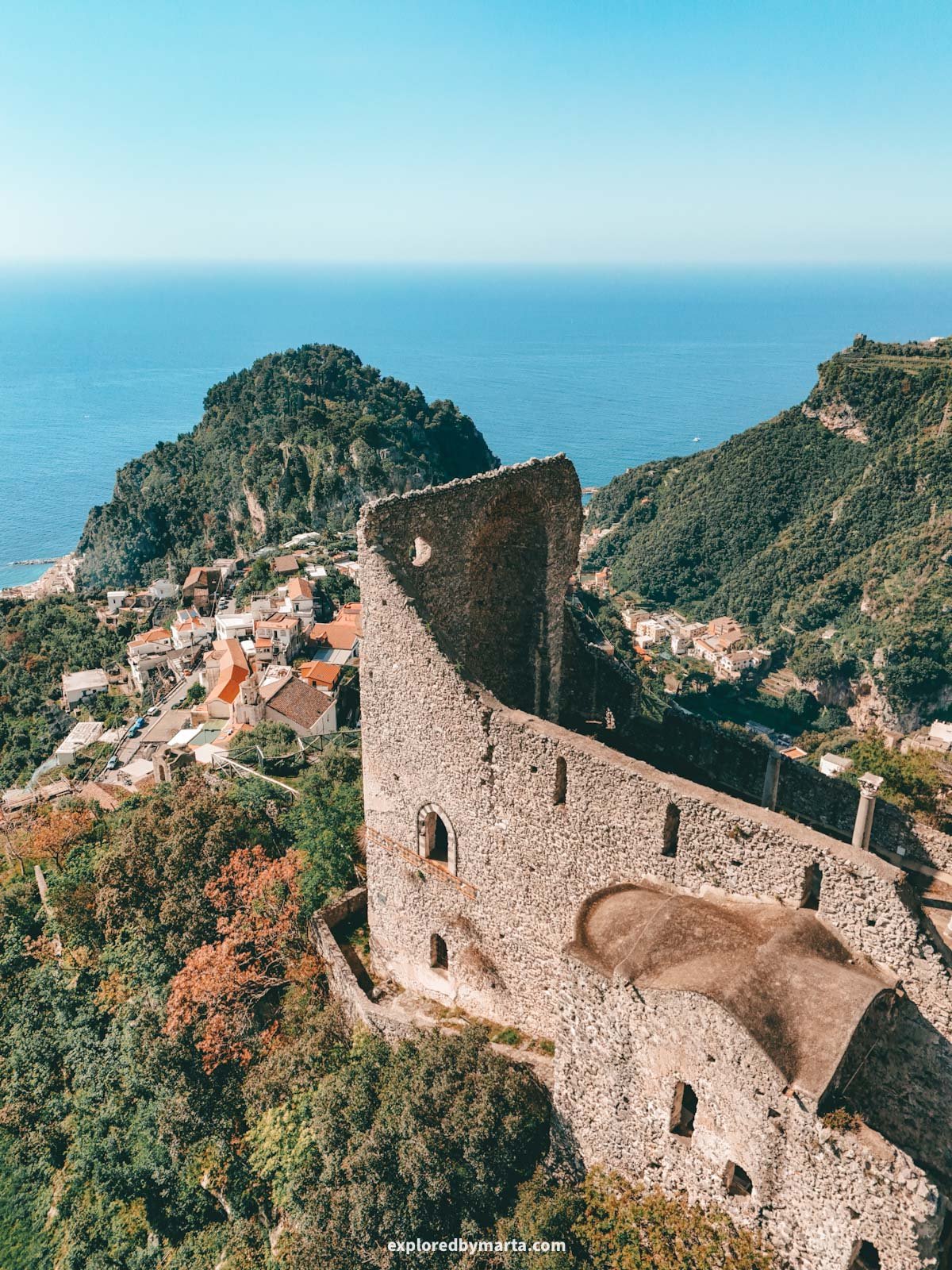
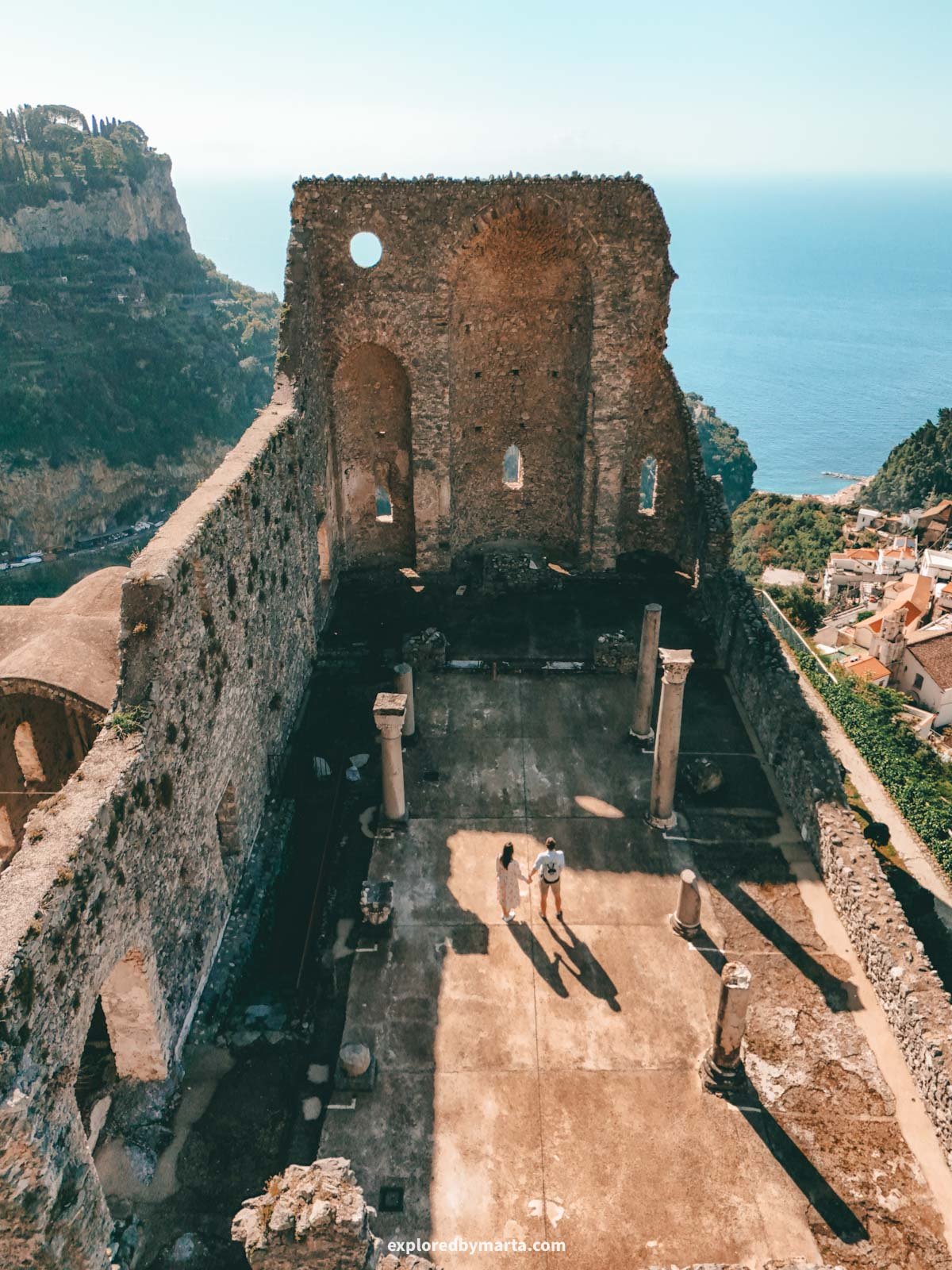
The basilica was built by the wealthy D’Afflitto family, who lived in Scala and claimed to descend from Saint Eustachio.
This place does have opening hours, and there was a gate, but when we visited, the gate was open and nobody was there, so we just strolled around, exploring the basilica, the views, and its underground crypt reached from the left aisle by a staircase.
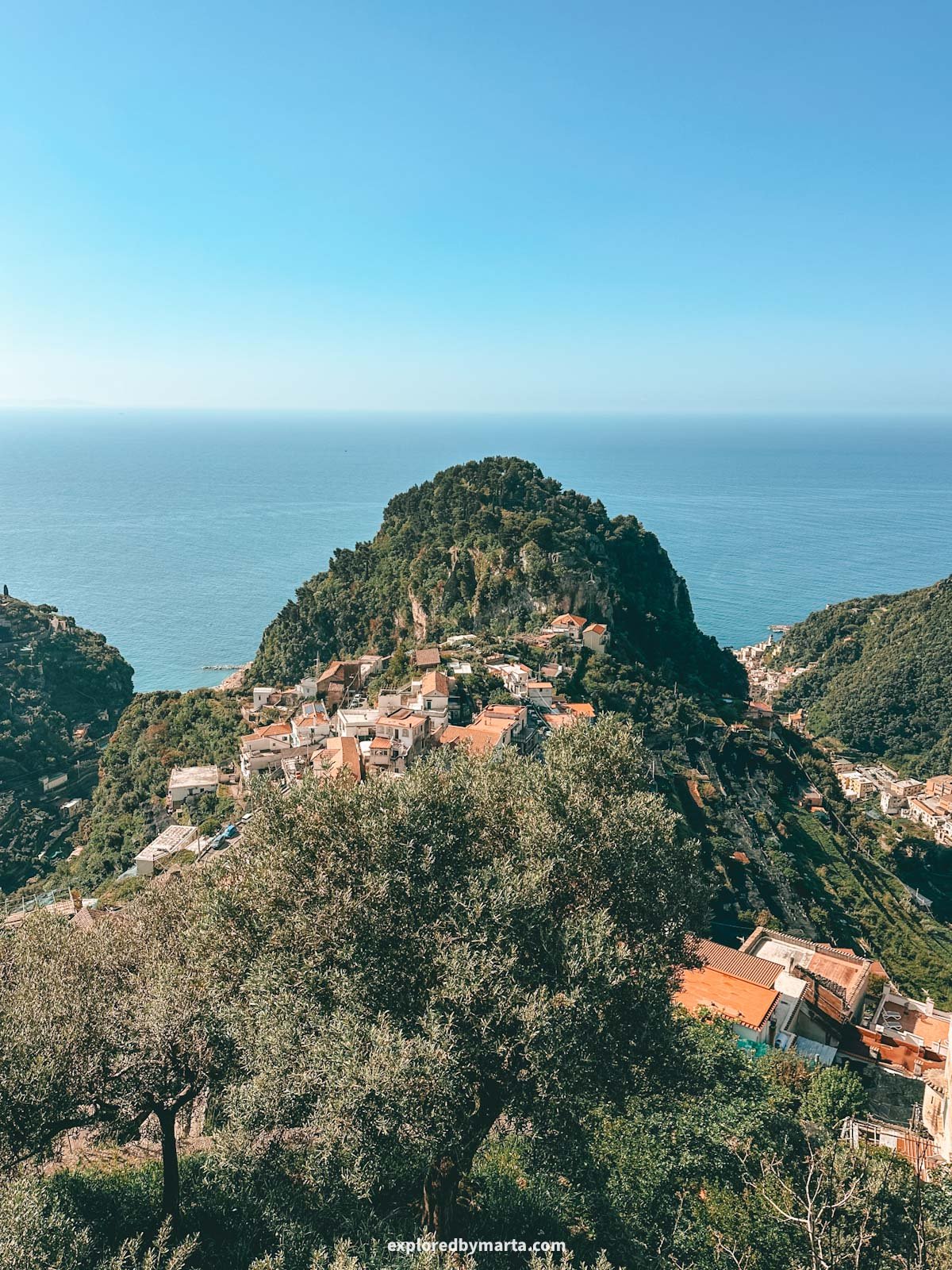
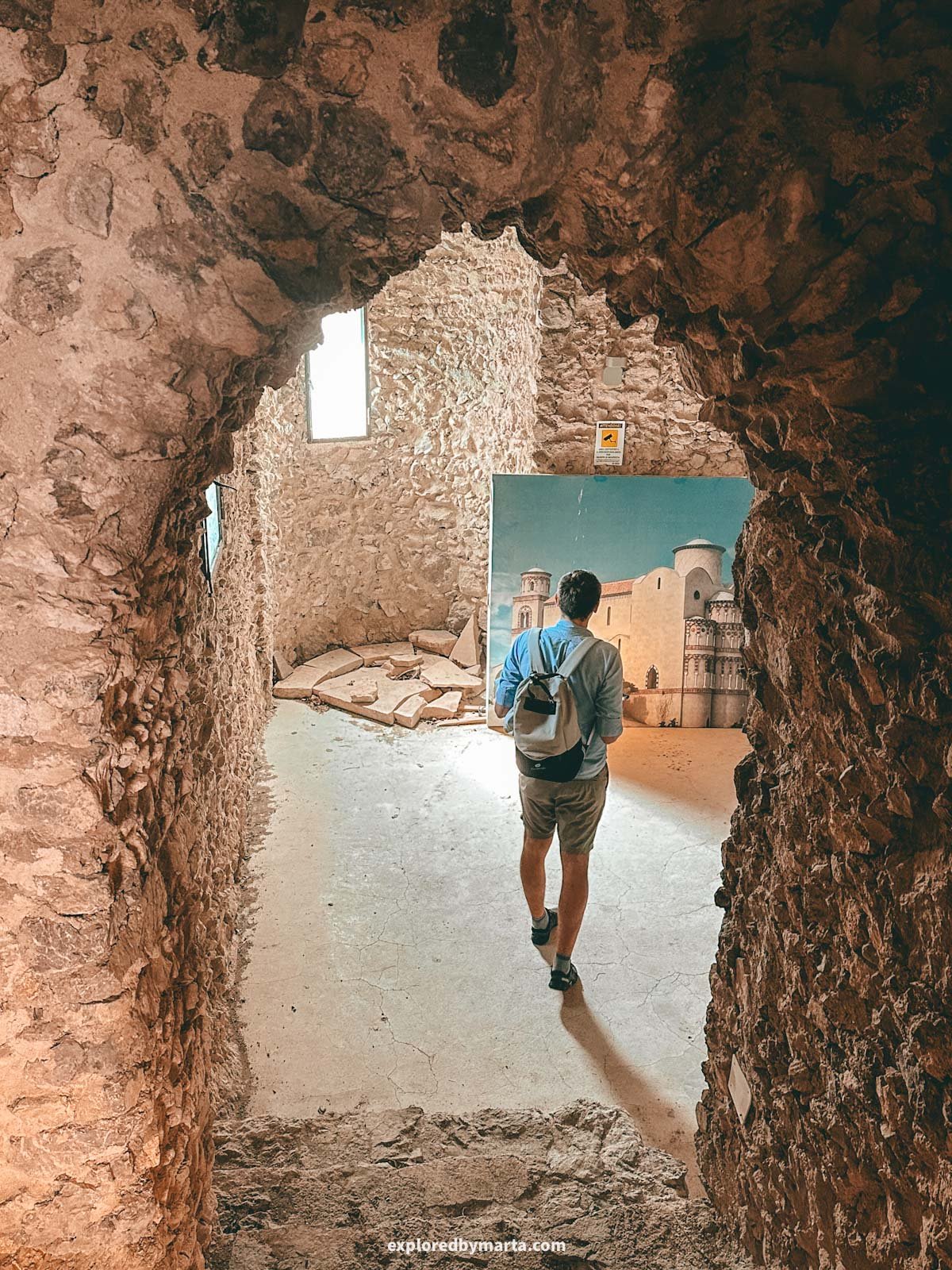
I especially loved the marble columns as well as the Arabic design elements you can see on the basilica’s facade. The basilica was an absolute masterpiece and one of the Amalfi Coast’s hidden treasures.
Even today, the basilica is rented as a wedding or event venue! We loved this place! It was, for sure, one of the most beautiful buildings on the Amalfi Coast back in the day!
Location: Ruins of the San Eustaquio Basilica
8. Castello di San Nicola de Thoro-Plano in Maiori
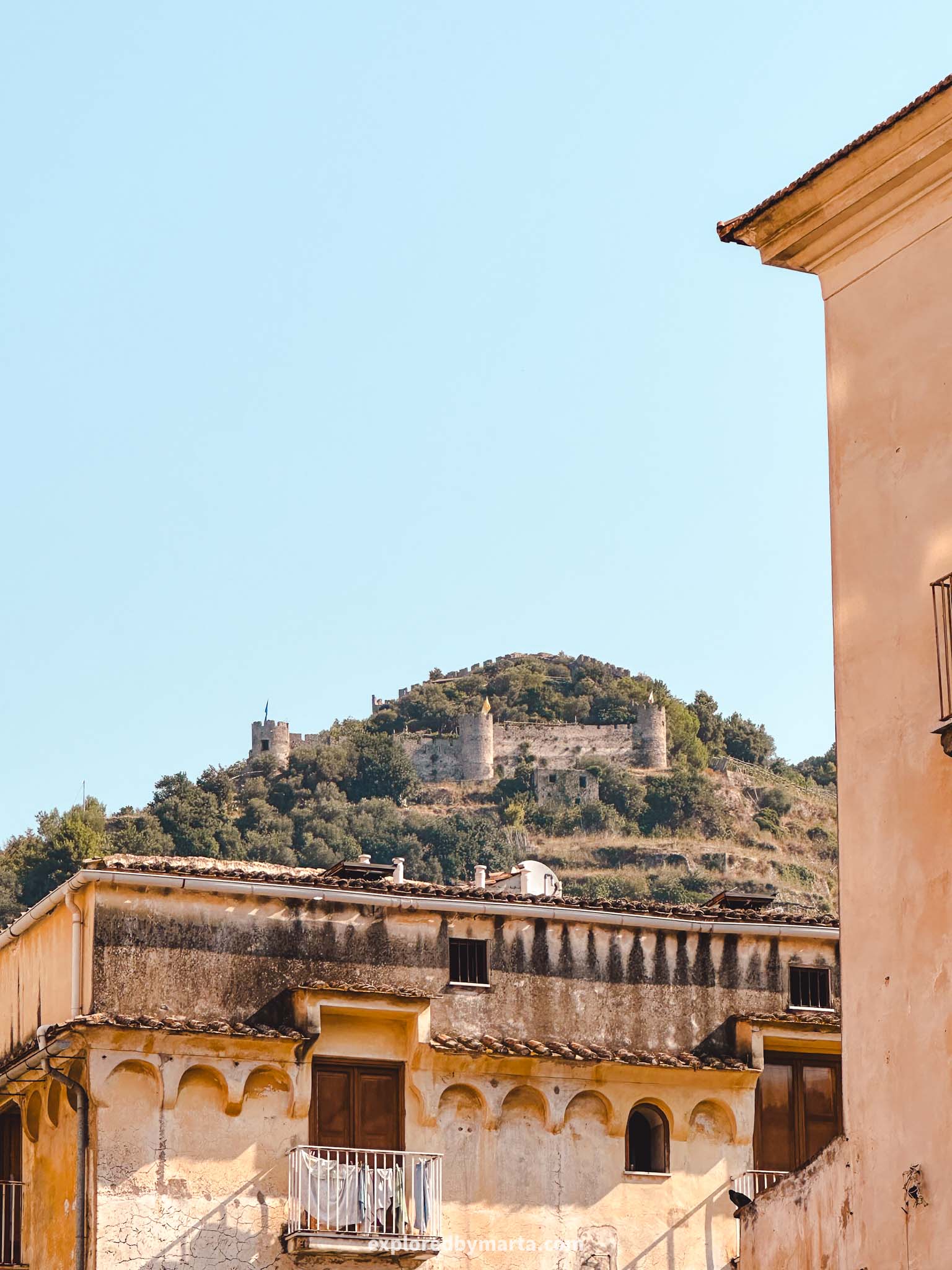
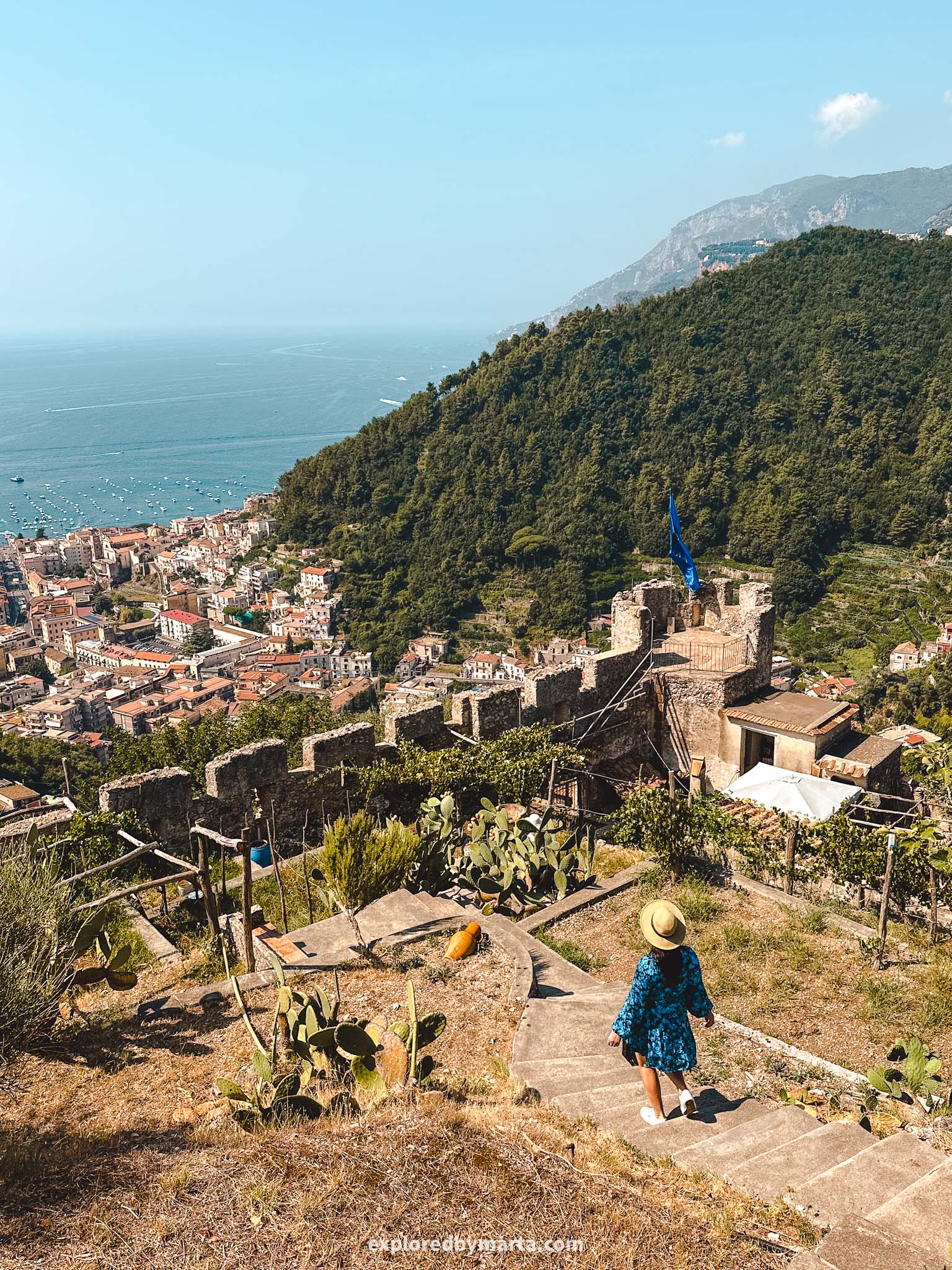
If you’re staying somewhere nearby Maiori, I have some unique spots for you as well!
If you have some time and energy left after all the travels and you want to escape to a quieter place, I recommend visiting one of the most impressive historic landmarks in Maiori, Castello di San Nicola de Thoro-Plano.
The 9th-century fortress stands atop a hill deeper inland, overlooking the coastal town of Maiori and offering the most spectacular views of the peninsula. You can access it from the Maiori center by a well-marked stairway.
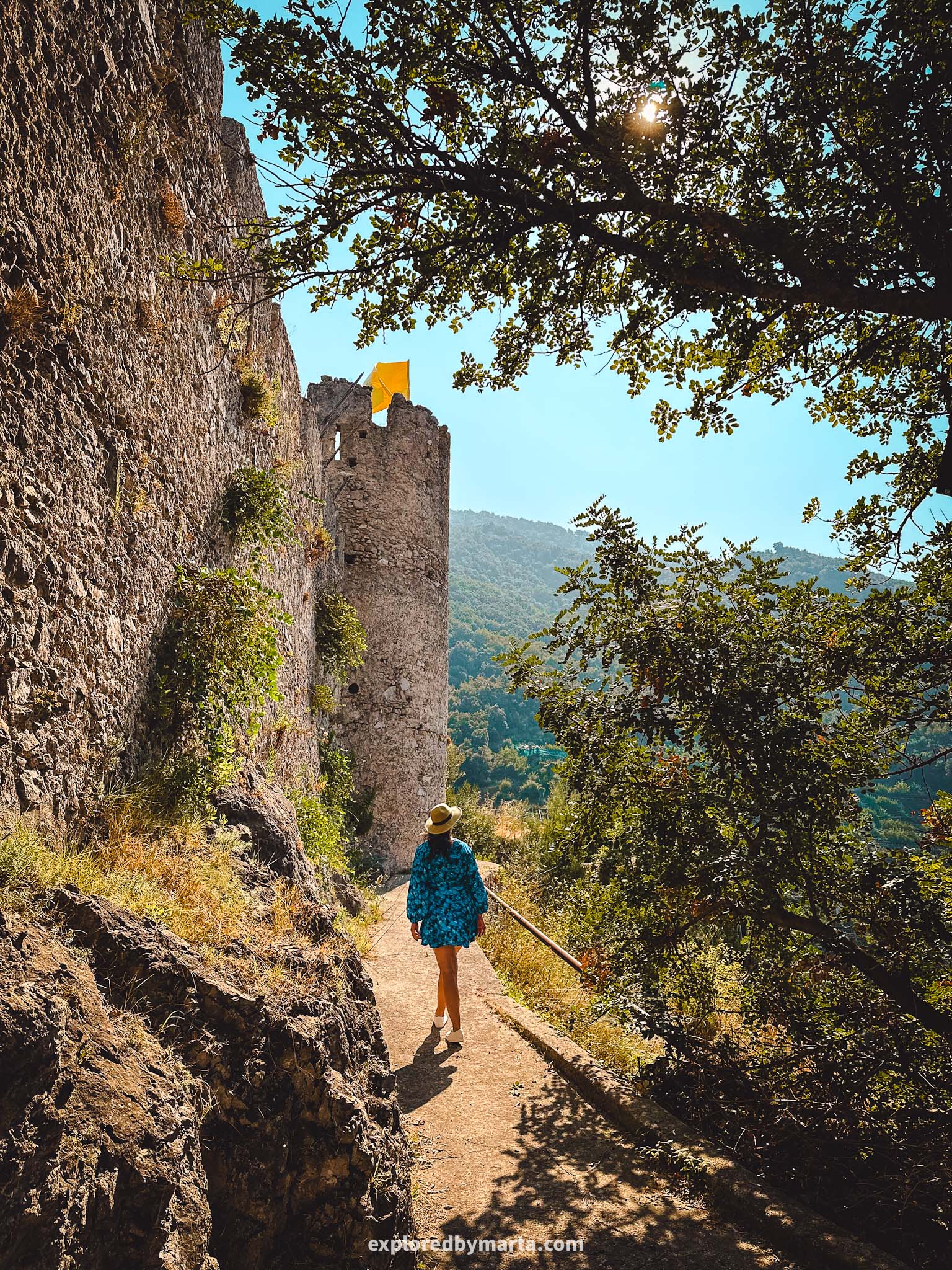
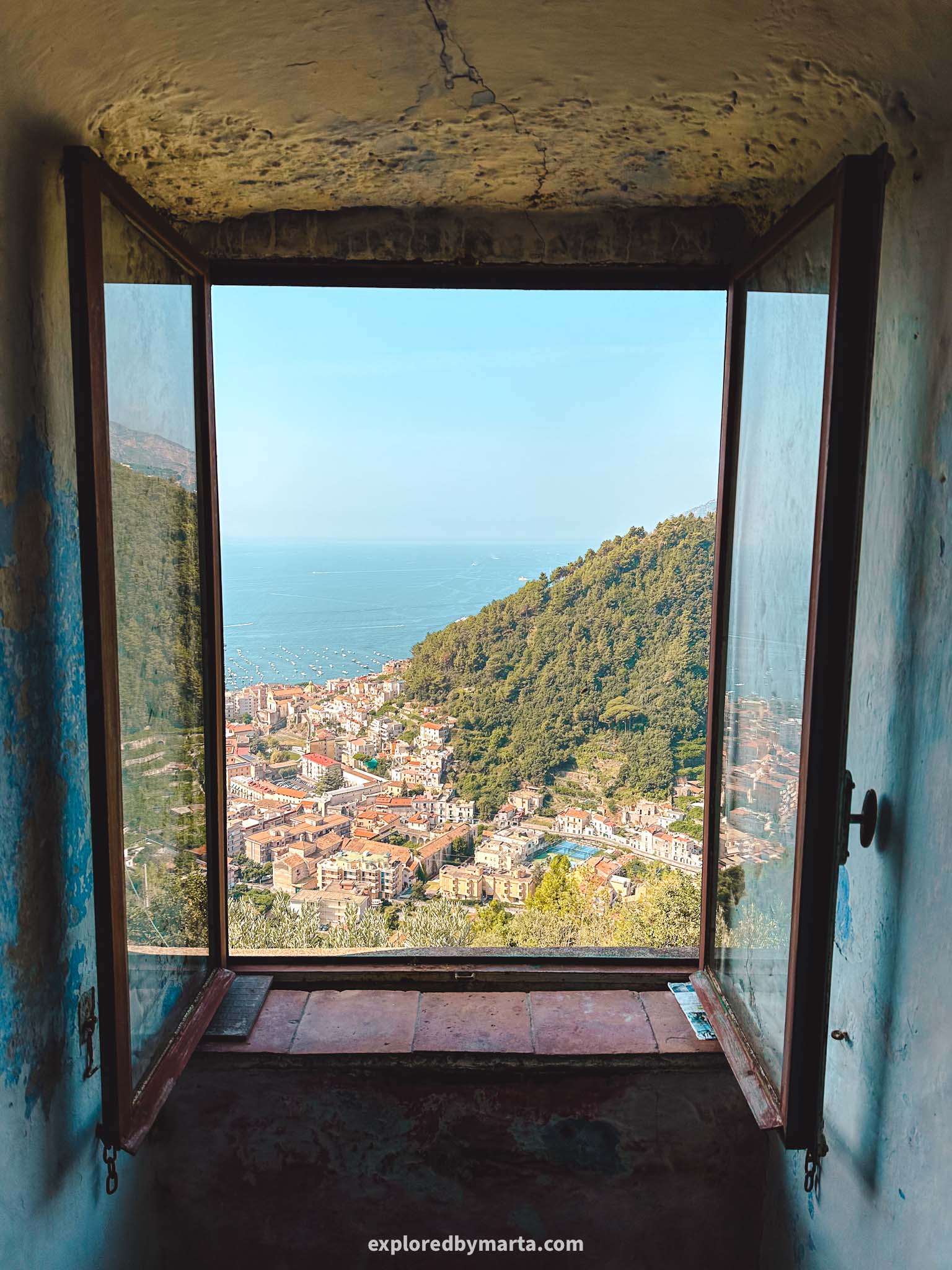
The castle, however, is not really a castle but rather Medieval stone walls with defensive towers built as a shelter for locals to go to when pirates arrived to loot their homes down by the coast.
The castle today is a family-owned rural property. After a 20-minute uphill climb from Maiori up to the castle, we were greeted by an elderly man who oversees it.
And he lives there tending to his orchard, garden, and rabbits! Definitely one of the most unique places to visit in Maiori!
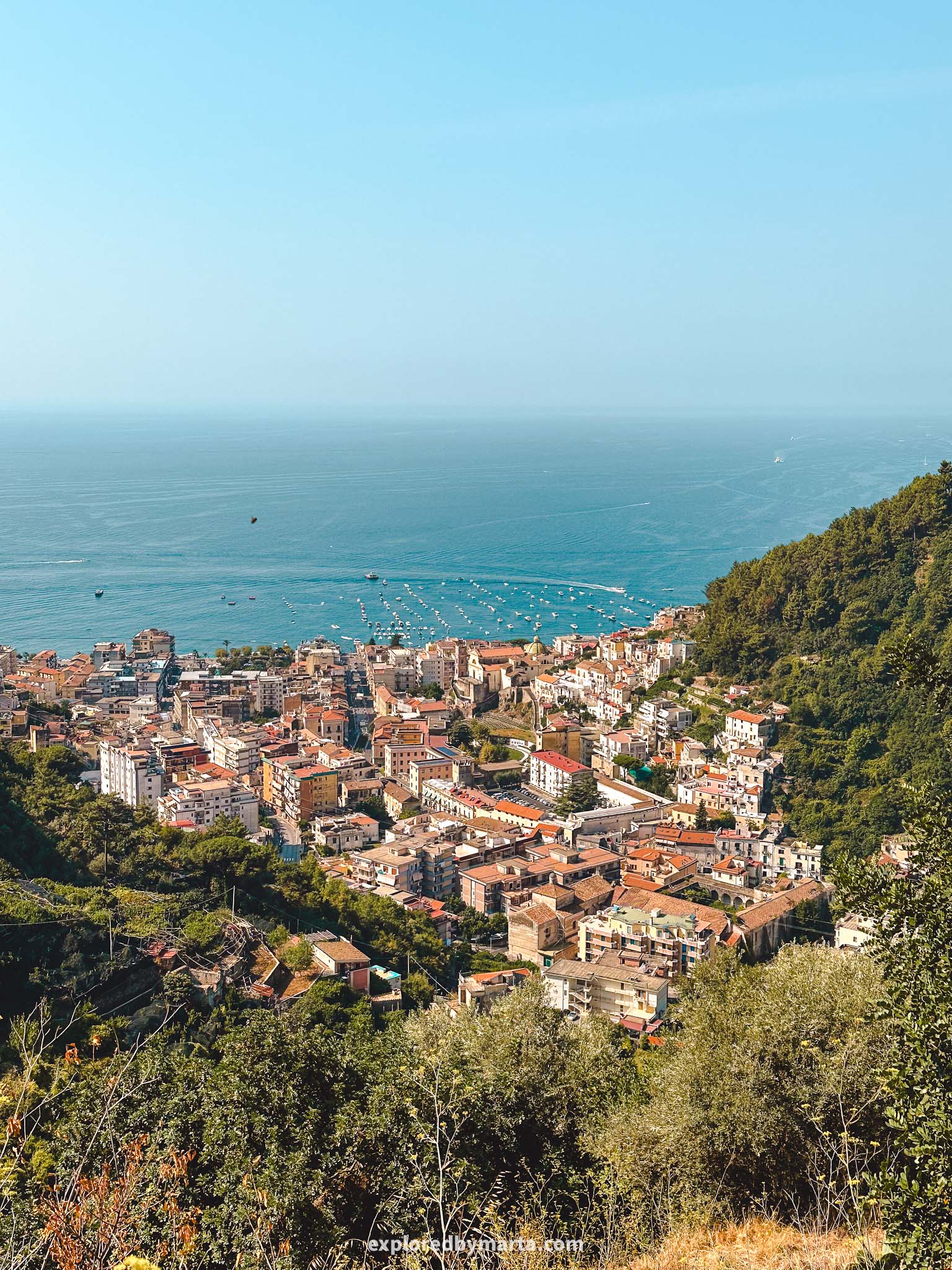
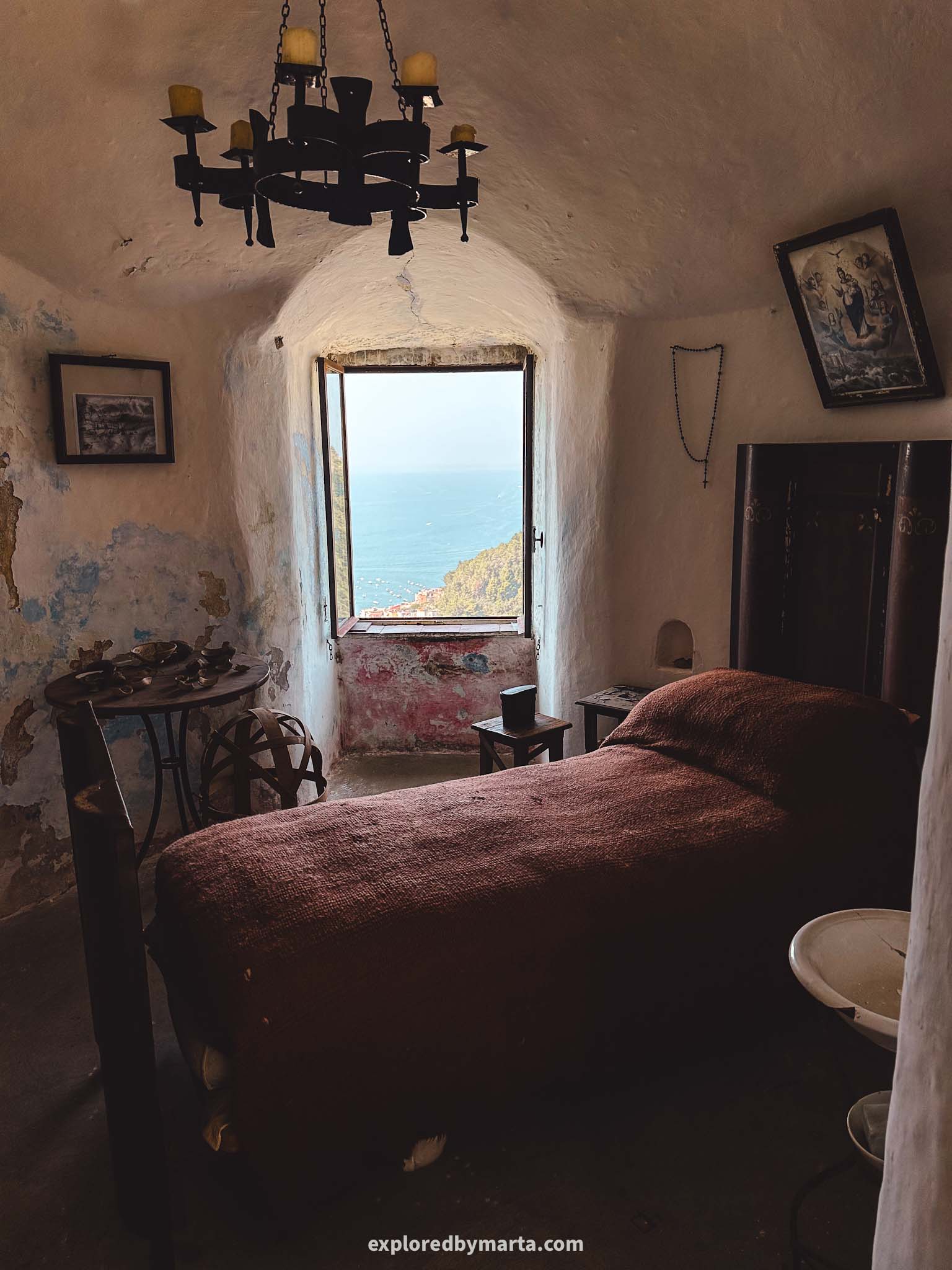
There is no entrance fee, but you are free to leave donations or buy some of his local home-grown products. With the help of Google Translate, he showed us around the whole property and all the traditional buildings he and his family have restored and preserved.
We were the only ones visiting, and we felt welcome! He also gave us some fruit from his garden and laughed that he has a more beautiful view and a more peaceful life than the billionaires in their yachts, which he regularly sees down below.
There isn’t much left of the medieval fortress, but the atmosphere and the views are definitely worth it. It seemed like a peaceful oasis for this man to live in, and he seemed really happy. If you love to discover places off the beaten path, this is the perfect hidden gem for you!
Location: Castello di San Nicola de Thoro-Plano
9. The 13th-century Torre Normanna in Maiori
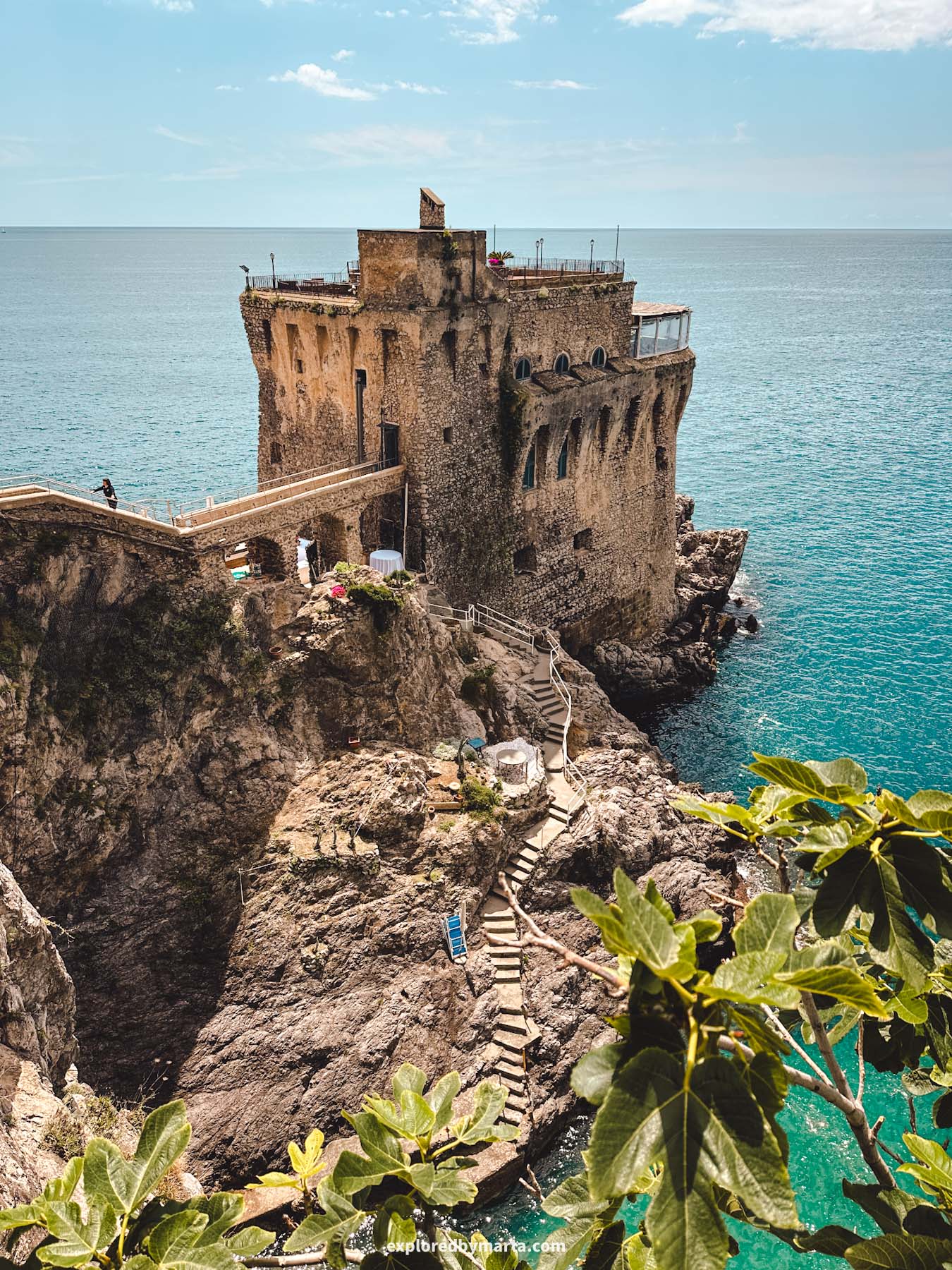
Are you looking for a restaurant with a view? For a special occasion, there’s no better place to celebrate life than at one of Maiori’s most iconic historical landmarks – the 13th-century Torre Normanna watchtower.
This medieval structure is one of several defensive towers built along the Amalfi Coast to protect the villages from pirate attacks. This particular watchtower is the oldest of them all.
Today, the Norman Tower is privately owned and houses a renowned restaurant offering panoramic views of the Mediterranean Sea and the mountains of the Sorrentine Peninsula.
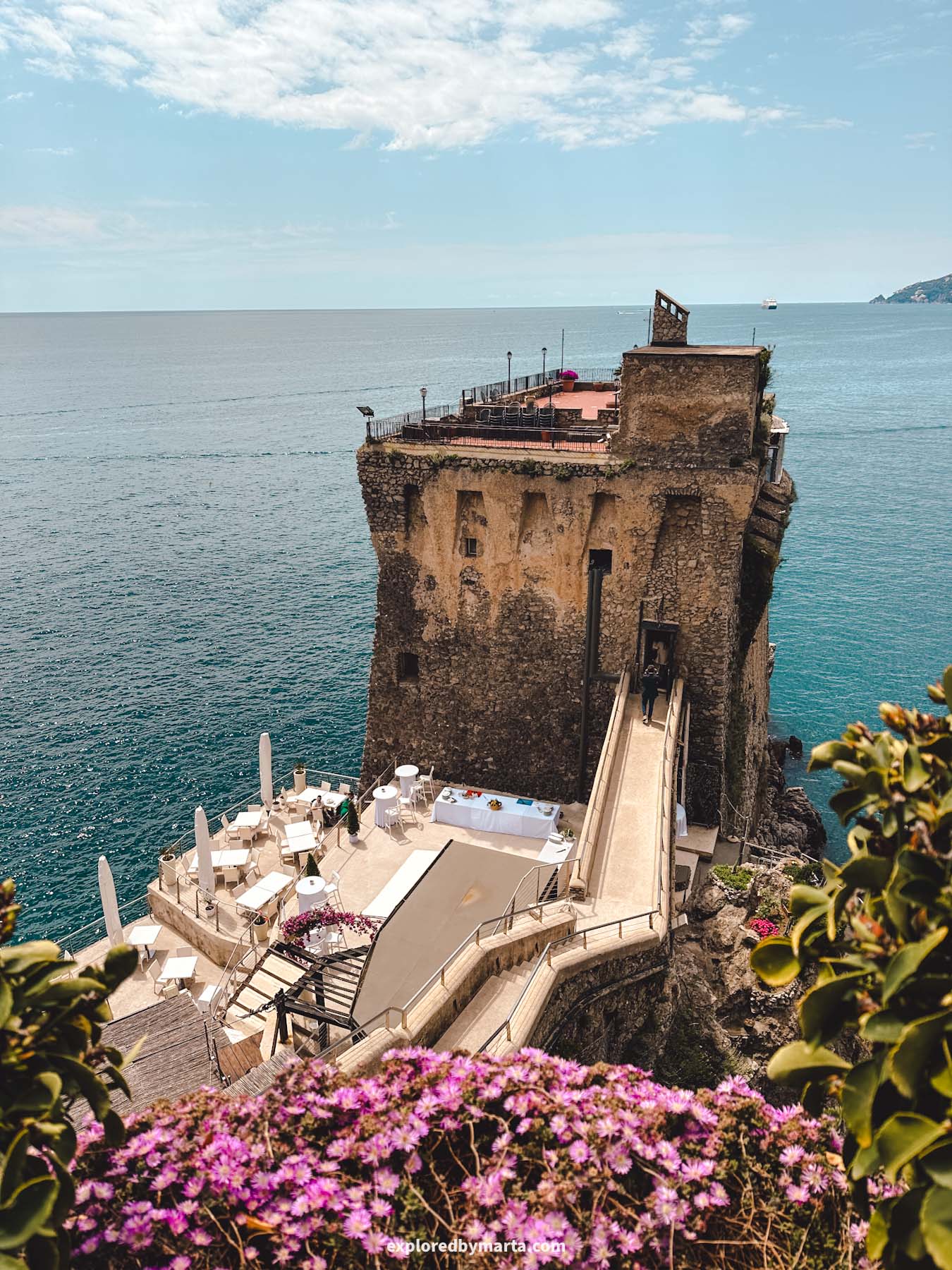
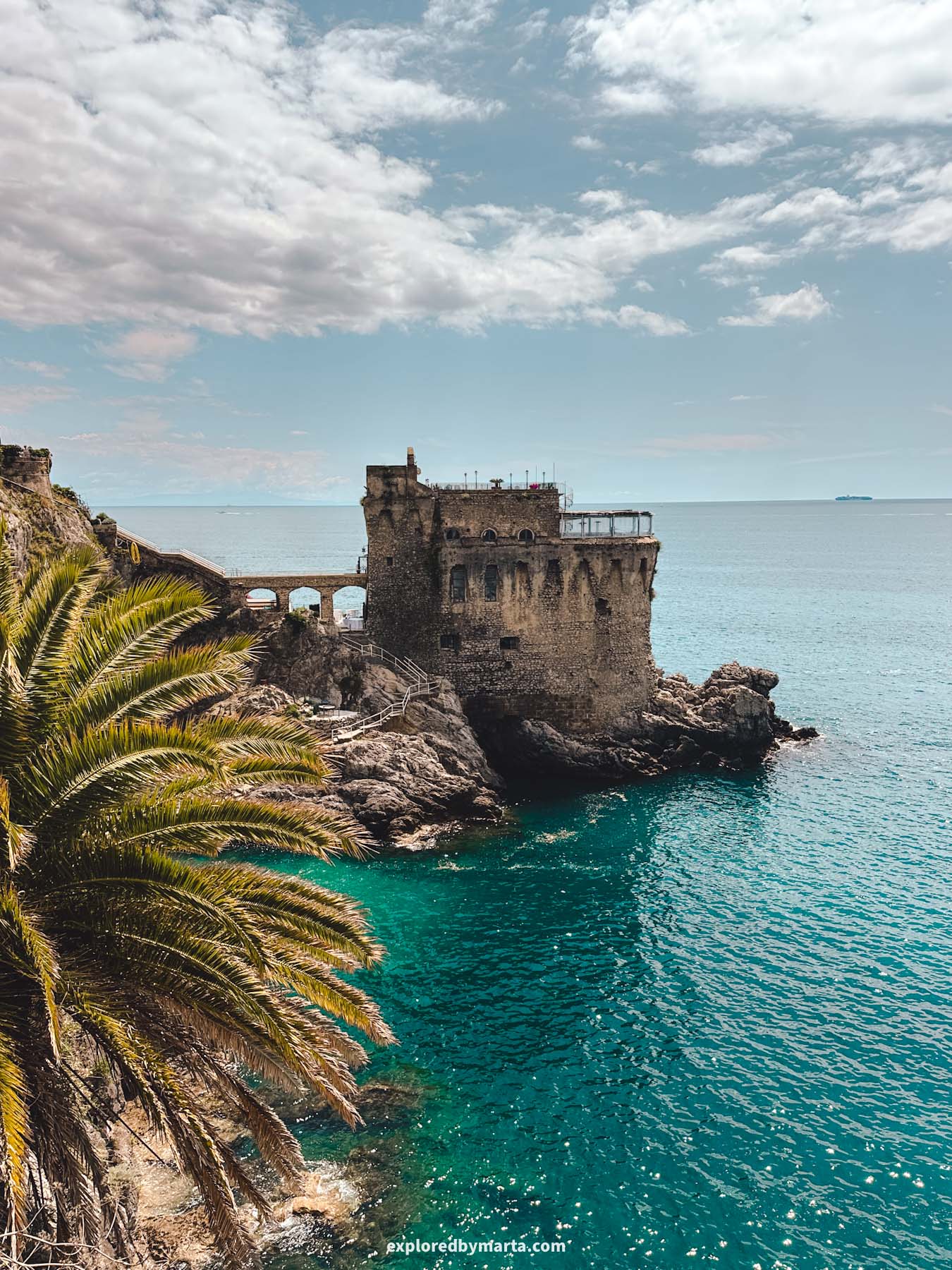
If you’re looking for a scenic lunch spot or have something to celebrate, I highly recommend checking out Ristorante Torre Normanna.
They offer seating on the rooftop, inside the tower, and on terraces closer to the water for a more intimate dining experience.
Just make sure to make a reservation or double-check with them if they’re open before you go! It is a popular place to celebrate weddings and other life events, so it may be closed for private events.
Location: Ristorante Torre Normanna
10. Farm-to-table restaurant with a view in Minori
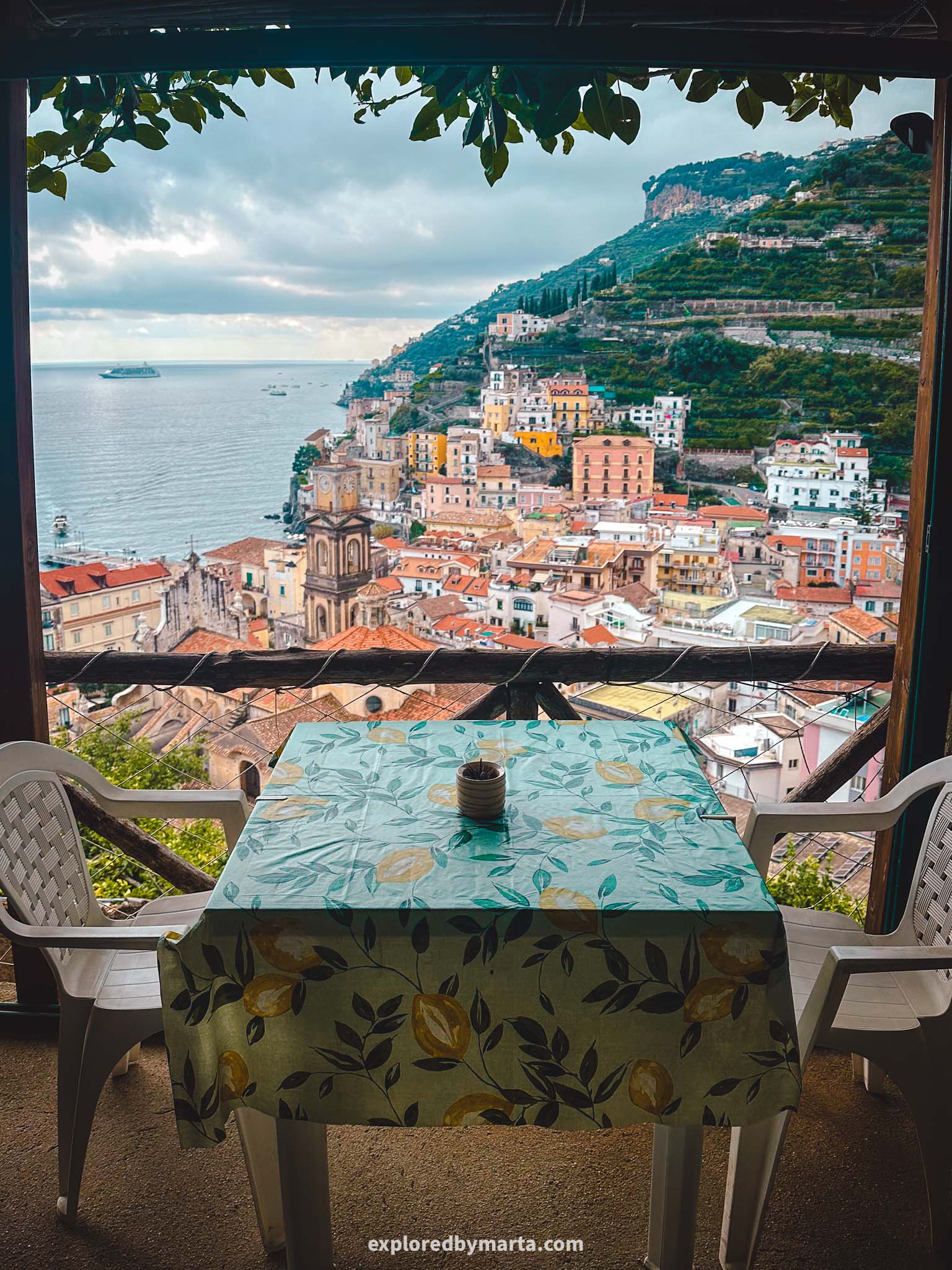

For a much simpler dining experience, there is another hidden gem I want to recommend nearby. This restaurant is located in the small village of Minori, right next to the Path of the Lemons walk, one of the most famous hikes on the Amalfi Coast.
The family-run restaurant is called Azienda Agricola Cuonc Cuonc, and it boasts a terrace with some of the most iconic views of the Minori’s pastel-coloured houses below.
The owners of this restaurant have a farm where they grow their own fruit, vegetables, and keep animals so they can produce their own ingredients like cheese, pasta, preserves, meat, sauces, and more.

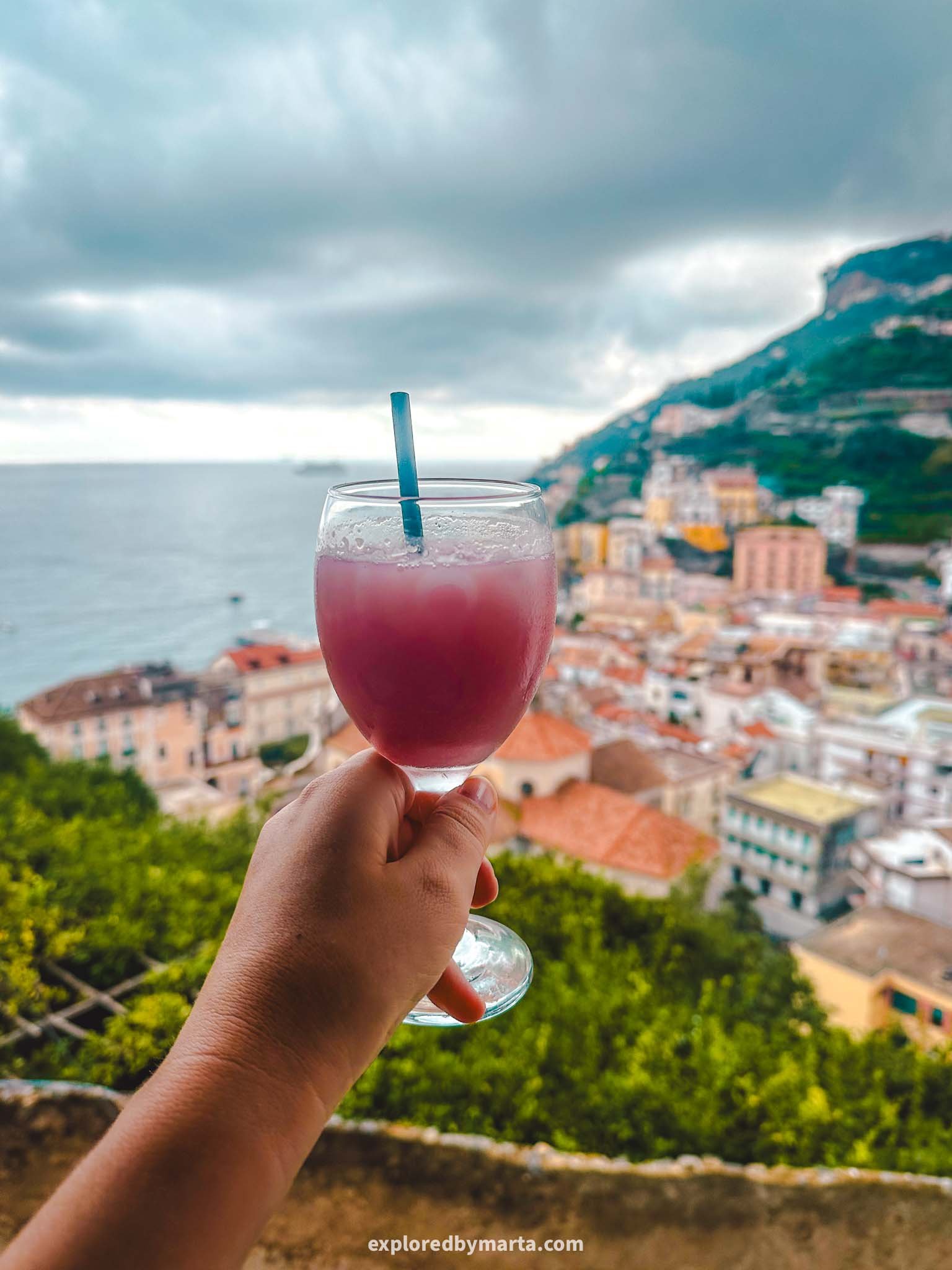
So, in this restaurant, they serve dishes that they can prepare on their own with their homemade products and farm-grown ingredients. Dining in such places is a true, authentic experience to have on the Amalfi Coast!
Although I did appreciate the effort that was put into making these dishes, for me, the view from the terrace was the icing on the cake. I was constantly staring at the view while eating, haha.
We ordered a cheese board with jams, pasta with some kind of meat, and homemade drinks. The restaurant is definitely a bit rustic, like being a guest in a rural home. Plus, the menu is very limited, but overall it was a really nice experience.
Location: Azienda Agricola Cuonc Cuonc
11. Waterfall hike to Valle delle Ferriere in Amalfi


Distance: 8.2 km or 5.1 miles circular
Difficulty: moderately easy
Elevation gain: 400 m
Duration: 2h 25 min
Amalfi town provides some beautiful landmarks, and it is a must-visit place on the Amalfi Coast; however, it does get crowded.
If you want to escape the crowds, you love hiking and walking in nature, then the waterfall hike from Amalfi to Valle delle Ferriere is something you should definitely consider!
Amalfi Town is surrounded by lush vegetation and mountains, lemon groves, and green forests, making it the perfect place to enjoy a peaceful hike along a gurgling river and fragrant forest paths.


Valle delle Ferriere is the most popular hike you can do from Amalfi Town. You can start from the beach, the main square, or pretty much anywhere in town.
At first, the trail follows the main street, Via Lorenzo D’Amalfi, heading deeper into the valley. Once you reach the Paper Museum, turn right and follow Via Paradiso, a smaller path that leads toward the mountains.
The path eventually turns into a forest trail, continuing alongside the river and passing several abandoned water mills and waterfalls. It’s pretty straightforward, and the surroundings are absolutely mesmerizing.


The trail officially ends at a waterfall deep in the valley. What’s left is to go all the way back to Amalfi the same way you came, or choose a different route (like we did) and walk back through Pontone village and then down the stairs from Pontone to Amalfi.
It was one of my favorite hikes we did on the Amalfi Coast, and you can tailor the hike to your needs – you can make it shorter by turning around sooner and walking back, or doing a loop like we did and passing by Pontone.
By the way, the stairway from Pontone to Amalfi was spectacular. The stairs bend around a cliff, and you have the best views over the lemon valley below!


There are a couple of signposts along the way, but I recommend downloading an offline map and following directions there.
The best offline trail maps I’ve used are the Organic Maps app and MAPS.ME app. You can also check our Strava map, which I added above!
The total distance of the hike was between 7 to 8 kilometers (4.5 to 5 miles), and it took us a little over 2 hours, including plenty of photo stops. This hike is very doable at any time of day, as the trees provide lots of shade and protect you from the direct sun.


I should mention that the last 200 meters of the trail at the end of the valley (including the final waterfall) are in a restricted area. There may or may not be guides there controlling access to it.
That said, even if you’re not able to reach the very end, it won’t take much away from the experience. The waterfall is pretty tall, but quite dry, to be honest. I’d guess that it is almost non-existent during the summer months.
Also, many hikers only walk that section that goes along the river and along the ancient mills (or their ruins), and then turn around much sooner. So you can adapt this hike to your needs, wishes, and abilities.
Location: Valle delle Ferriere
12. Marina di Praia in Praiano
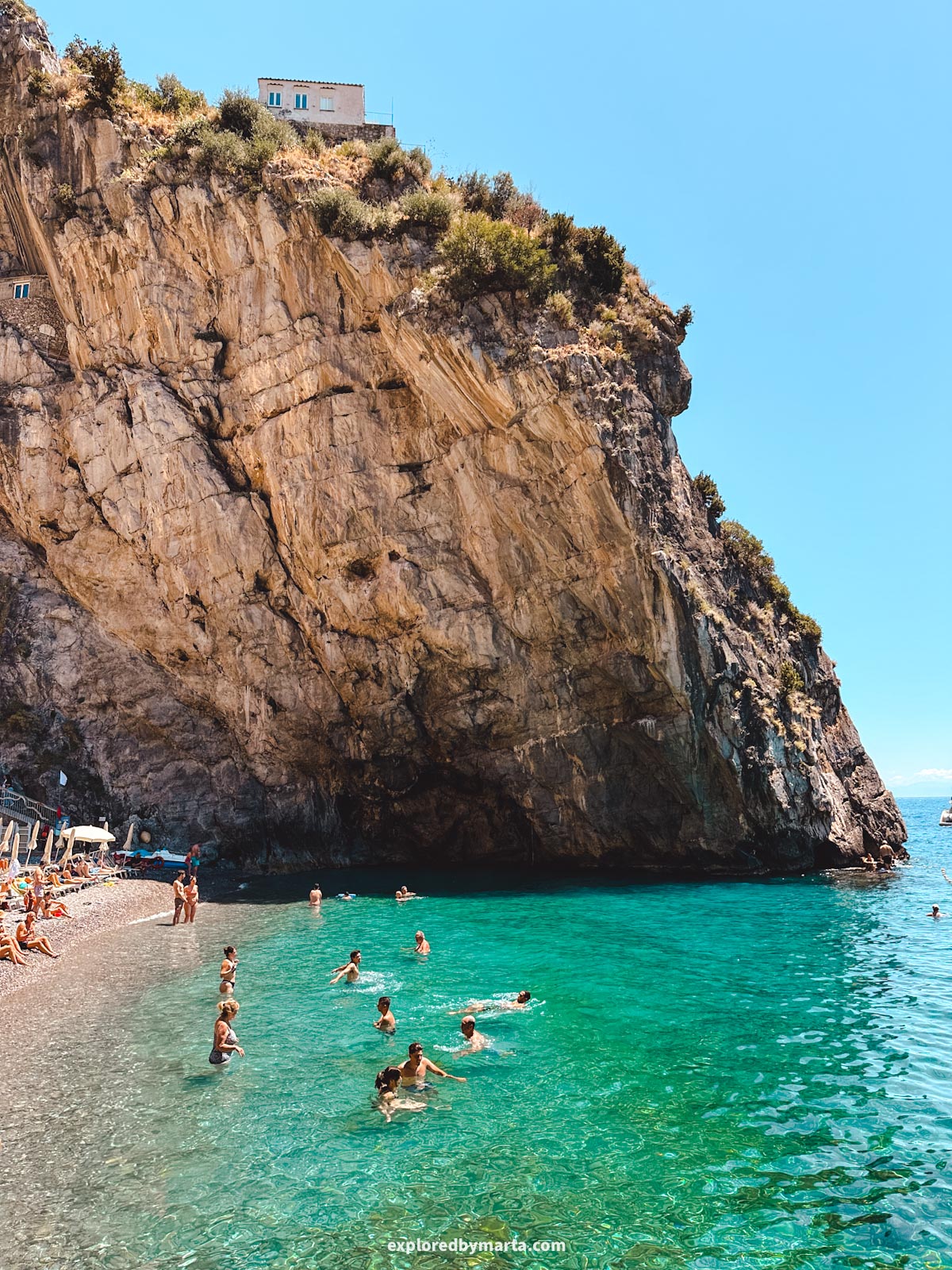

Praiano, one of the most scenic villages on the Amalfi Coast, boasts plenty of beautiful places. That includes Marina di Praia, one of the most beautiful but lesser-known beaches on the Amalfi Coast, with crystal-clear waters.
Not many people talk about this gorgeous place because it is not a central beach in a famous village. Because of that, it often goes unnoticed by the bigger crowds.
And I’m kind of happy about that! Tucked away in a picturesque cove squeezed between dramatic cliffs, Marina di Praia feels like a hidden secret on the Amalfi Coast.
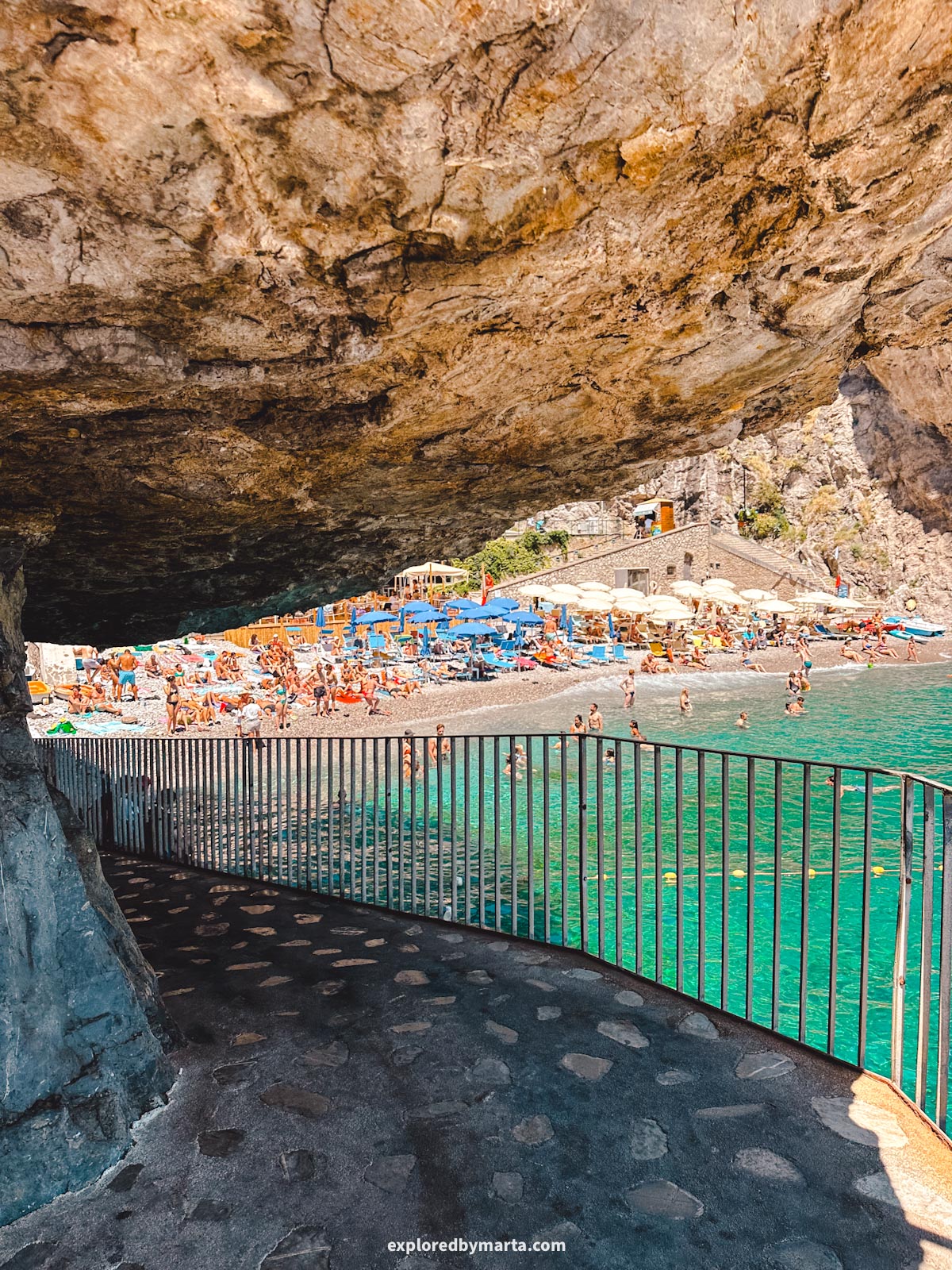

It’s a small pebble beach with crystal-clear waters and a couple of seaside restaurants offering drinks and snacks right by the blue water. People do know about this place, but because of limited space, there can’t be big crowds.
If you’re staying in Praiano, you must make your way down to Marina di Praia!
Despite its beautiful setting, it is a much more relaxed and chill beach compared to many other beaches you can find in the picturesque towns of the Amalfi Coast.
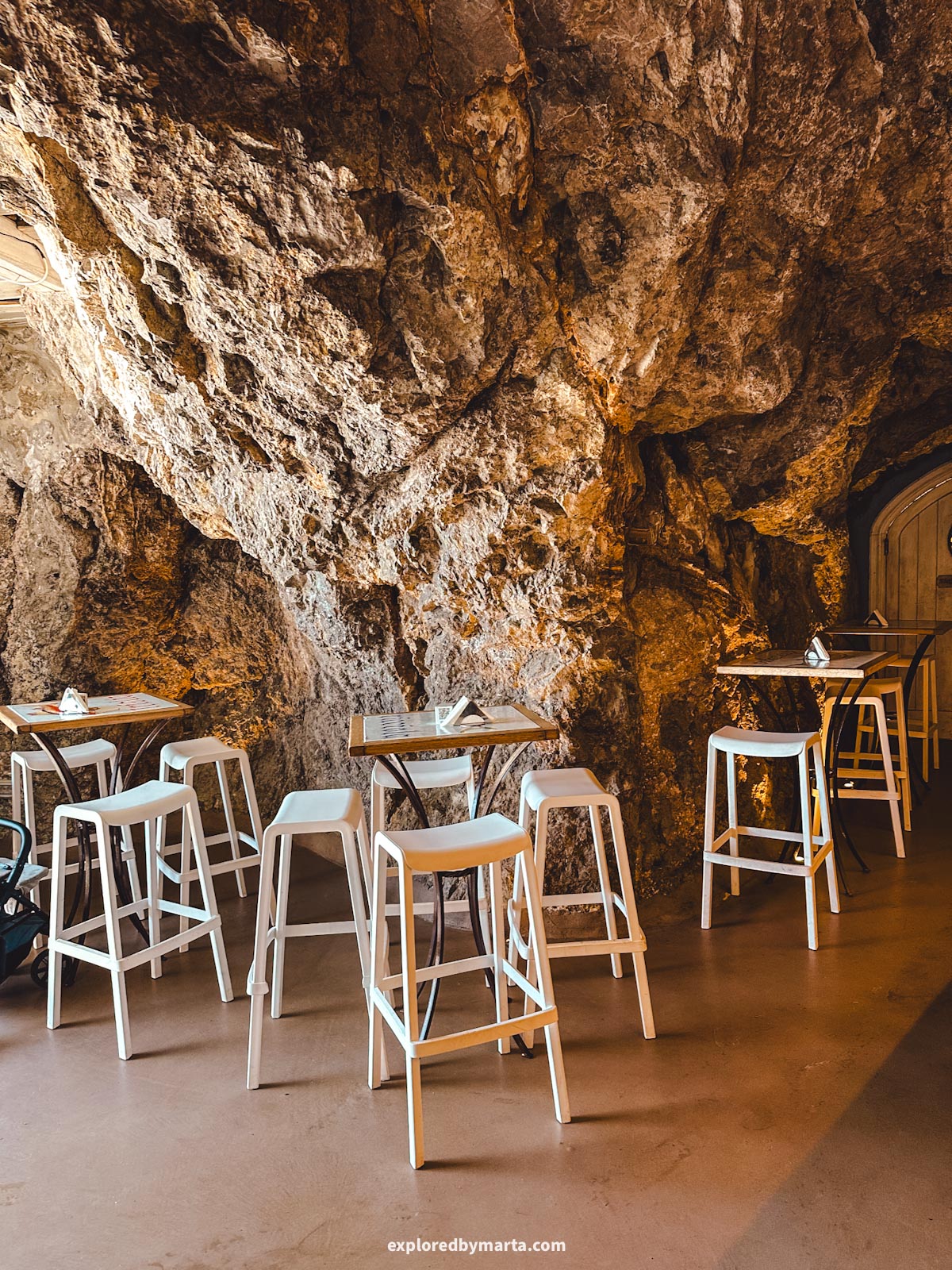
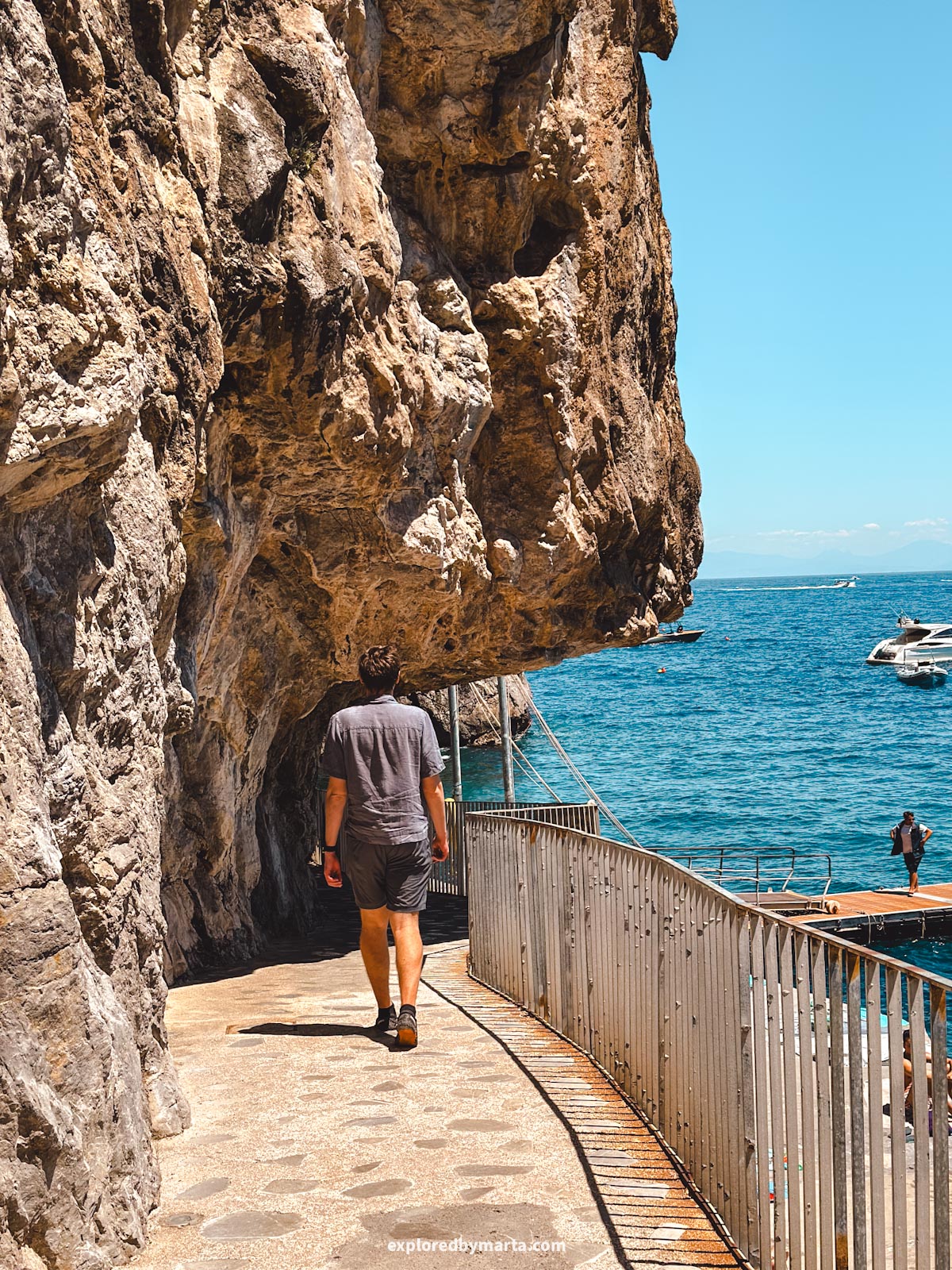
The secret of this beach is a cliffside path carved into rock where you can walk further away to more secluded spots and beach clubs along the shore.
If you walk all the way to the end of the coastal pathway, you’ll reach Torre a Mare, Praiano’s medieval watchtower, which was built to protect the coastline from pirate attacks.
It’s the perfect spot for a beach day and a refreshing swim in the turquoise waters! We stopped by a cool beach club, Il Pirata, where they have a snack bar inside a rock cave. Definitely one of the most unique hidden gems on the Amalfi Coast!
Location: Marina di Praia
13. Bar Santa Rosa in Conca dei Marini
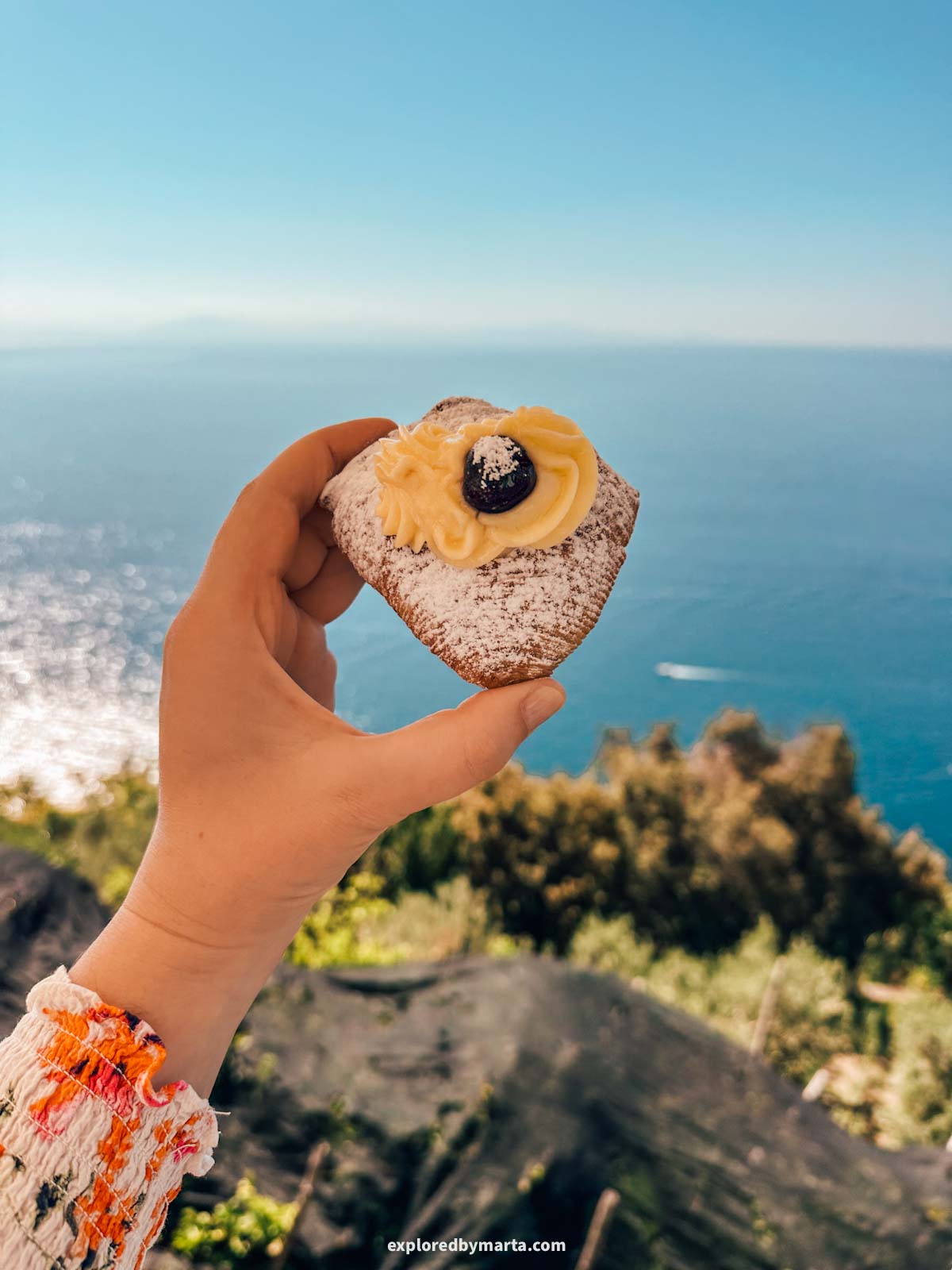
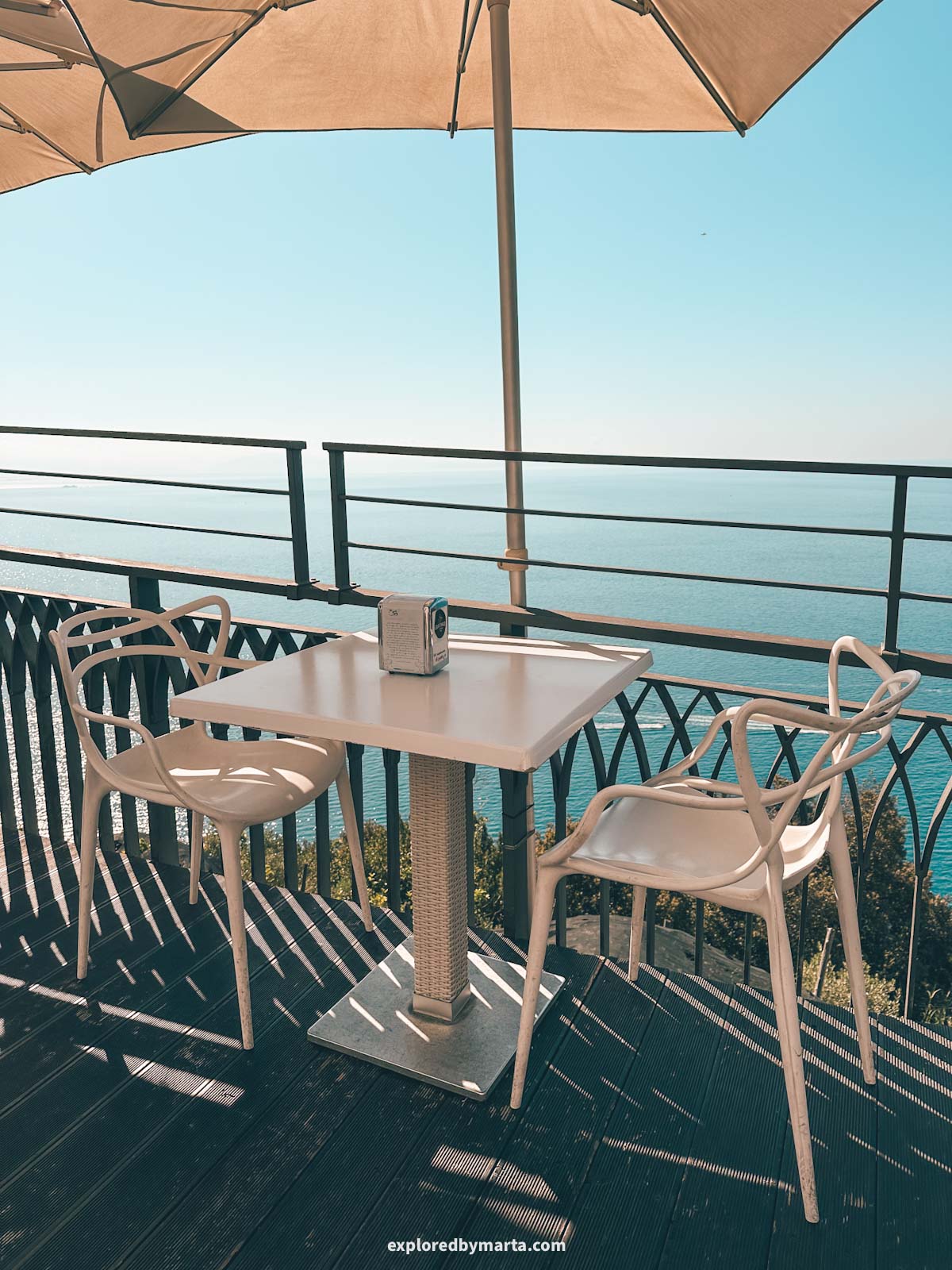
I know some people are food travelers, and they are looking for some special food-related places to visit wherever they travel.
If you are one of them or you are staying somewhere near Conca dei Marini, you must make your way to Bar Santa Rosa to try one of the Amalfi Coast’s must-try traditional foods, sfogliatella, in its birthplace.

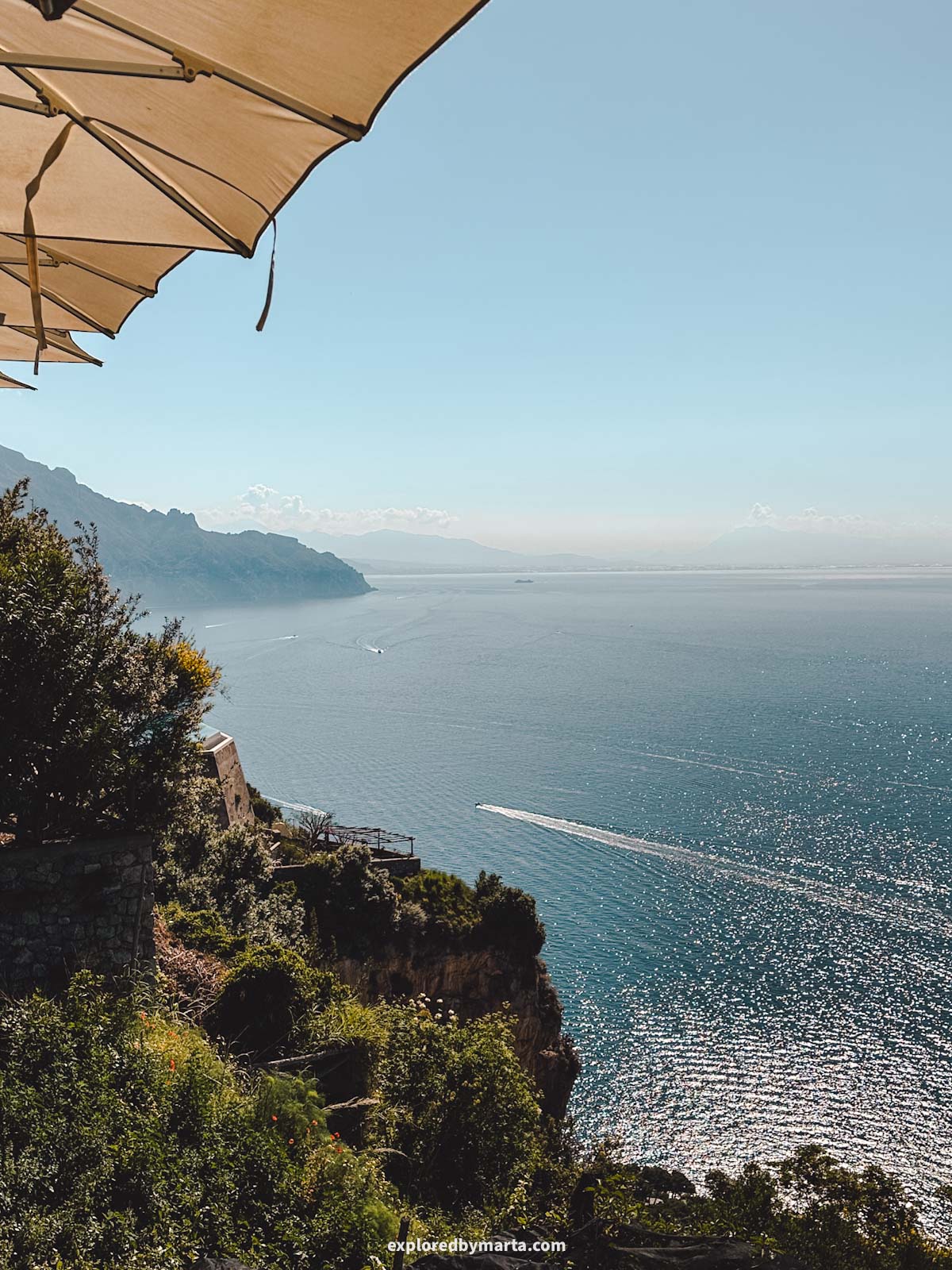
We tried this famous ‘lobster tail’ pastry numerous times. I can’t even count how many times, to be honest, and only two places stood out to me, where the pastry they served was truly delicious. One of those places was in Naples, and the other place was Bar Santa Rosa.
This little local café is just steps away from where the famous sfogliatella pastry was born: it was created back in the 17th century in the monastery of Santa Rosa in Conca dei Marini. And I trust locals know how it should taste!
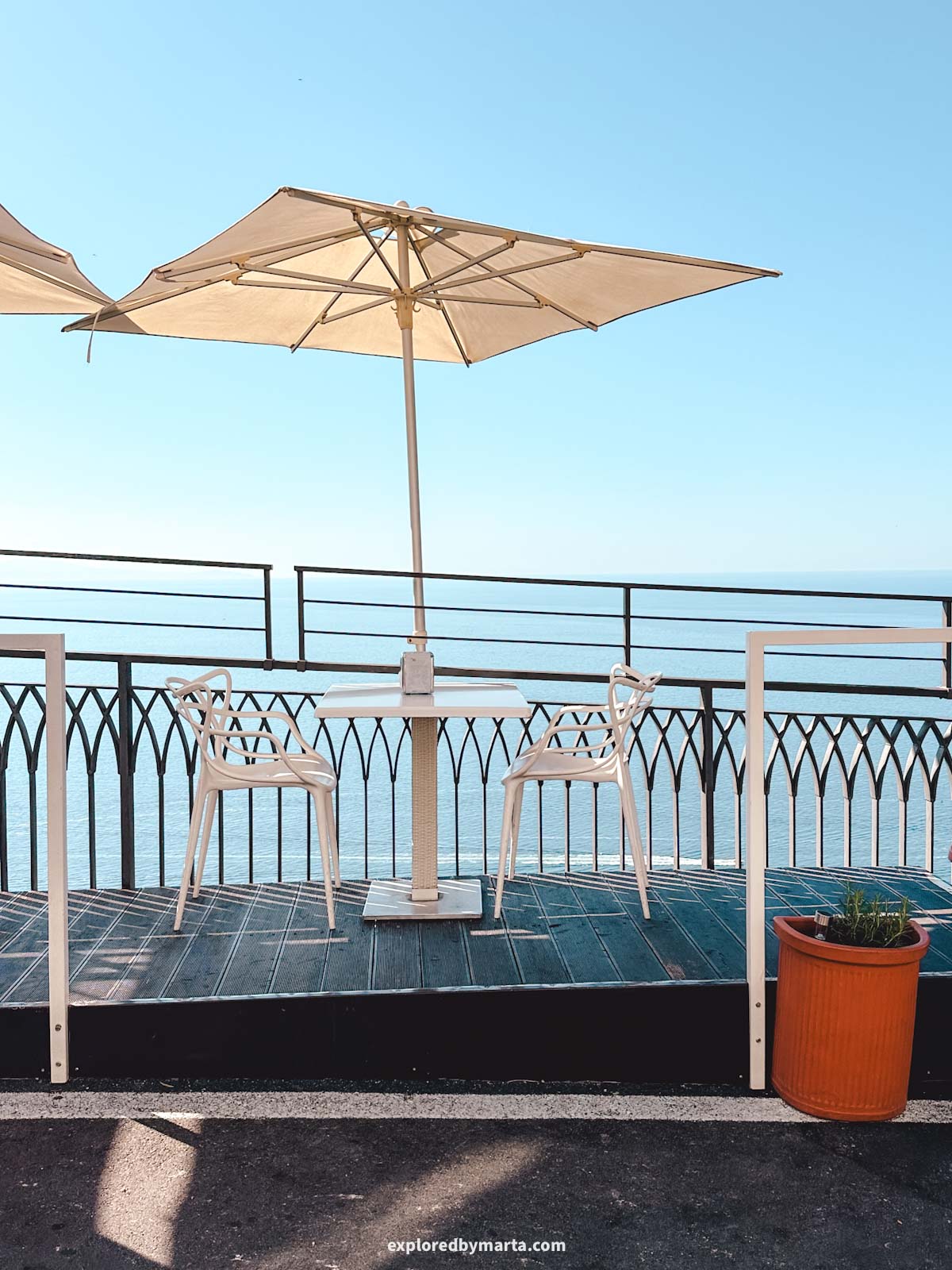

We came to this café in the morning before heading further to Praiano, and ordered two cappuccinos and two sfogliatelle pastries. They have some tables inside, but we sat at the tables they have on the sidewalk to enjoy our Italian breakfast with a view.
Honestly, I have learned that the simple things are quite often the most enjoyable things, and this simple Italian breakfast with a view while sitting on a sidewalk was one of those memorable moments from our travels.
I hope you get to visit this hidden gem in Conca dei Marini.
Location: Bar Santa Rosa
14. Duomo di Salerno and crypt of Matthew the Apostle
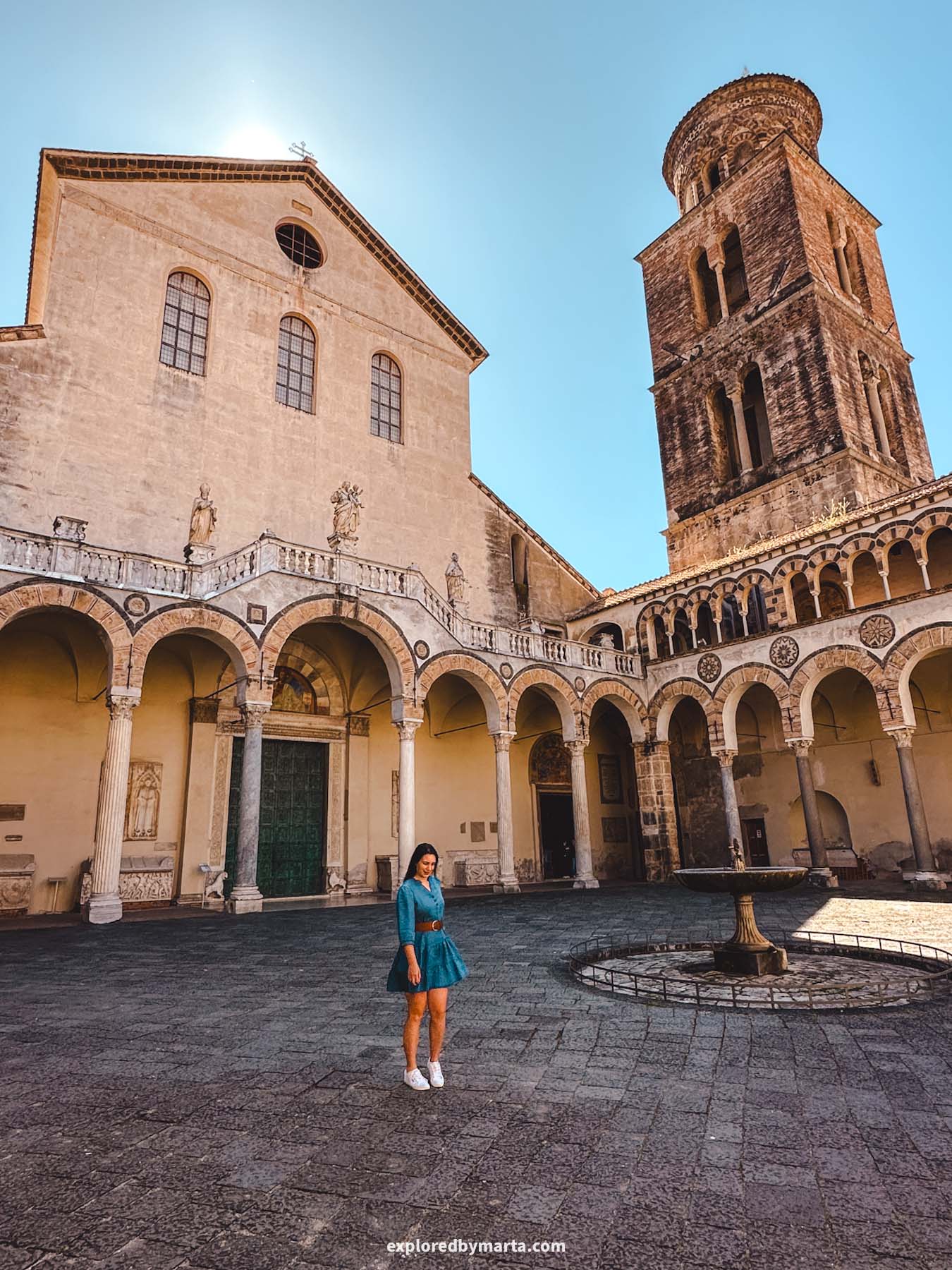
While everyone is obsessing over the famous Amalfi Cathedral, there is another majestic cathedral, and not nearly as visited, in the area – in Salerno!
There are some truly fantastic gems you can find in Salerno, and one of the most popular ones is the Duomo di Salerno, or Cathedral of Salerno. This medieval masterpiece was my favorite landmark in the city.
Built in the 11th century, the cathedral has become one of the most important pilgrimage destinations in the world. And for good reason – the remains of Saint Matthew, one of the Twelve Apostles, are buried in its crypt.
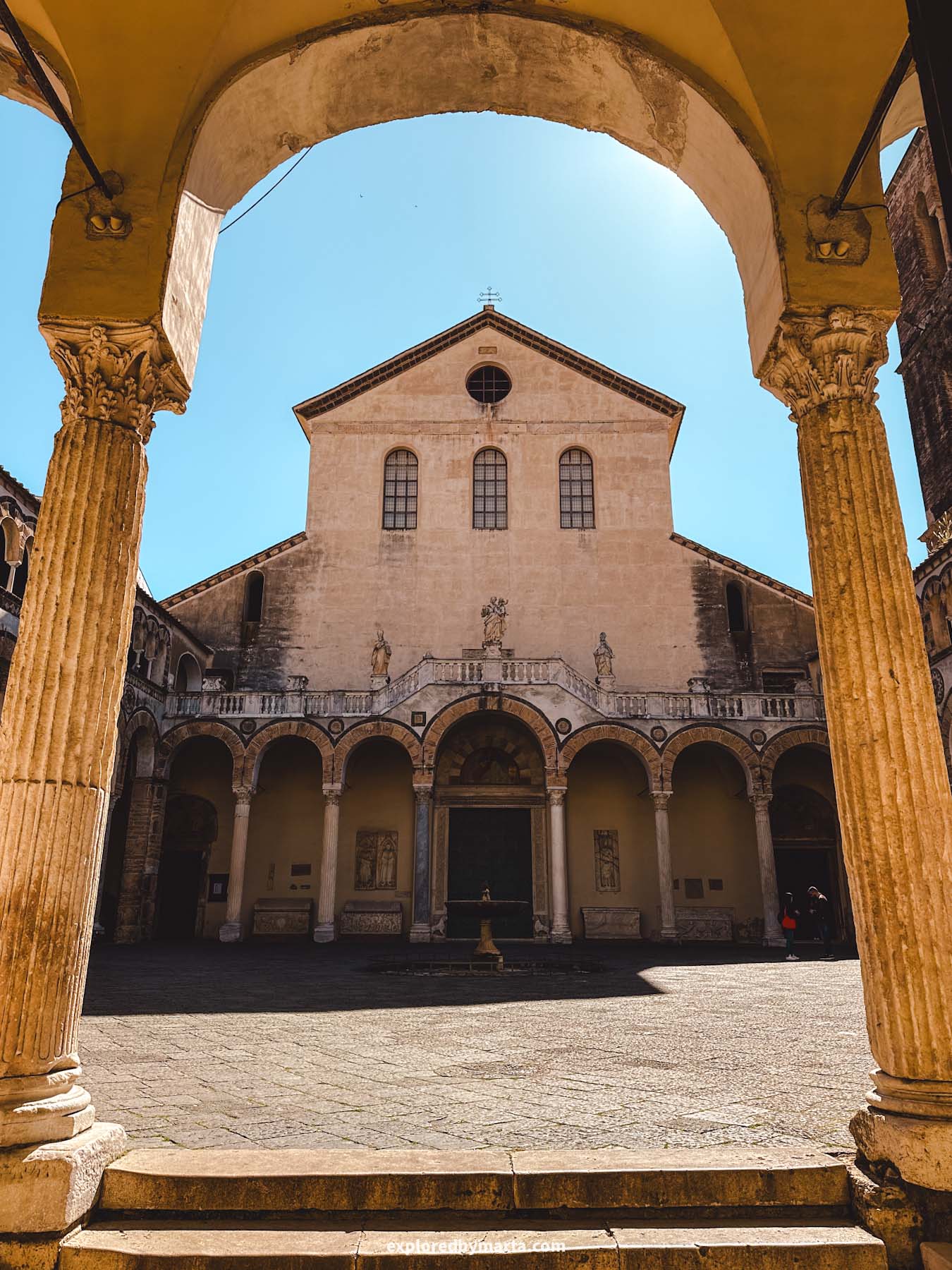
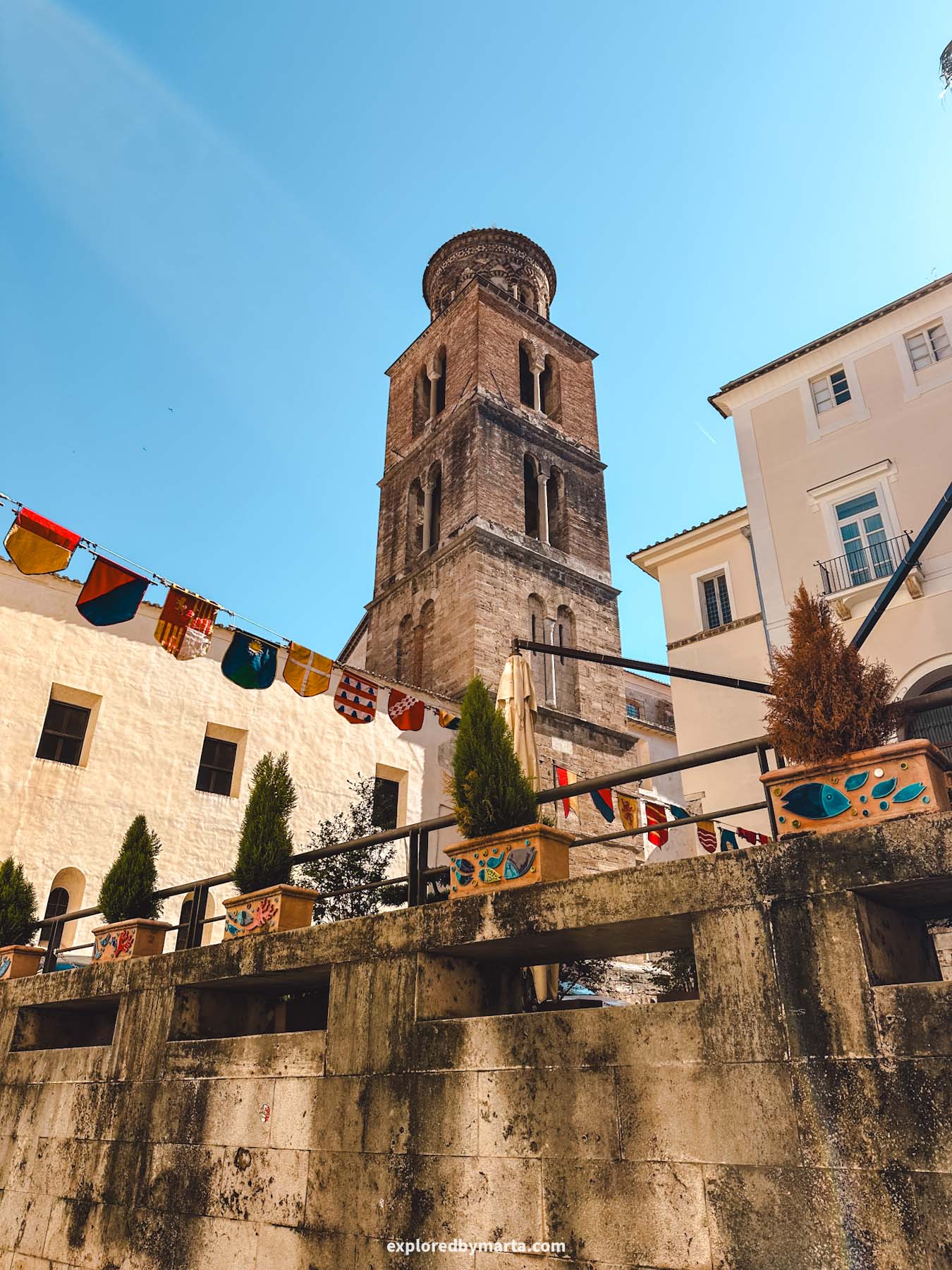
Saint Matthew’s crypt in Salerno is considered one of the most beautiful crypts in all of Italy! It is lavishly decorated with gilded columns, frescoes, and marble.
But the crypt isn’t the only reason to visit. The cathedral also features a striking 12th-century bell tower that pierces Salerno’s skyline and a beautiful courtyard lined with Roman columns.
Inside the cathedral, you’ll find a grand nave, impressive frescoes, artworks, and a Baroque-style ceiling. But the richly decorated altar is the central element inside the cathedral.


We spent quite some time walking around the crypt, admiring its marble busts, gilded columns, and stunning frescoes. The crypt was renovated in the 17th century in Baroque style, and you can definitely tell they didn’t hold back!
While you can visit the church’s courtyard for free during working hours, you need to purchase a ticket to visit the interior of the cathedral and the crypt.
While the interior of the cathedral was not as impressive as I thought it would be, the crypt truly took my breath away, and is definitely worth a visit!
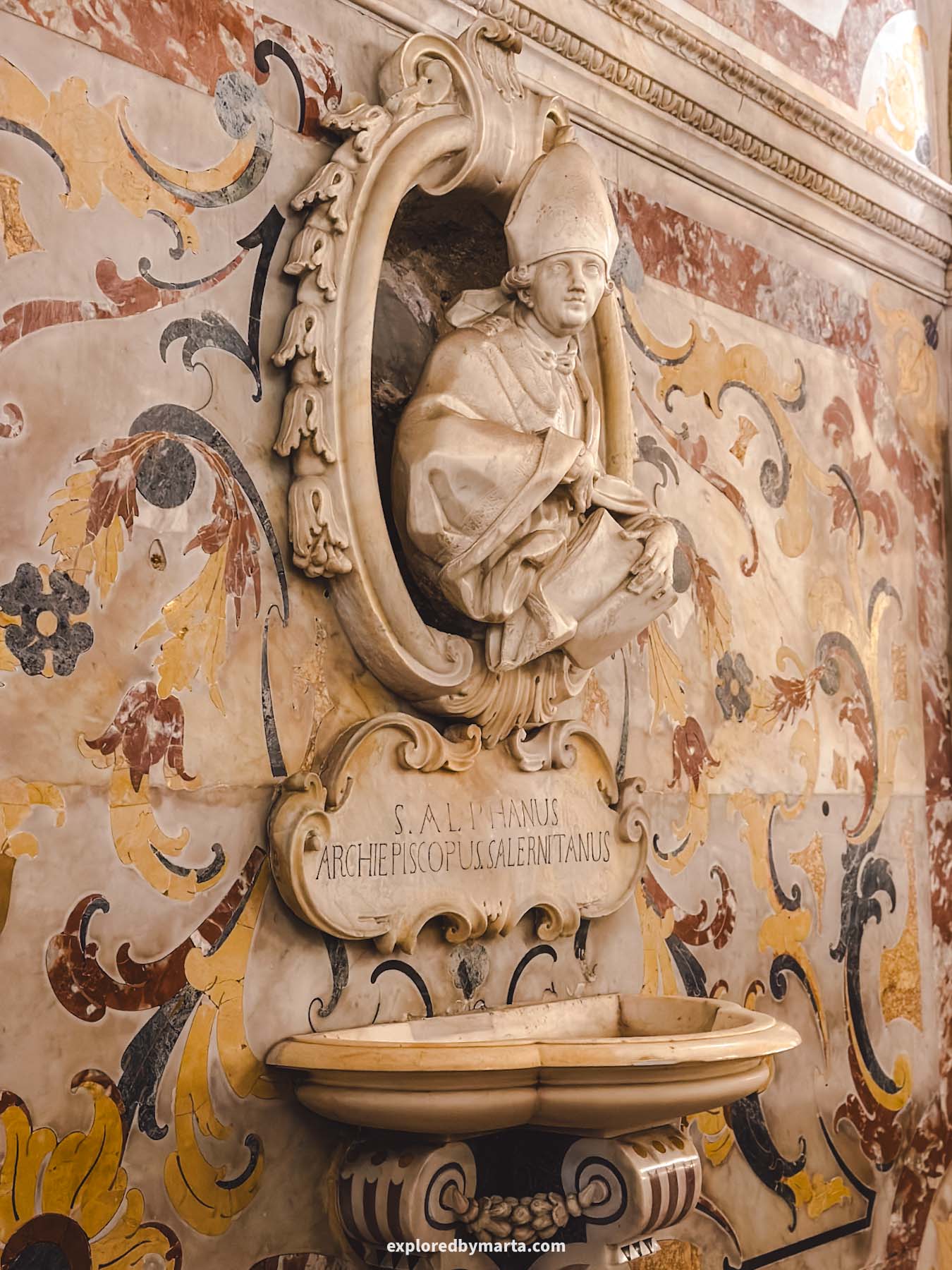

But there’s more to visiting the cathedral. At the ticket office, we were offered a full ticket that also included entry to Salerno’s Diocesan Museum of San Matteo and entry to the Church of St. George.
We visited both of these bonus spots. While the museum felt a bit dull (unless you’re really into religious artifacts and paintings), the Church of St. George was absolutely jaw-dropping (see photos below). And it is located just a stone’s throw from the cathedral!
The Church of St. George completely surprised us with its breathtaking Baroque interior. Honestly, even the cathedral can’t compete with this absolute marvel!
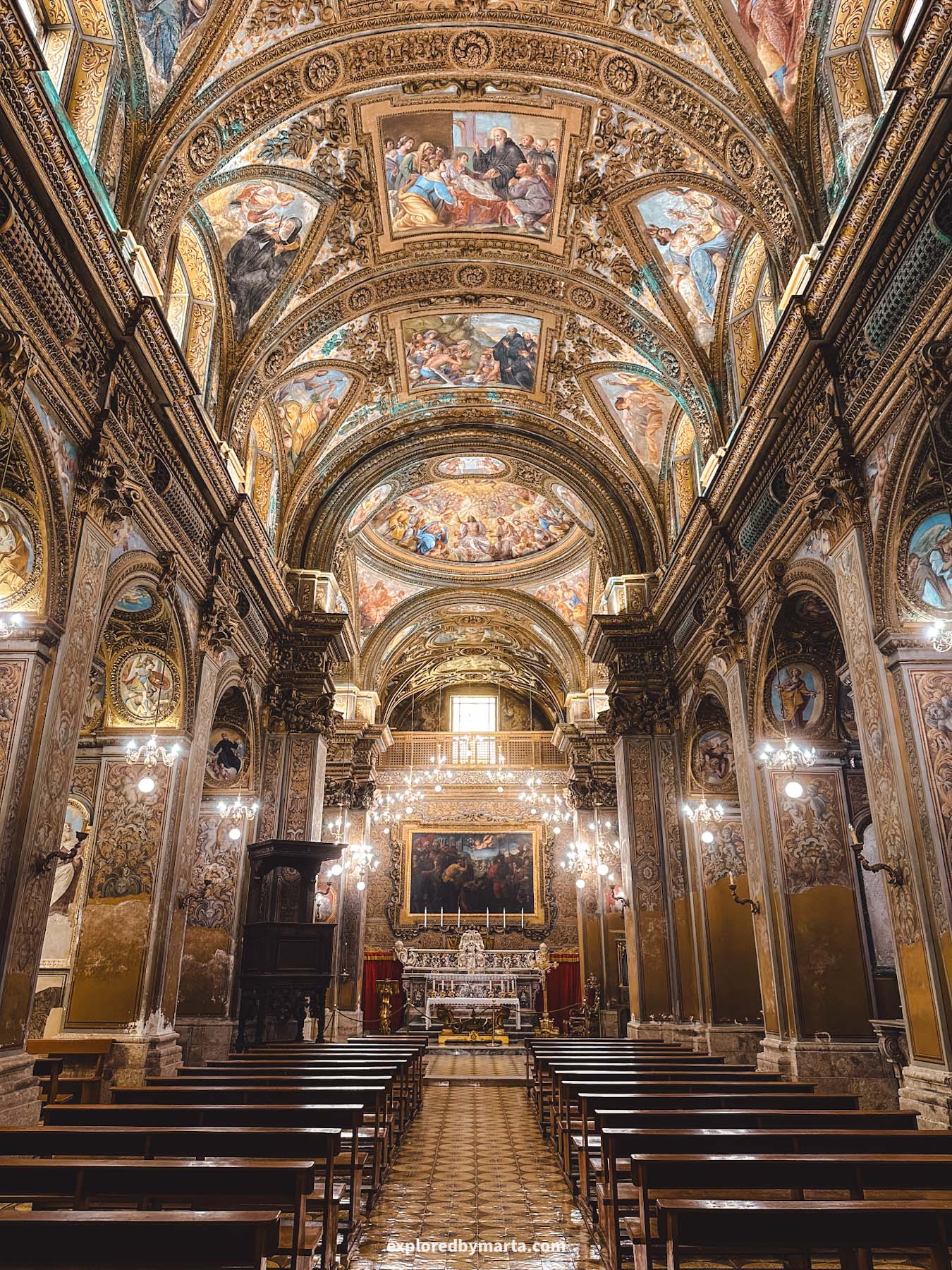
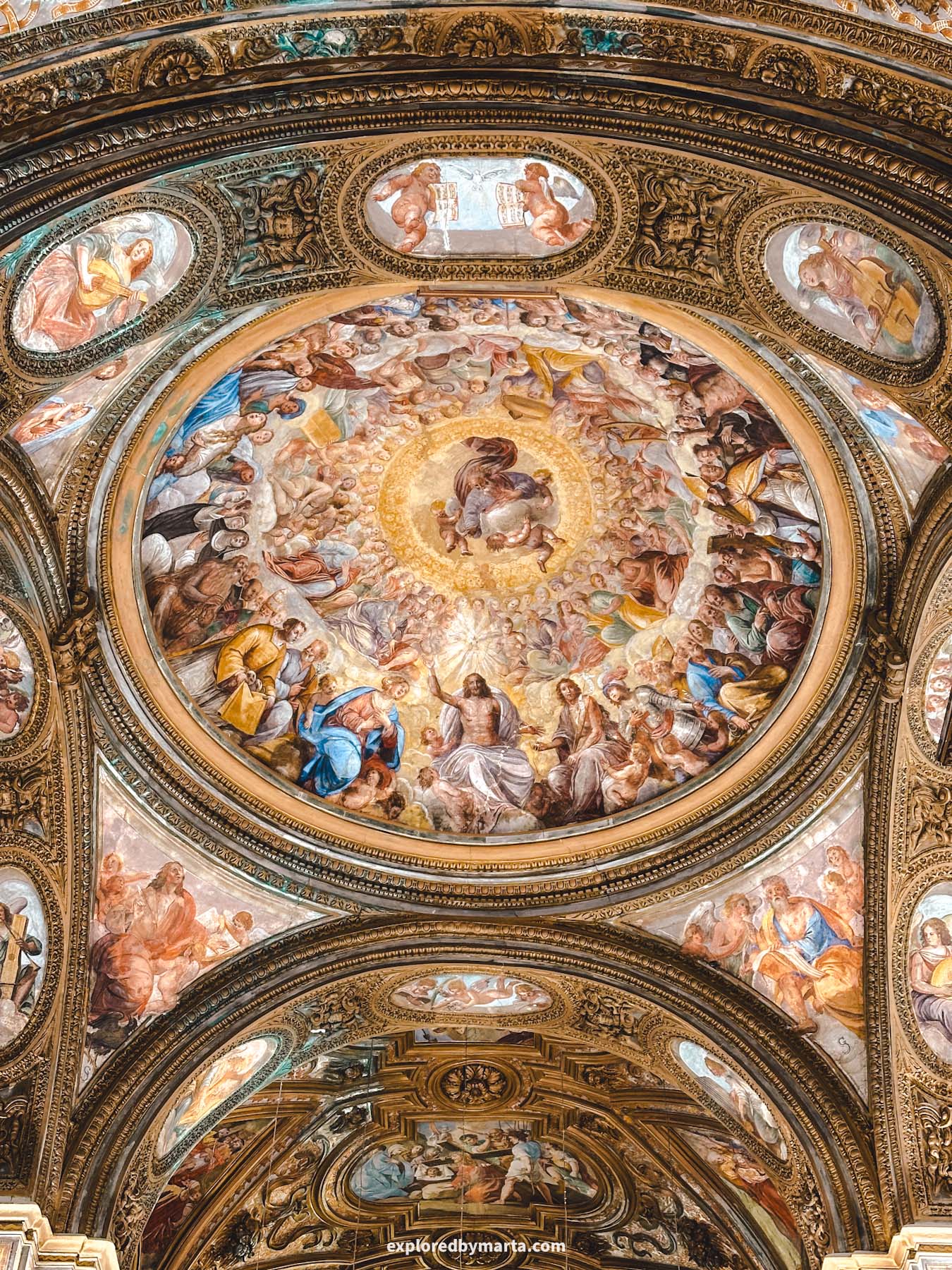
Imagine taking Saint Matthew’s crypt and making it much larger and even more elaborate – that’s the Church of St. George for you!
I had to sit down for a few minutes just to take it all in and truly comprehend the incredible craftsmanship that went into creating such a stunning building.
This church looks completely uninspiring from the outside, but all the glory can be found inside. Easily one of the most beautiful places to visit in the area!

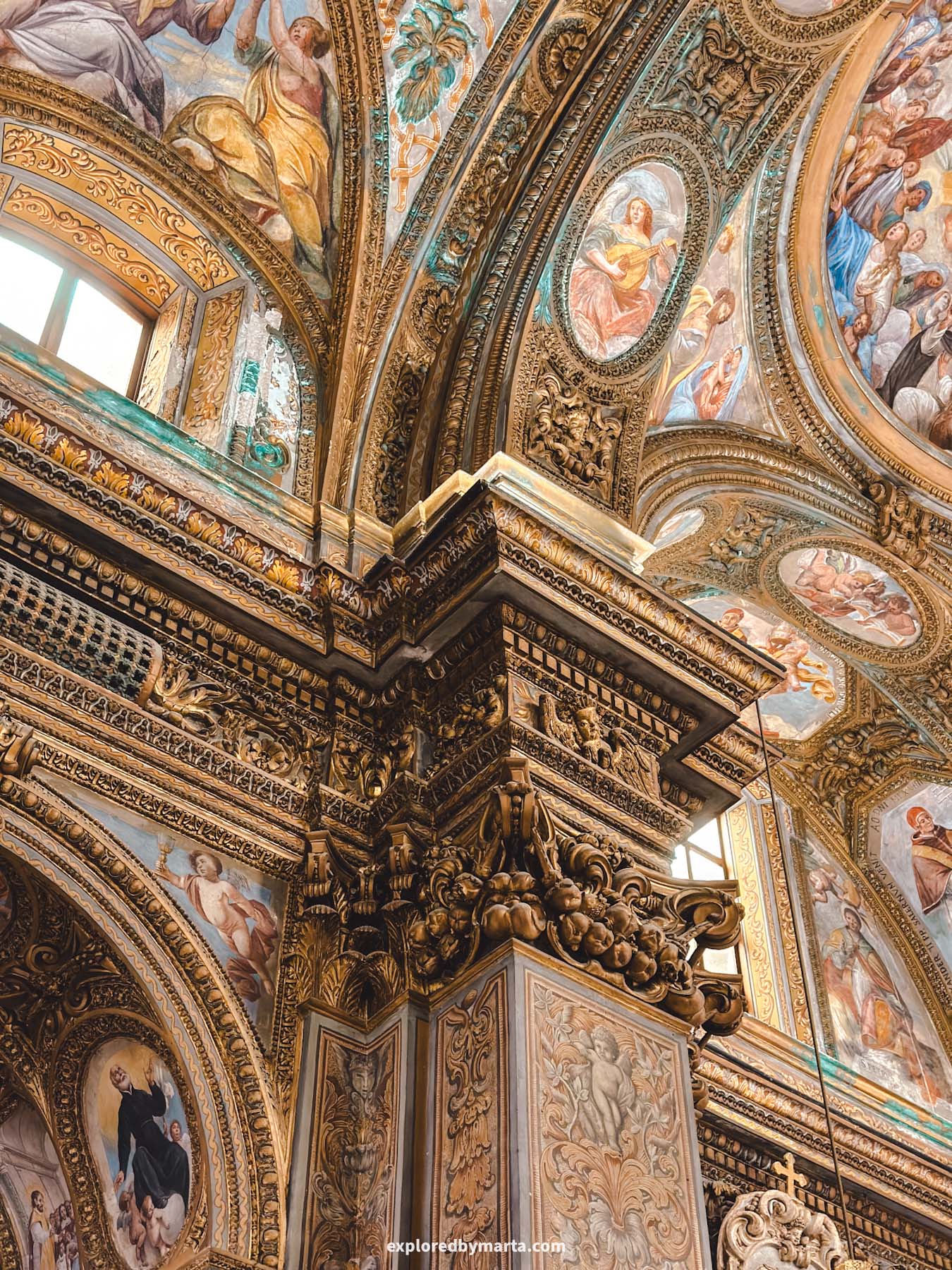
Originally a Benedictine monastery church, it was built in the early Middle Ages, but much of its magnificent Baroque splendor dates back to the 17th century.
I highly recommend spending those few extra euros to upgrade to the full ticket and setting aside some time to peek into this masterpiece. It’s so worth it!
I’ve visited countless churches throughout my travels in countries like Spain, Portugal, and Italy, and not many religious buildings still take my breath away, but this one definitely did!
Location: Duomo di Salerno – Church of St. George
15. Castello di Arechi in Salerno
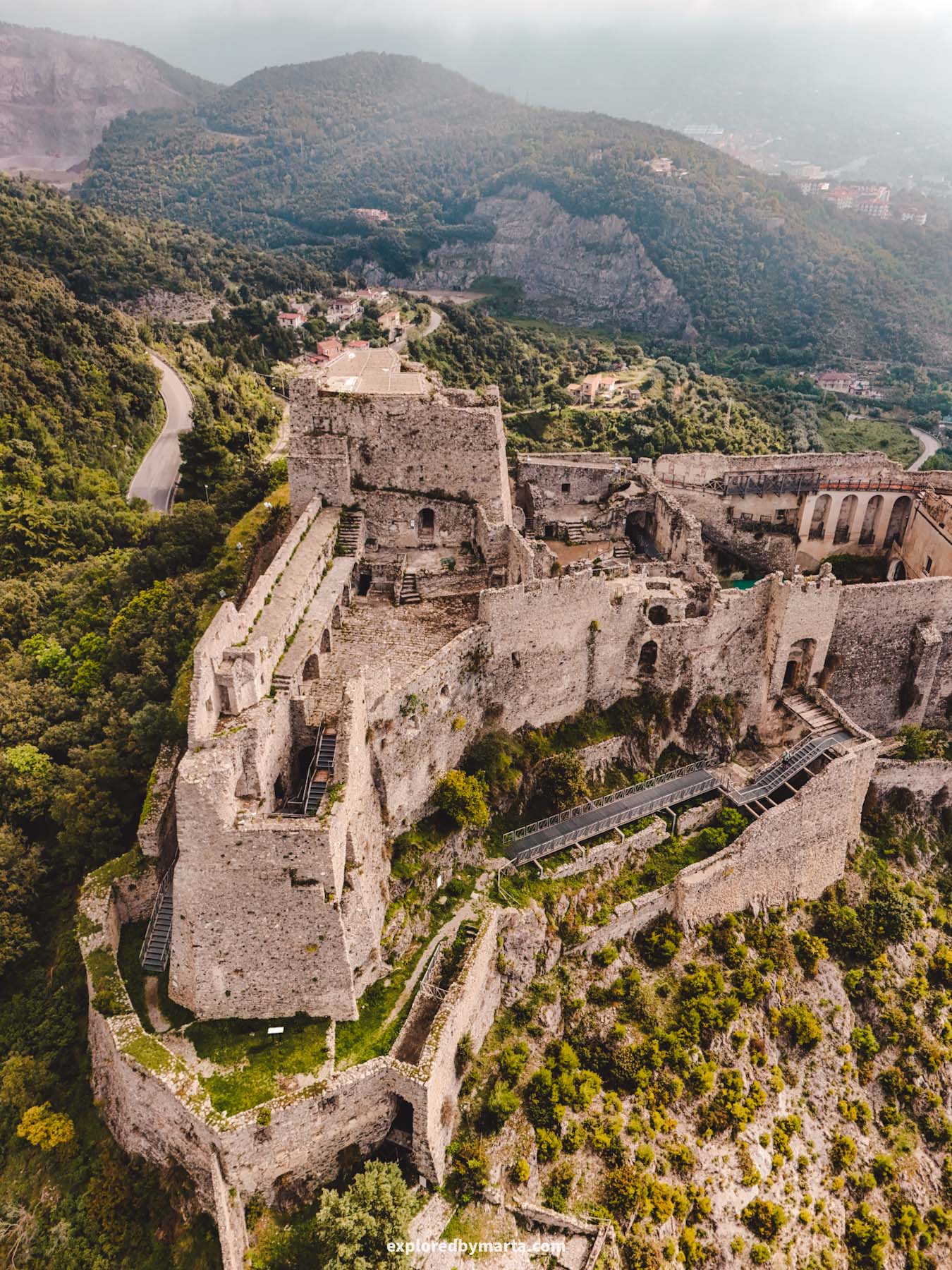

But I’m not done with Salerno!
Standing about 360 meters above sea level on Mount Bonadies, next to Salerno, is Castello di Arechi, or Arechi Castle, one of the most significant historical landmarks in the region.
The oldest parts of this medieval fortress date back as far as the 6th century, although most of the structure was built over the following centuries.
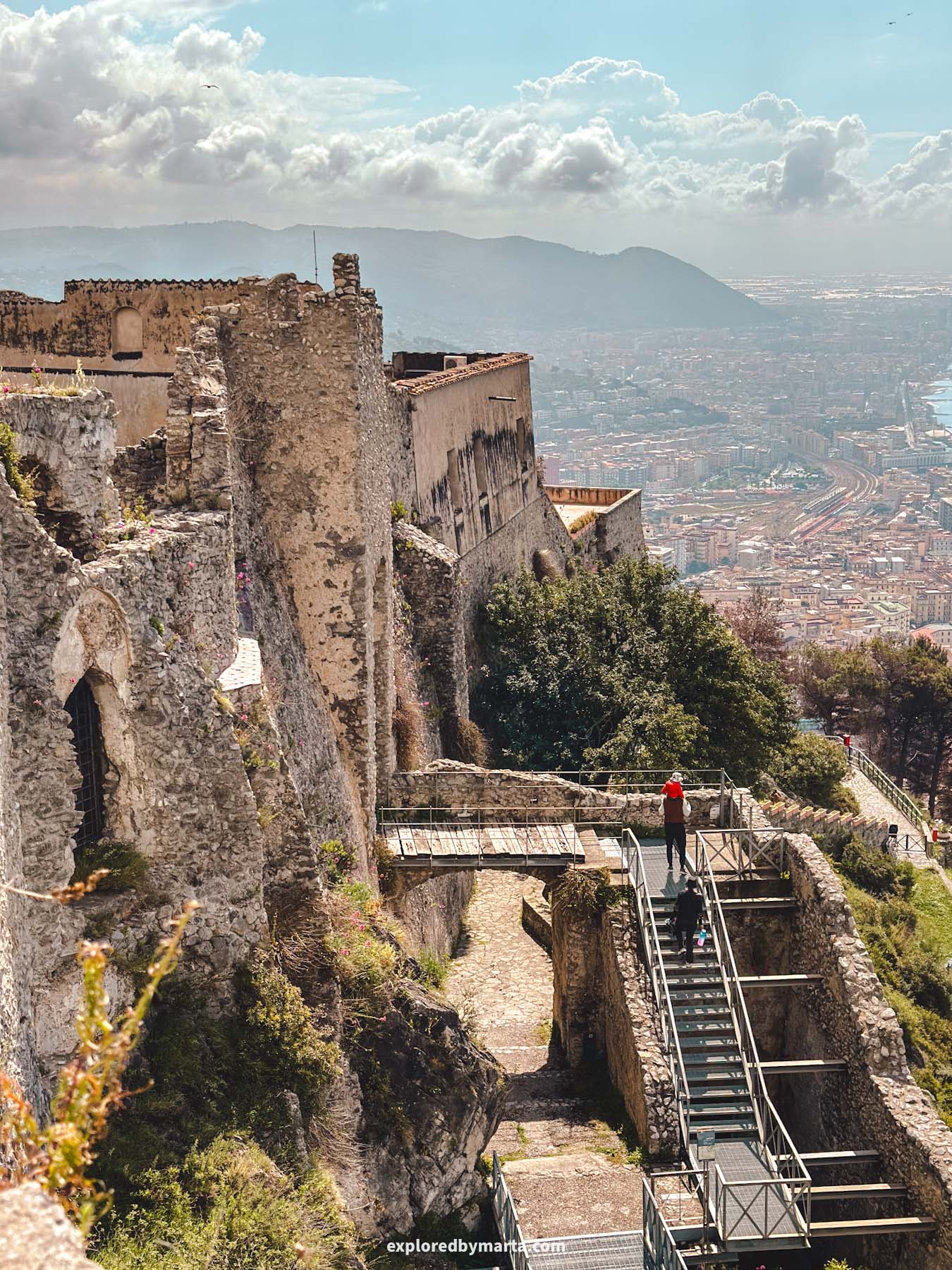
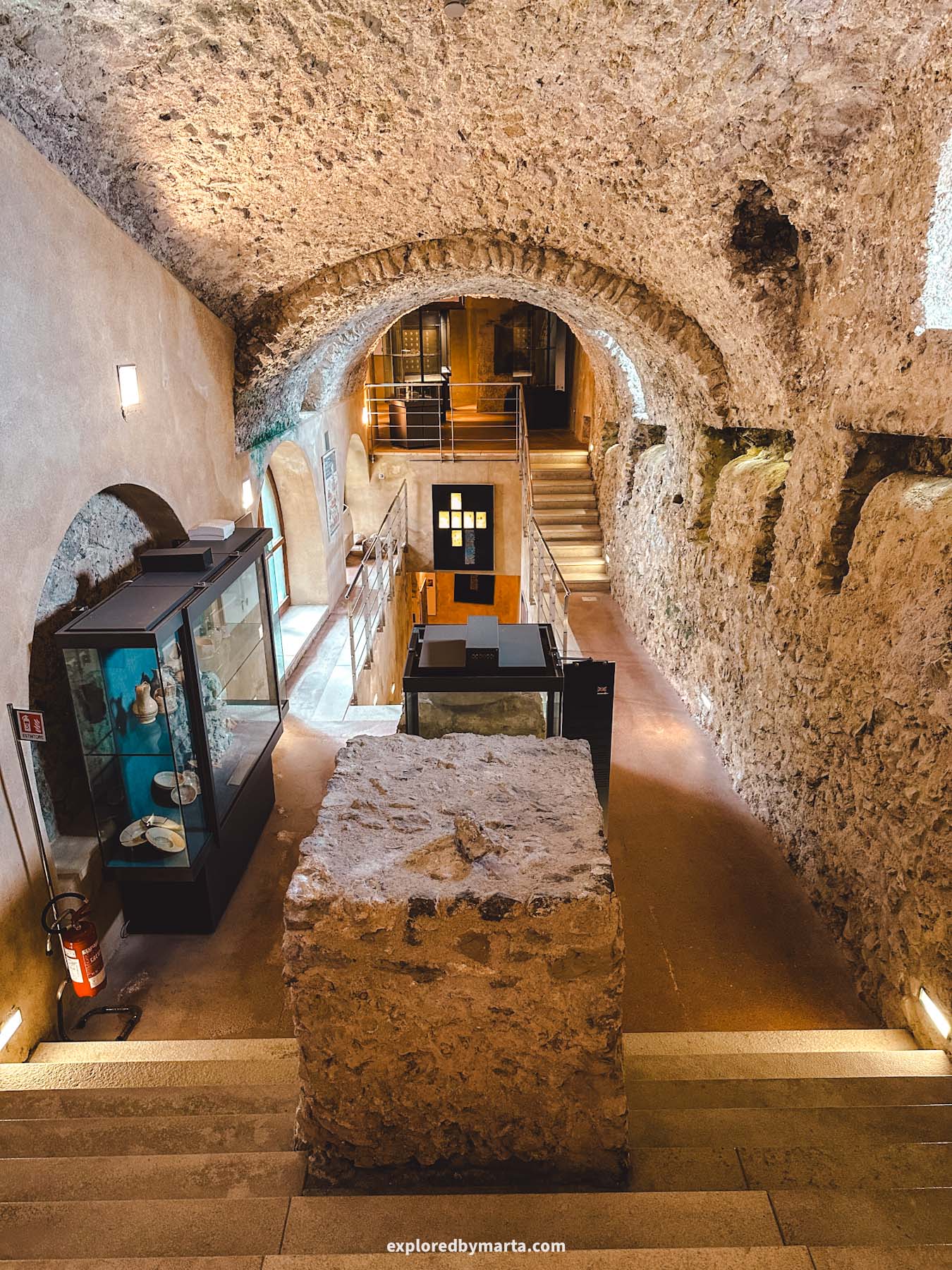
Castello di Arechi was one of my favorite places we visited in Salerno. Not only is it a great spot to explore historic artifacts, but it also offers panoramic views of the Amalfi Coast, Salerno, and the Gulf of Salerno.
The castle is surrounded by a lush forest, making the visit a peaceful walk filled with fresh air and stunning scenery. I highly recommend adding this hidden medieval gem to your itinerary if you are staying somewhere nearby!

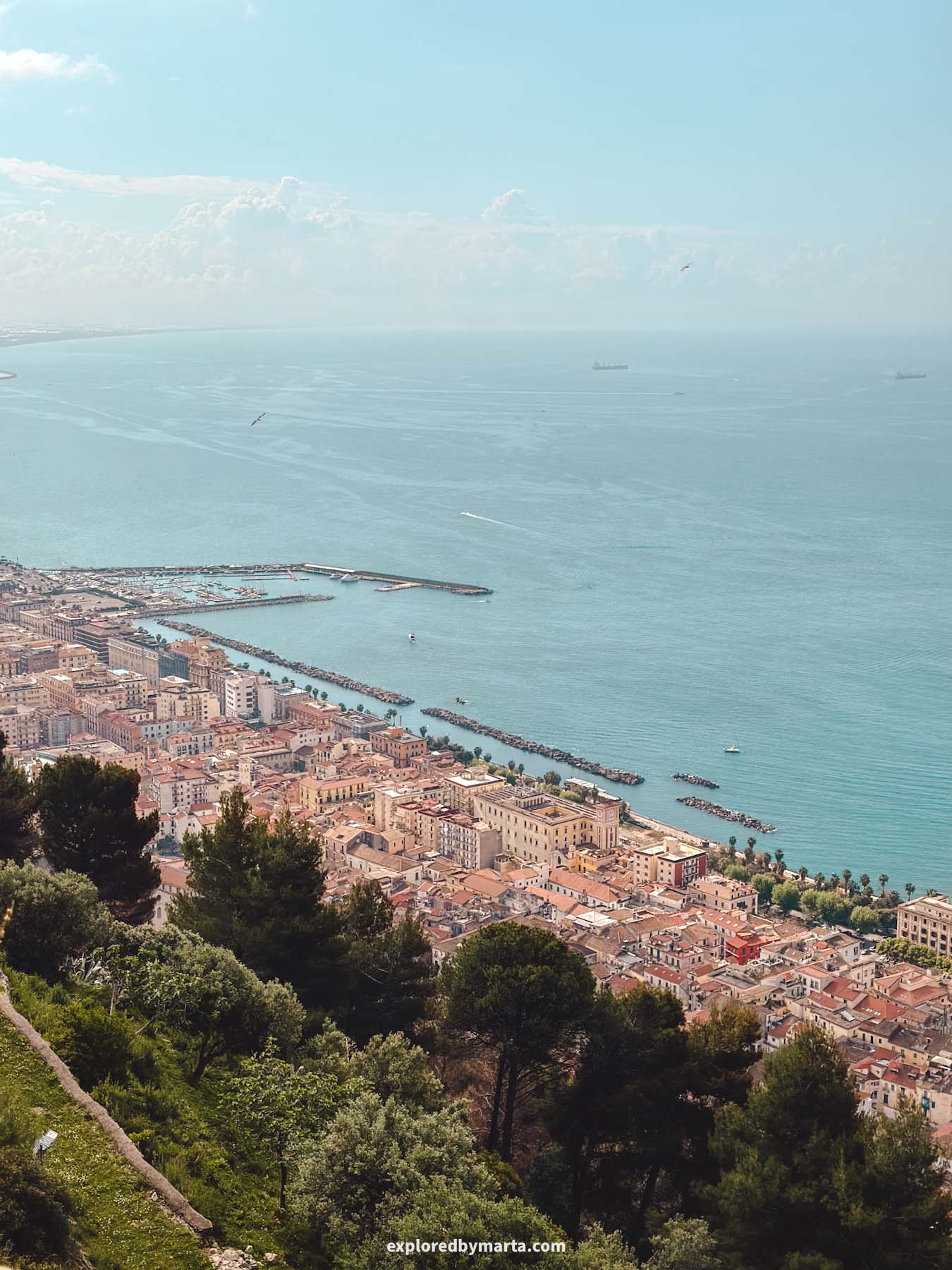
You can reach the castle by hiking, though it’s a steep and challenging climb from Salerno, or by car (there’s parking available near the entrance), taxi, or bus. A regular bus route goes directly from Salerno to the castle.
The best part? You can explore the outside of the castle for free.
If you’d like to see the interior, there’s a small entrance fee. Inside, you’ll find a museum showcasing artifacts such as coins, tools, and other historical items found in the castle and its surrounding area.
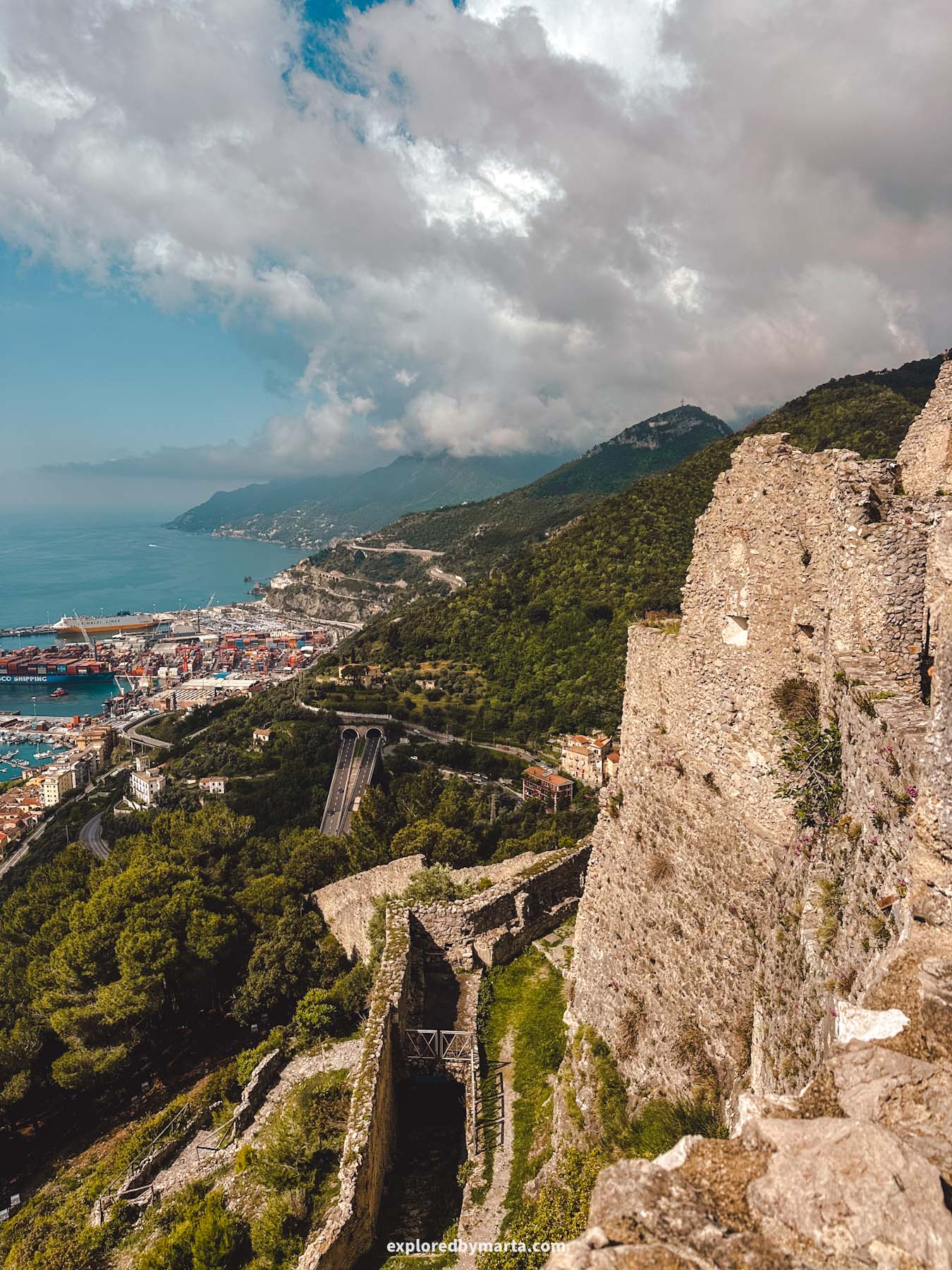

The castle is named after Arechi II, a Lombard prince, but over the centuries, it was occupied by various groups, including the Byzantines, Normans, Aragonese, and others, each leaving their mark on the structure and its defenses.
Exploring the castle was one of my favorite things to do in Salerno. On a clear day, you can see the whole Sorrento Peninsula and its mountains. We had some clouds on the day we visited, but the views were beautiful either way.
Location: Castello di Arechi
16. Ancient Greek temples in Paestum

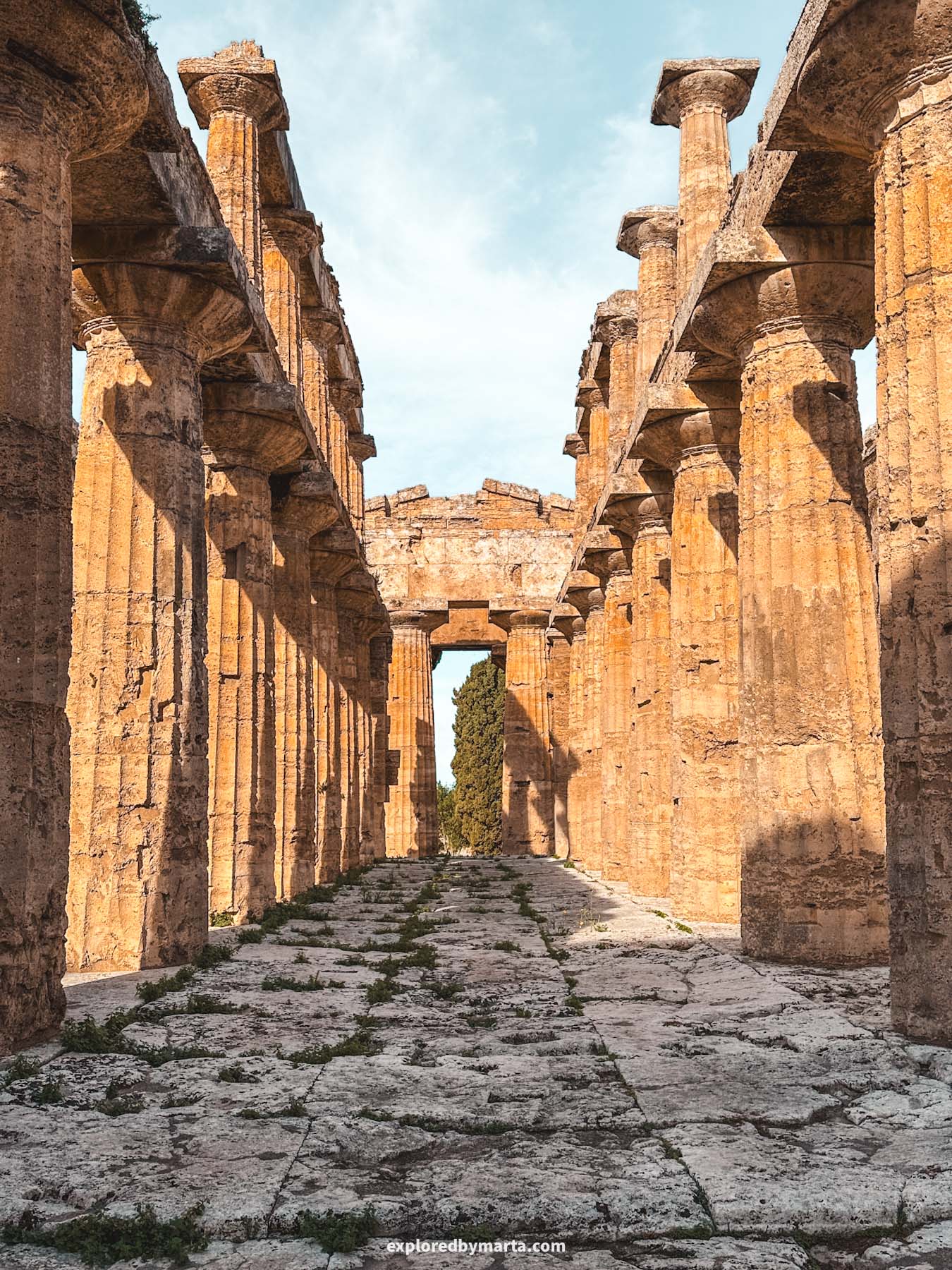
For those of you who rent a car, I cannot recommend this place enough! While every tourist visits Pompeii, this absolute hidden marvel in Paestum, less than an hour’s drive from Salerno, is not nearly as visited!
So, what’s special about this place?
The area around the Mediterranean Sea is often referred to as the cradle of Western civilization. The sea connected civilizations from Europe, Asia, and Africa, allowing ancient empires to thrive and develop at a rapid pace.
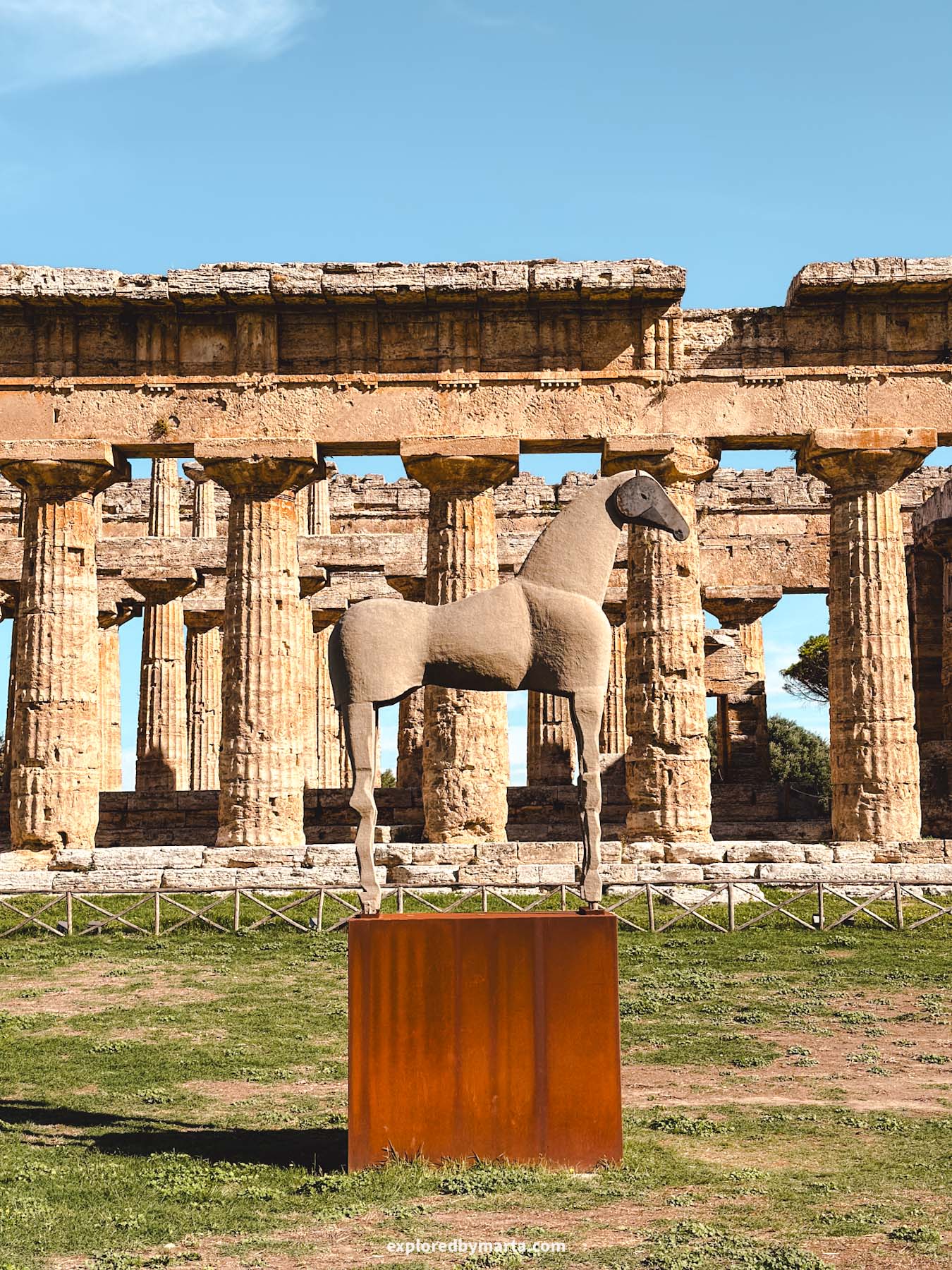

This also meant that territories around the Mediterranean changed rulers many times throughout the centuries. As one empire fell, another rose and continued building and developing the cities.
As a result, in many Mediterranean countries today, you can still see historic landmarks left behind by different civilizations.
In the case of Salerno, there’s an ancient place called Paestum, where you can see Greek temples over 2,500 years old. And, trust me, this place is absolutely spectacular!

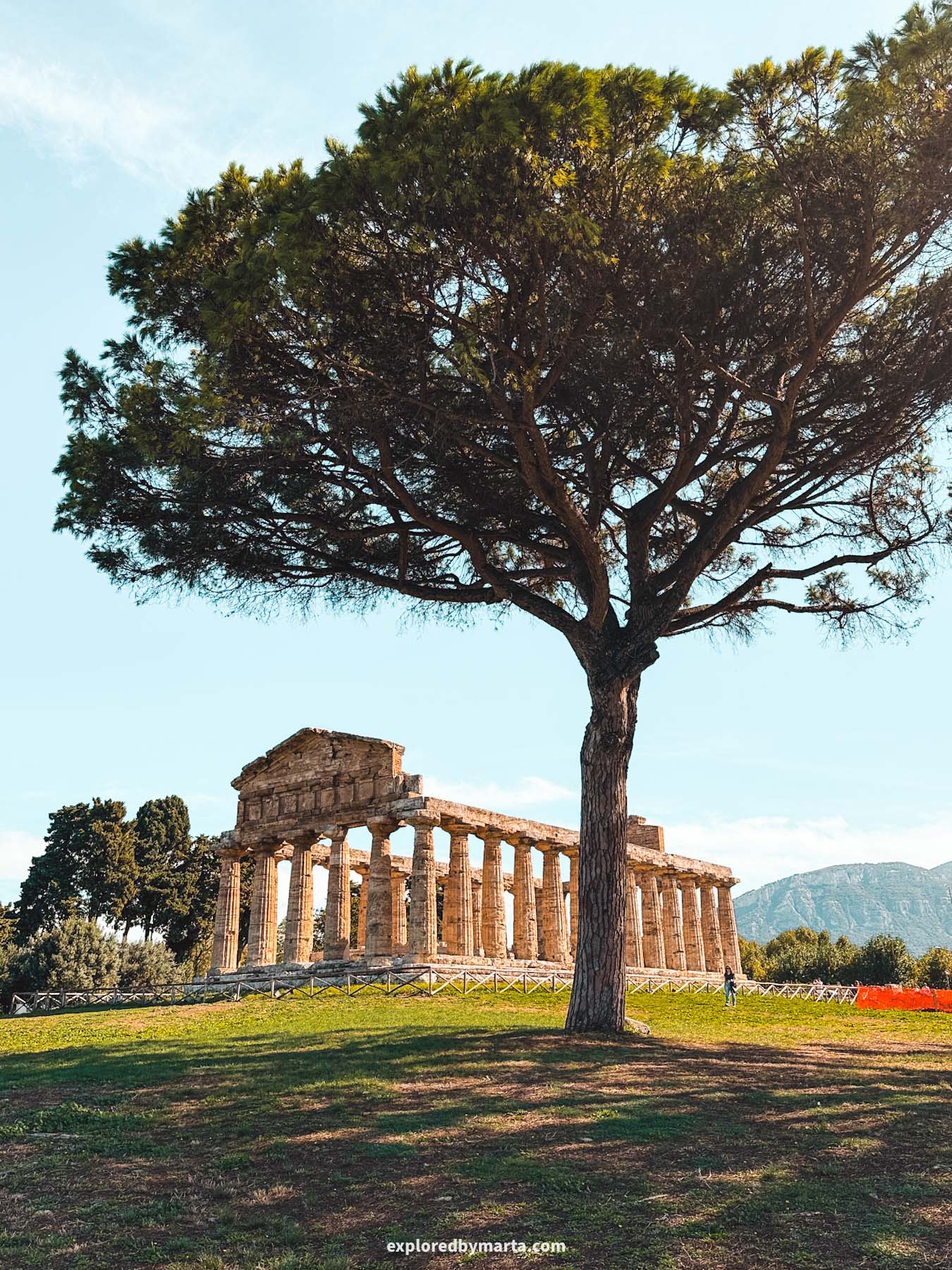
Visiting the Archaeological Park of Paestum was one of my favorite experiences during our travels around the Amalfi Coast.
The massive archaeological site is absolutely jaw-dropping, and, surprisingly, it is one of the lesser-known tourist attractions in the area. If you have a few hours to spare, you need to visit Paestum!
I didn’t expect much to be left of a 2,500-year-old place, but I was so wrong! This ancient UNESCO World Heritage Site is a must-visit place in Southern Italy.

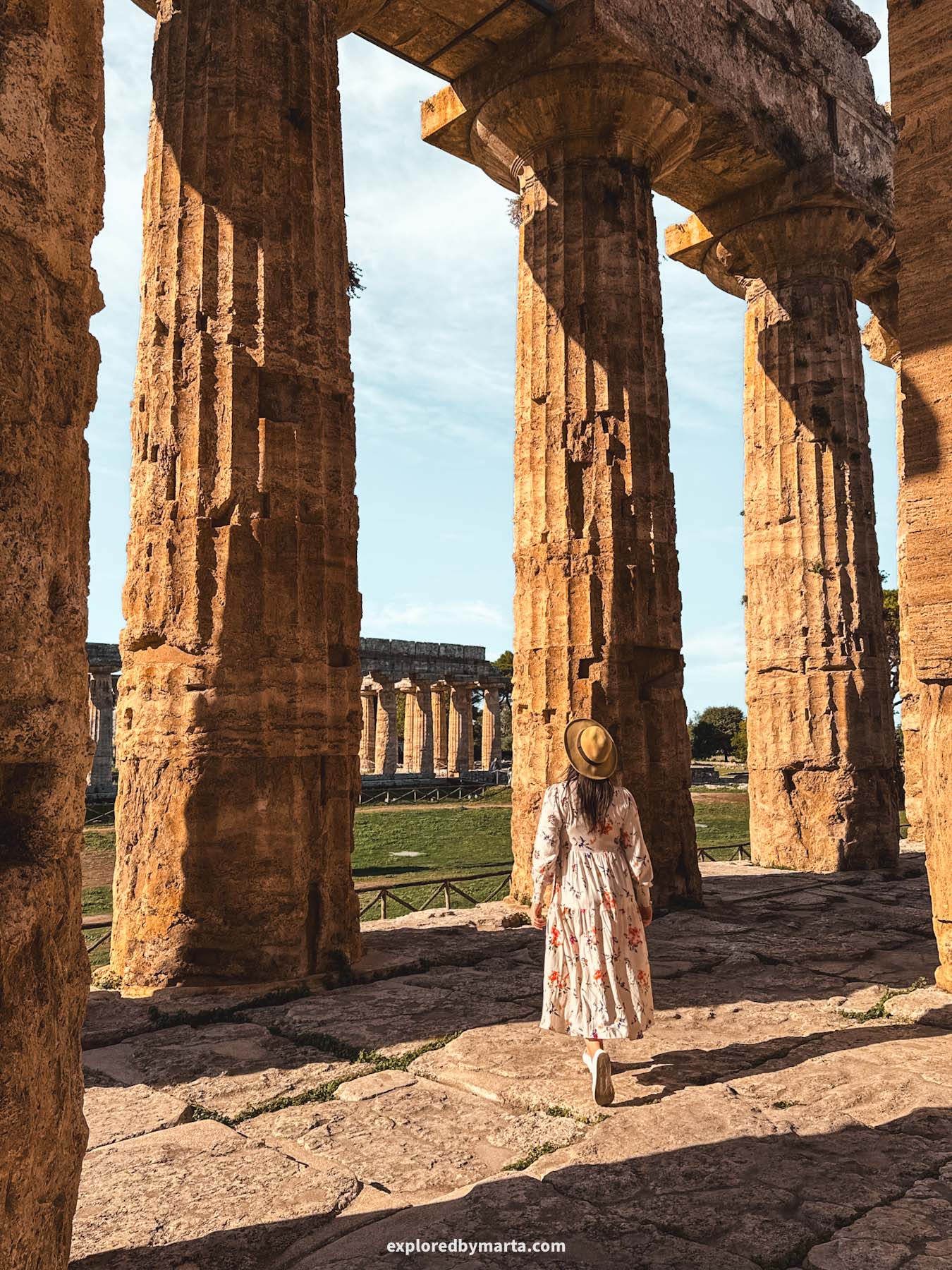
Paestum features multiple large Greek temples dedicated to deities like Hera, Athena, and Poseidon. These are some of the best-preserved Greek temples in the world, even better than many you might find in Greece!
The best part? You can walk inside the temples, touch the columns, and literally step where the ancient Greeks once walked thousands of years ago.
I absolutely loved this place. Honestly, I’d argue that the experience even surpasses visiting the Acropolis in Athens, but you’ll have to judge that for yourself!
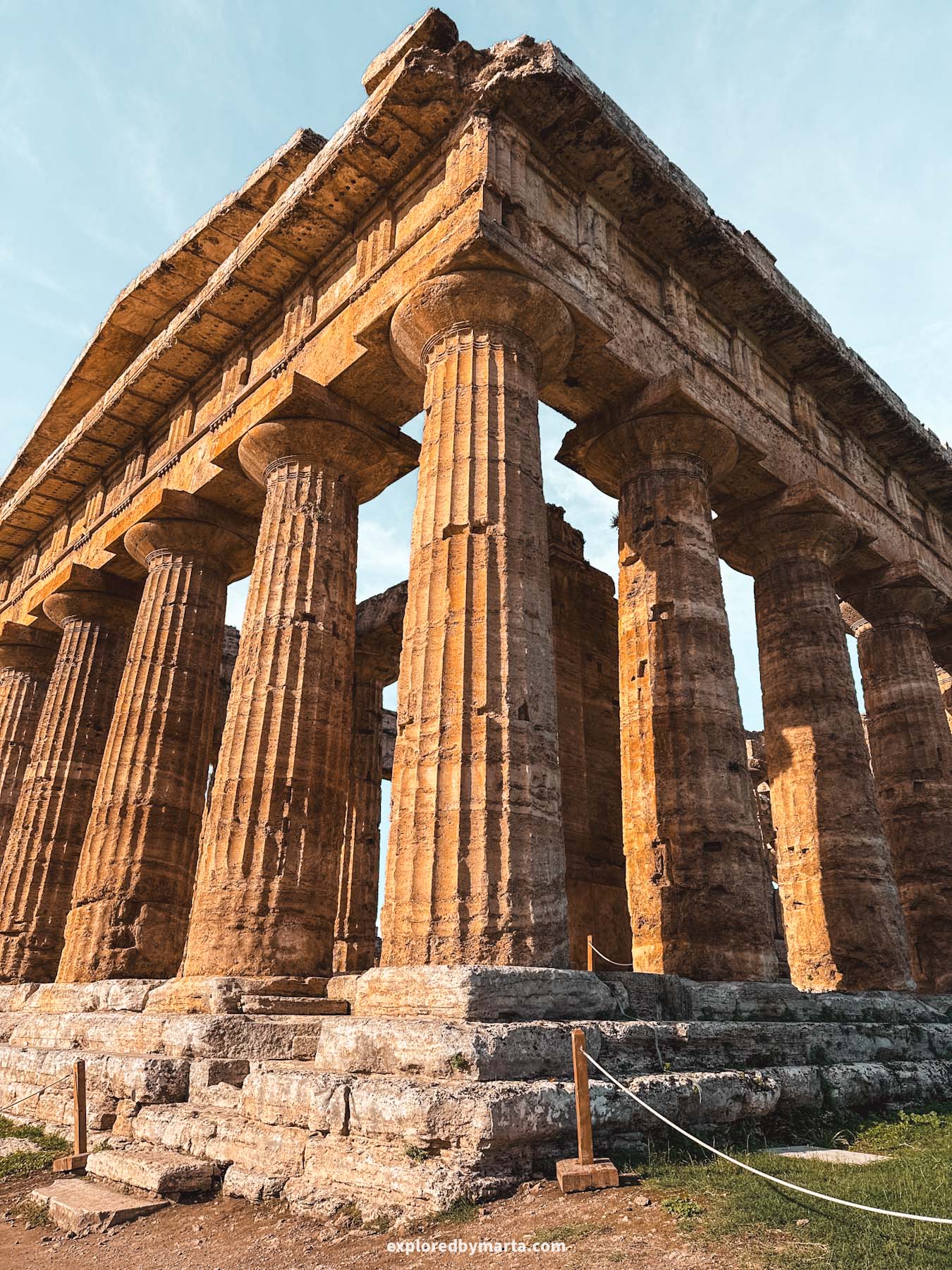

When the Greeks founded the city, they named it Poseidonia after their sea god. But it was later conquered by the Romans, who renamed it Paestum as we know it today.
I know that it might feel strange visiting ancient Greek temples while you’re in Italy, but the history of the Mediterranean is deep, diverse, and intertwined. The Greeks did live here, built cities, and left a remarkable mark on this region.
If you’re one of the many history buffs or love sites like Pompeii, the Archaeological Park of Paestum should be high on your list of places to visit in the Campania region of Italy.
I never expected to love this place so much, but I’m quite sure you will completely understand when you see Paestum with your own eyes! It is a true marvel!
Location: Archaeological Park of Paestum
17. Sorrento’s secret beach of Bagni Regina Giovanna

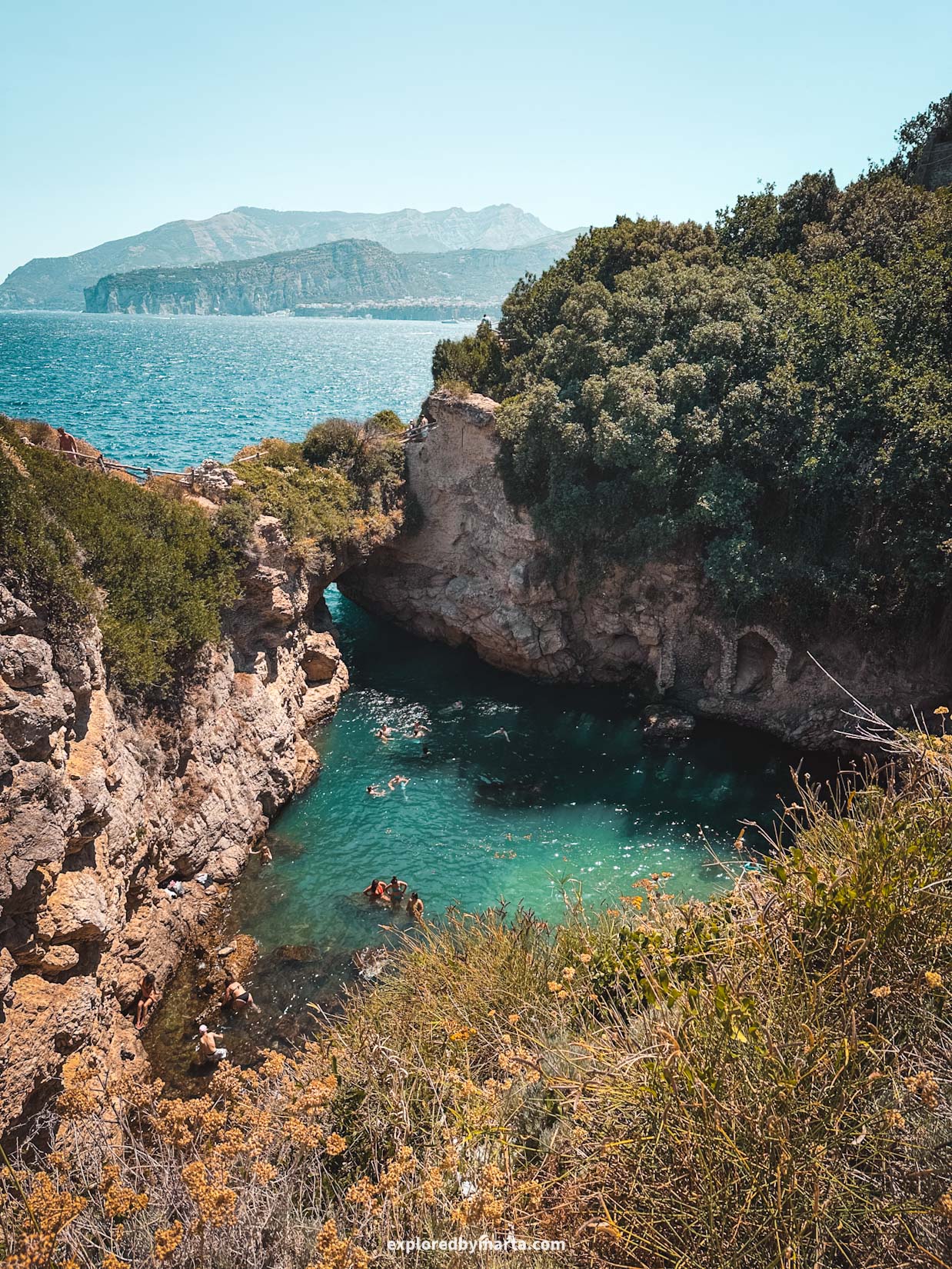
If you are staying in Sorrento and you don’t mind a beach day with some adventures, I have the perfect place for you! We loved visiting this place in Sorrento!
Just 3 kilometers (around 2 miles) from Sorrento’s historic center, you’ll find a truly unique swimming spot steeped in history: Bagni Regina Giovanna, or the Baths of Queen Giovanna.
This spot is actually a secluded natural swimming pool with pristine water, enclosed by coastal rocks that protect it from the wind and waves of the open sea. If you check out the photos, you’ll see how it’s connected to the sea by a beautiful rock archway.
But there’s more. Perched on the coastal cliff right next to the pool were the ruins of a large ancient Roman seaside villa, Villa Pollio Felice. Dating back to the 1st century BC, not much remains of it today, but it’s a cool fact to remember.
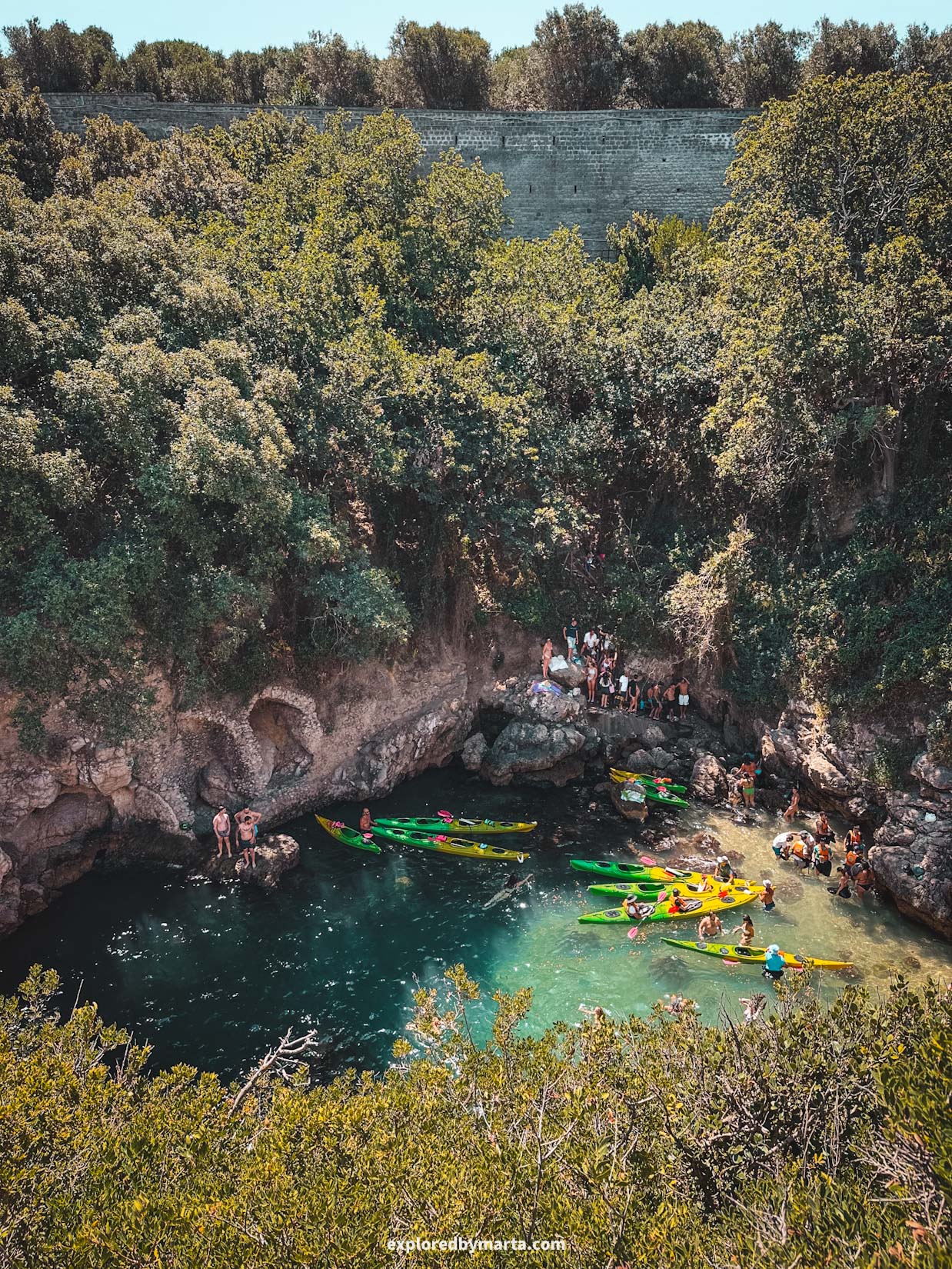
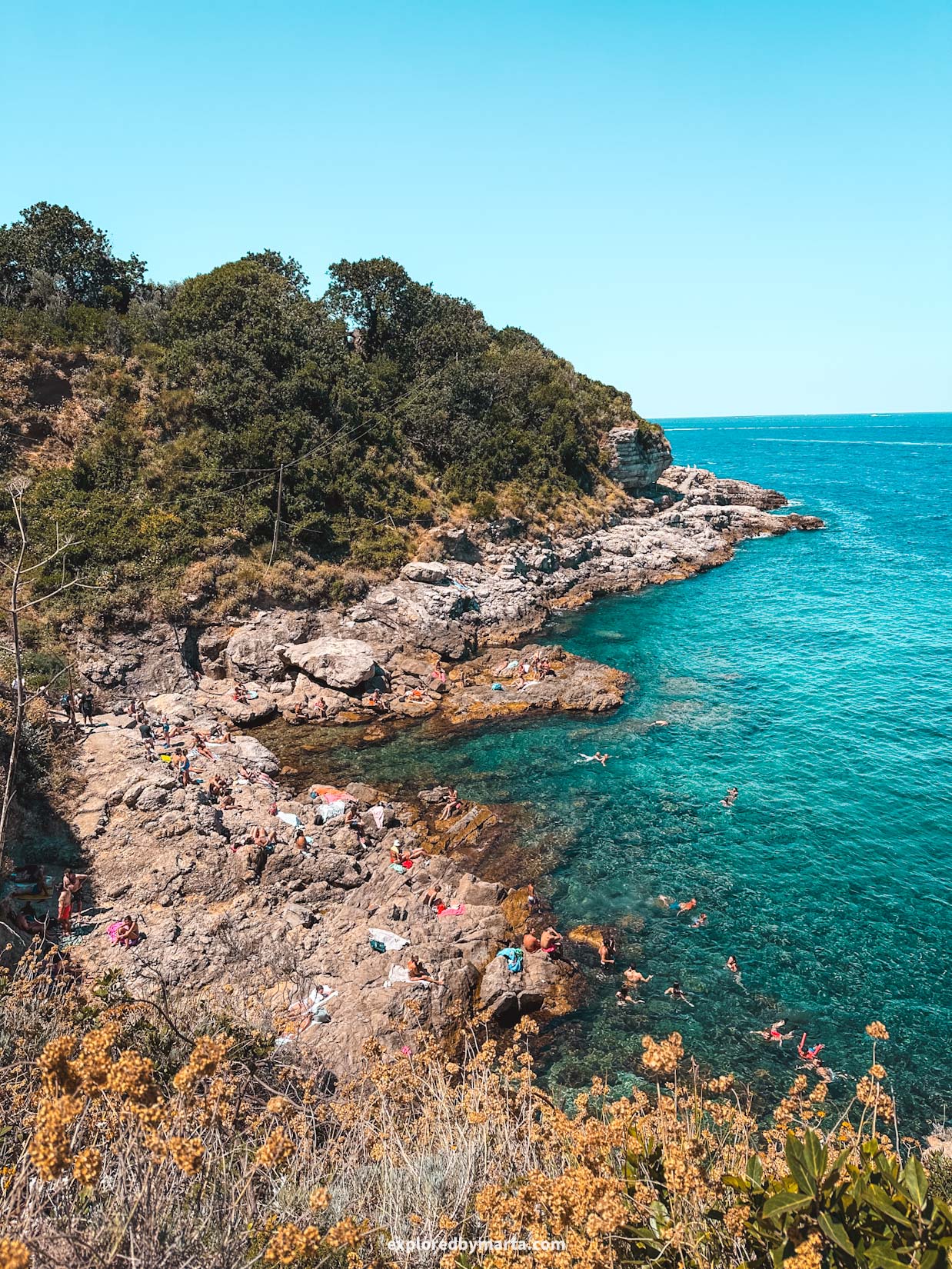
Legend has it that Queen Giovanna D’Angiò of Naples often visited this place, spending time with her lovers, swimming in this very rock pool. You can even spot some of the ancient ruins right next to the water – look for two stone archways, visible in the photos above!
The rock pool is public and has free access. You can get there on foot via a cobbled path starting from the main street, which then turns into a dirt path leading down to the water.
Make sure to wear comfortable, sturdy shoes, and bring water, sunscreen, and anything else you need for a wild beach day.
If this unique spot isn’t quite for you or it feels a bit too busy (it does have limited space!), then there are other cool swim spots further along the coastline. We saw quite a few people enjoying the water and jumping from rocks into the sea!
Location: Bagni Regina Giovanna
18. Circuit of Tre Calli

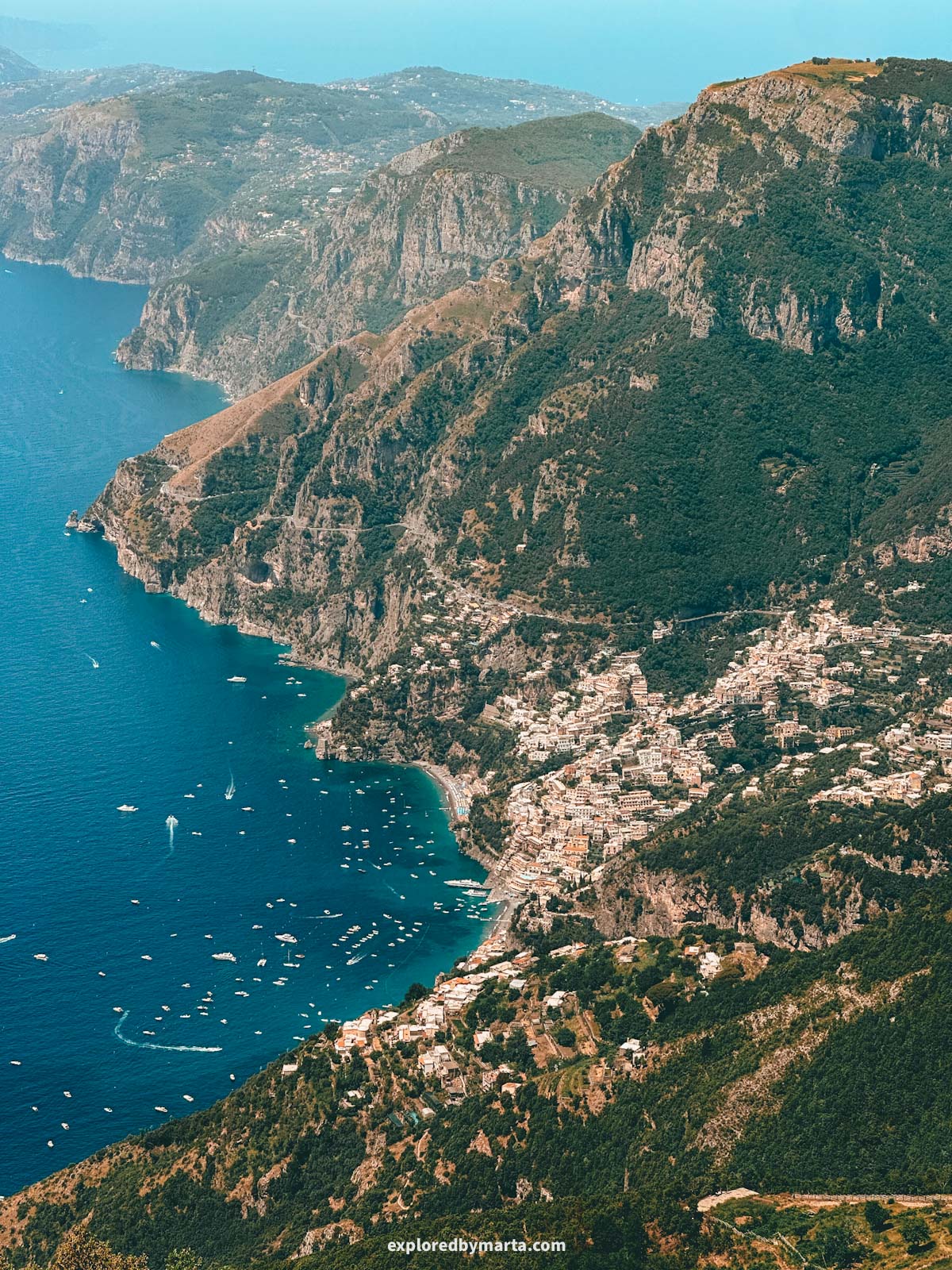
Distance: 9.5 km or 5.9 miles circular
Difficulty: moderately difficult
Elevation gain: 500 m
Duration: 2h 50min
I know hikers will appreciate these kinds of hidden gems on the Amalfi Coast, haha!
If hiking the Path of the Gods hike wasn’t enough and you’re looking for alternative routes, but with the same 360-degree views of the Amalfi Coast, then the Circuit of Tre Calli might be the best option for you!
The Circuit of Tre Calli starts in the same spot as the Path of the Gods hike – in Piazza Paolo Capasso, the main square of Bomerano, a hamlet of the Agerola municipality.
But this time, you’ll have to head to Via Tommaso Mannini Street – you’ll see trailmarks with the ‘Tre Calli’ name on them on the street.
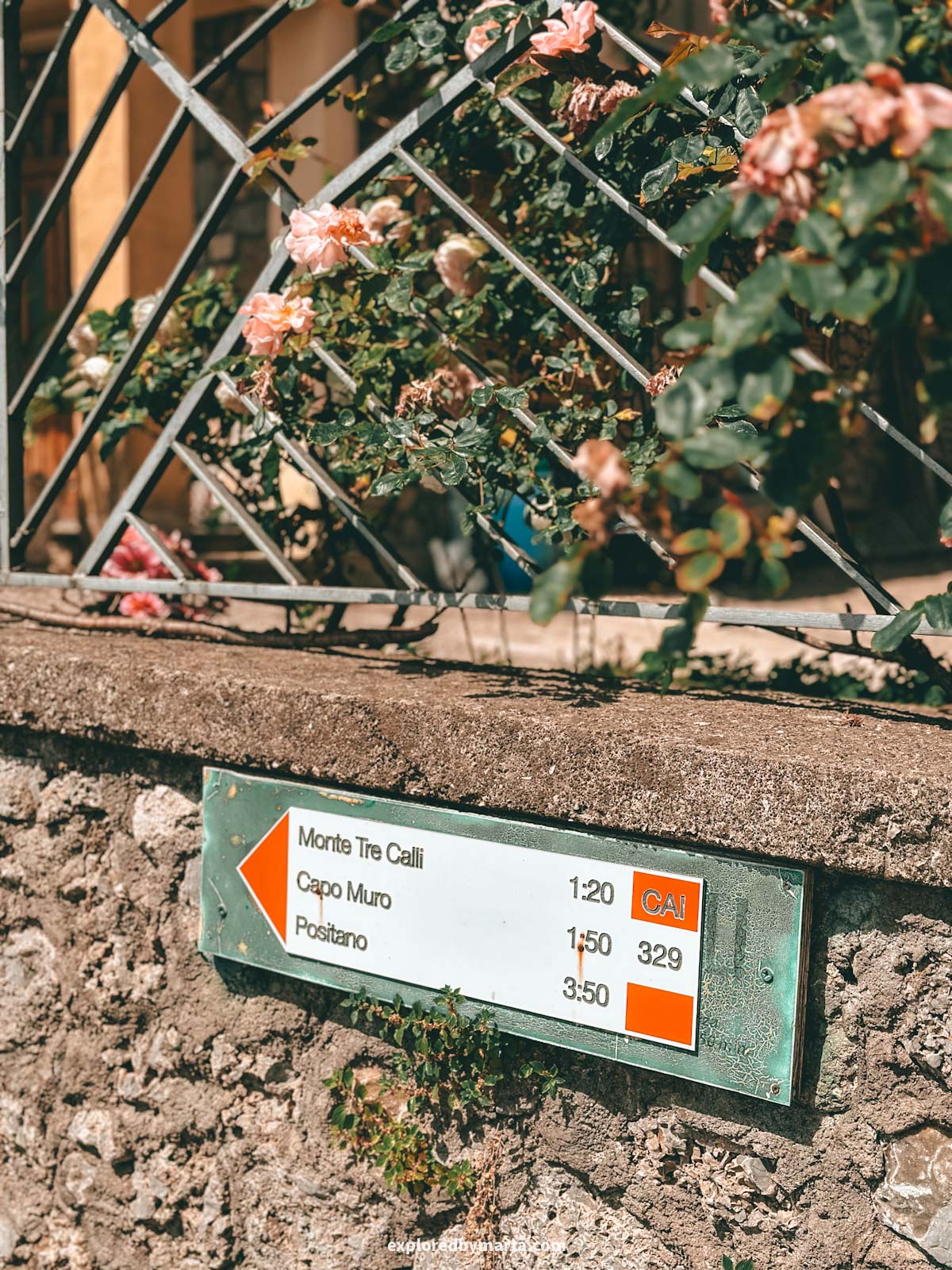
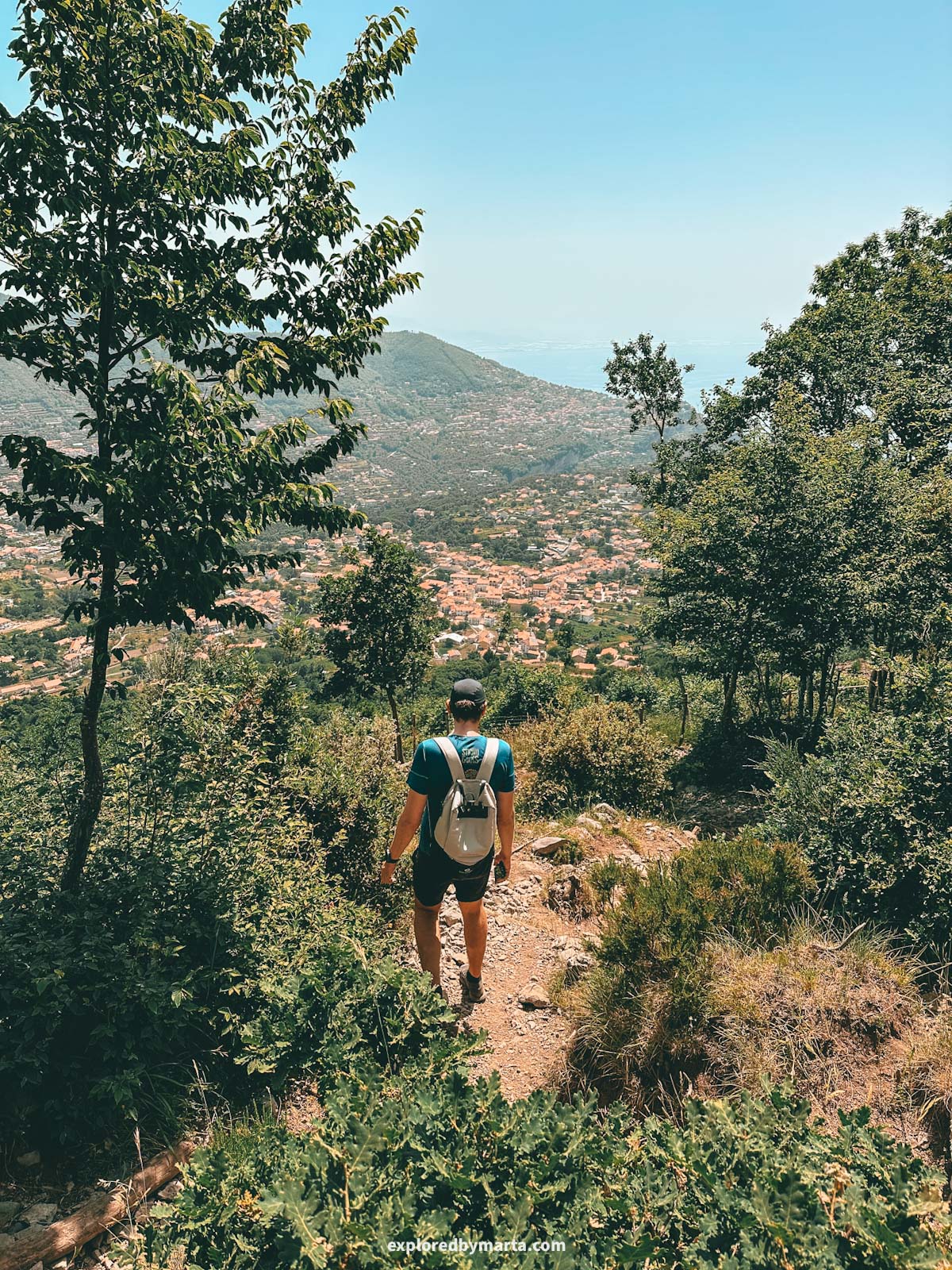
Then the hike continues by the east side up to the summit of Tre Calli Mountain, and then down the mountain by the west side, then around the mountain along a paved road, and back to Agerola.
The east side climb goes along farms, up a set of steeper stairs, and through a denser forest area, which could be a bit overgrown in spring; however, the trail on the west side is much wider and cleaner, with almost no bushes along the way.
While we did a circular route (more like a lollipop-type route), you can easily do a there-and-back route, using only the west side of the mountain, if you want to avoid denser forests and some bushes.
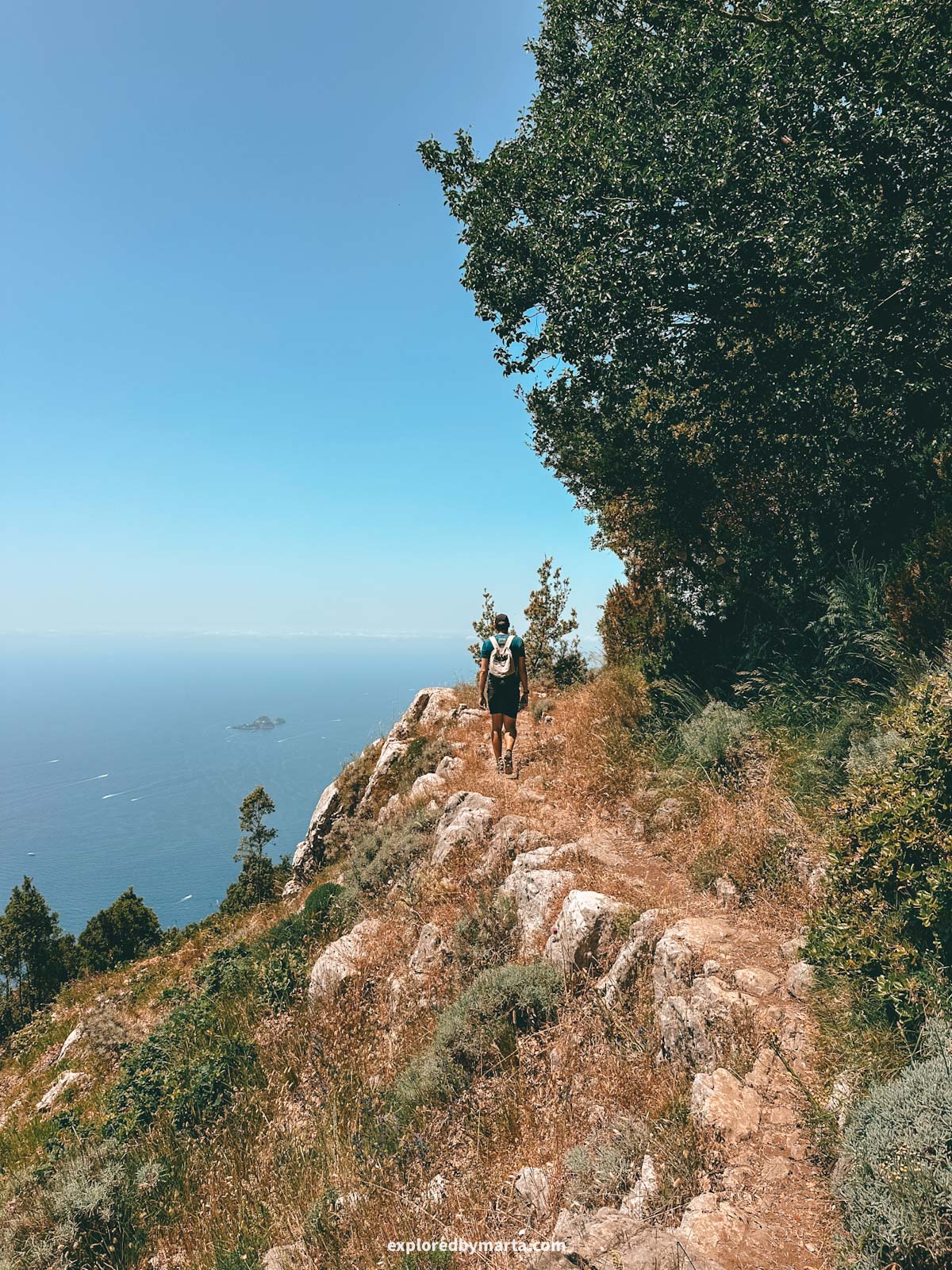
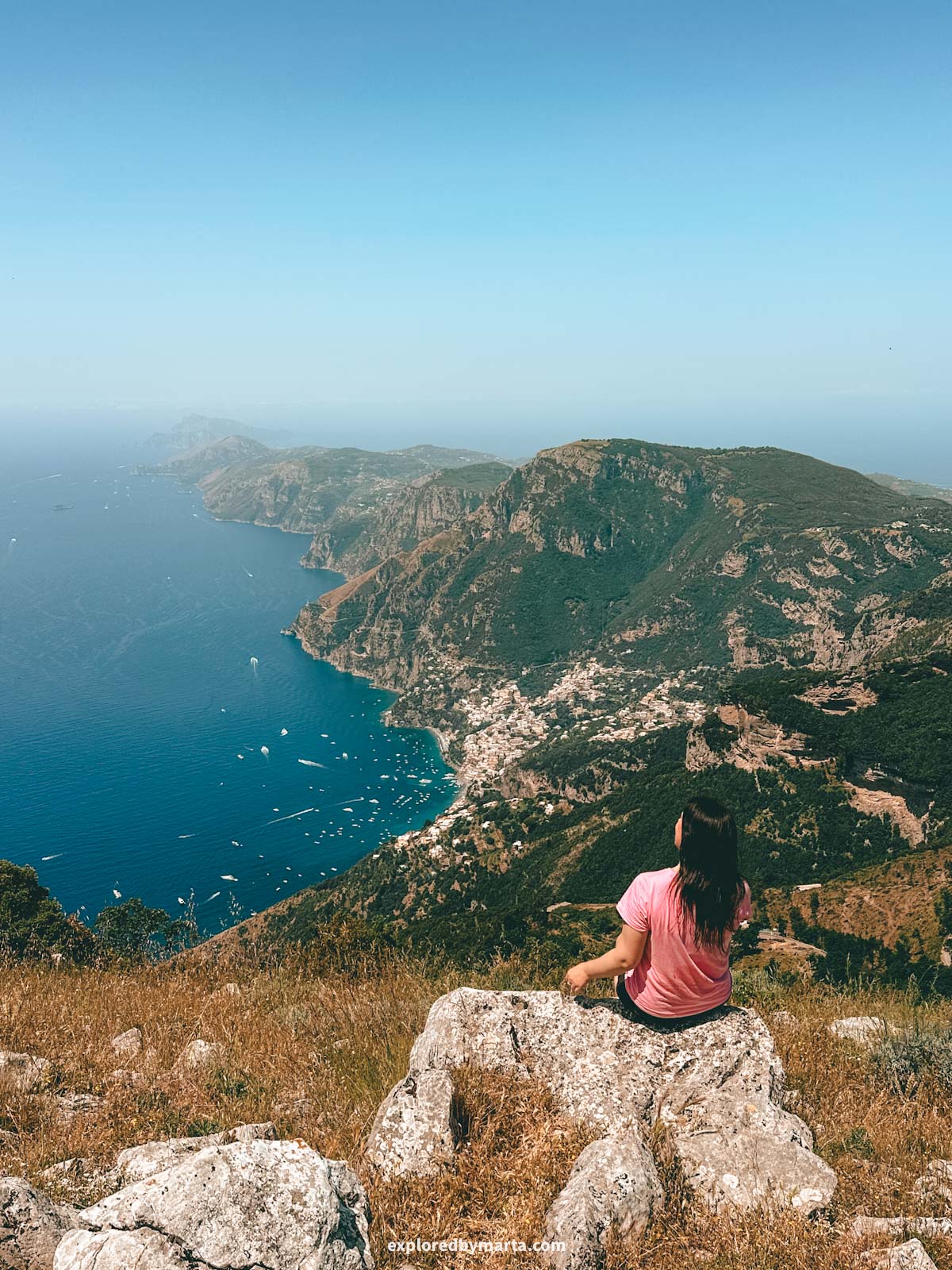
However, when we walked this trail in June, the east side trail was pretty decent, not overgrown at all, and we got fantastic views of the whole Agerola valley below us.
This is definitely a bit of a steeper climb of moderately difficult sections, but overall nothing extreme, and doable for most people who do some hiking.
This hike is not nearly as popular as the Path of the Gods hike, but it offers equally breathtaking views from the top of Tre Calli Mountain. For this reason, the Circuit of Tre Calli is one of my favorite hikes on the Amalfi Coast.
We had the mountaintop all to ourselves for a moment!
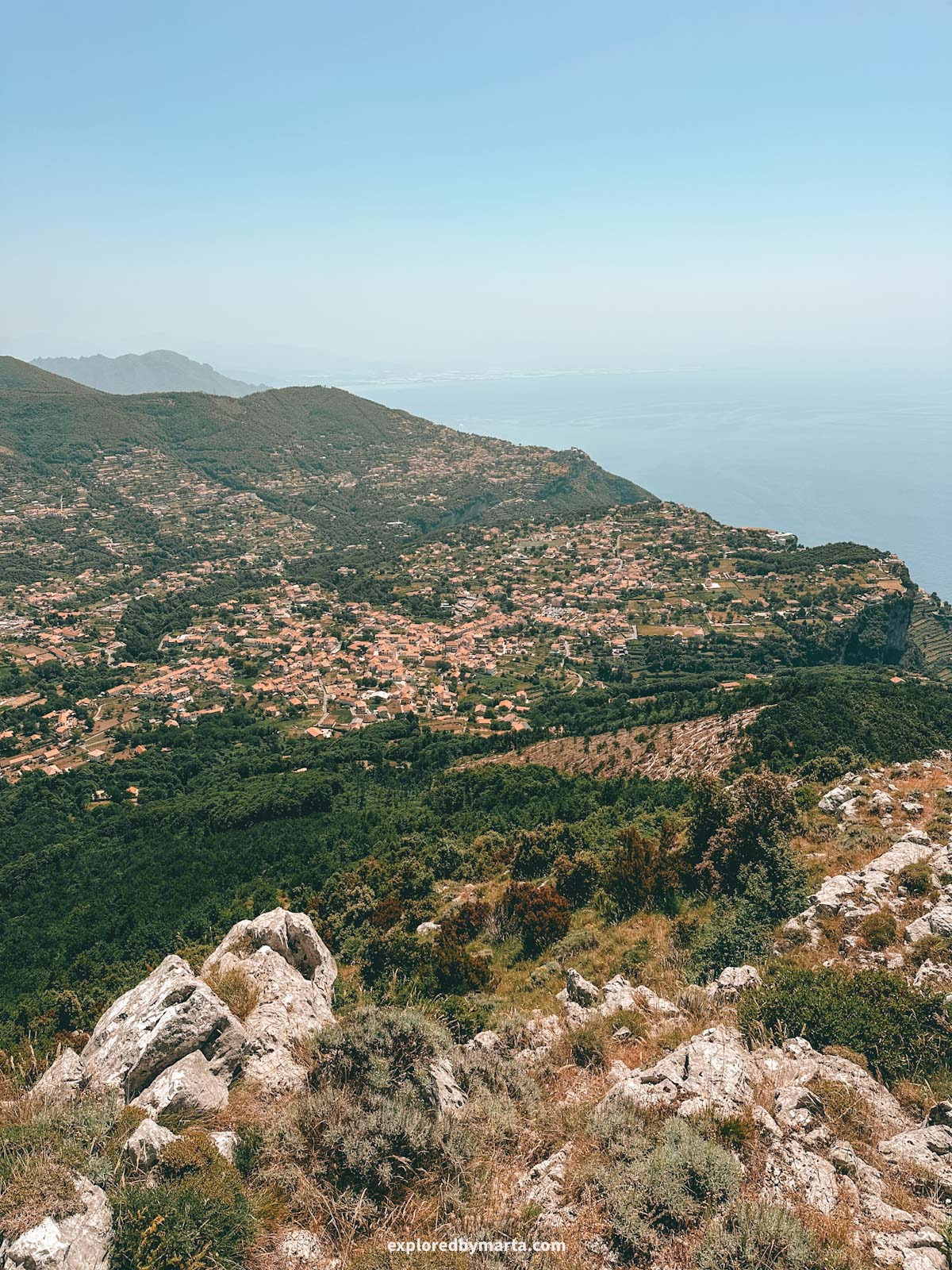
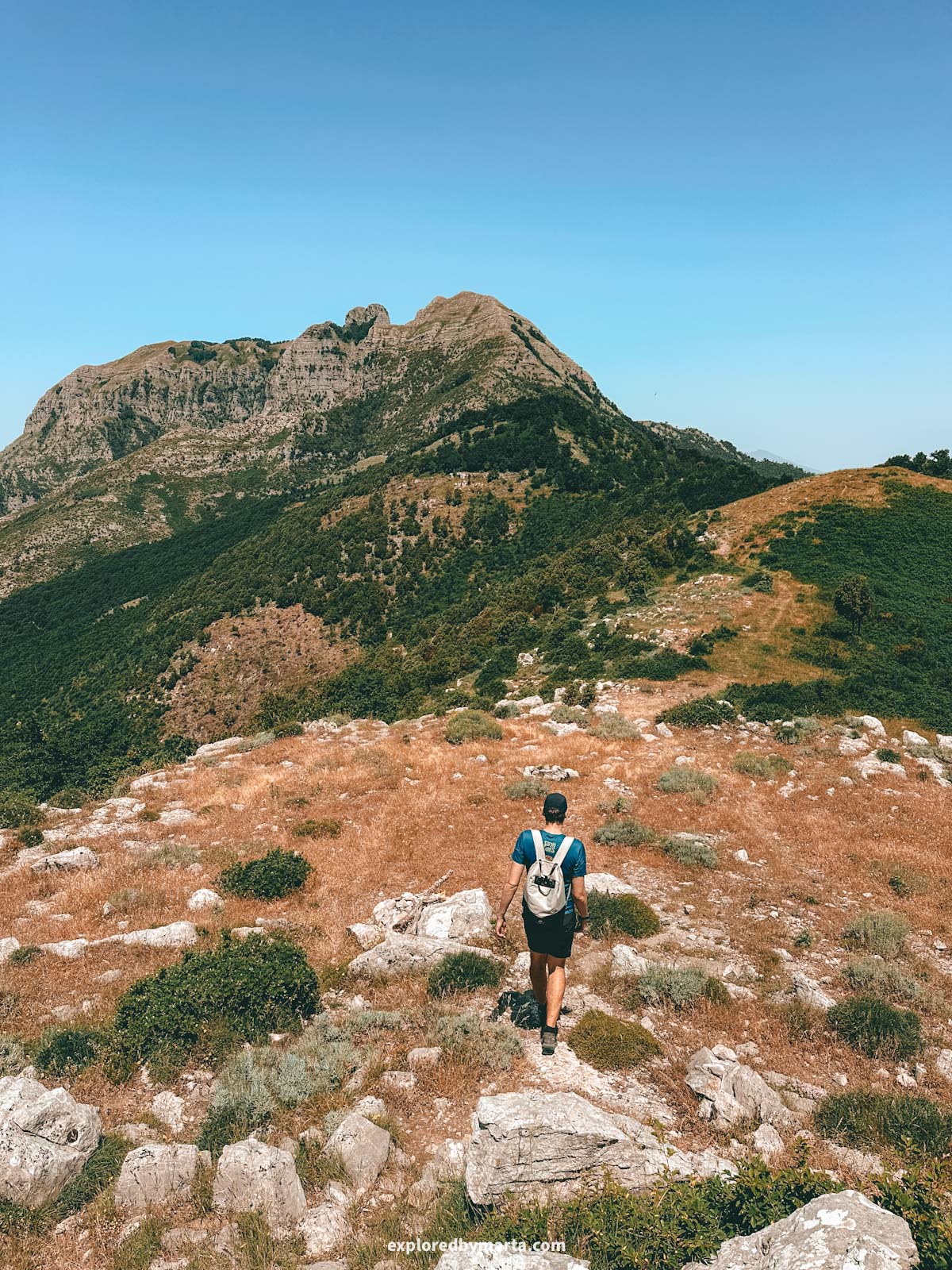
Don’t forget to bring enough water and some snacks – you’ll want to spend some time enjoying the panoramic views of Positano, the mountains of the Sorrento Peninsula, including the highest peak on the peninsula right next to Tre Calli mountain.
On a clear day, you can even see the Island of Capri!
The west side trail offers very little shade, so a hat will be useful on sunny days. Also, because of the steepness of the trail closer to the summit, proper footwear will make your life much easier. However, I did the hike in road running shoes and survived, haha.
Location: Monte Tre Calli – Start of the trail
19. The medieval Benedictine abbey, La Trinità della Cava

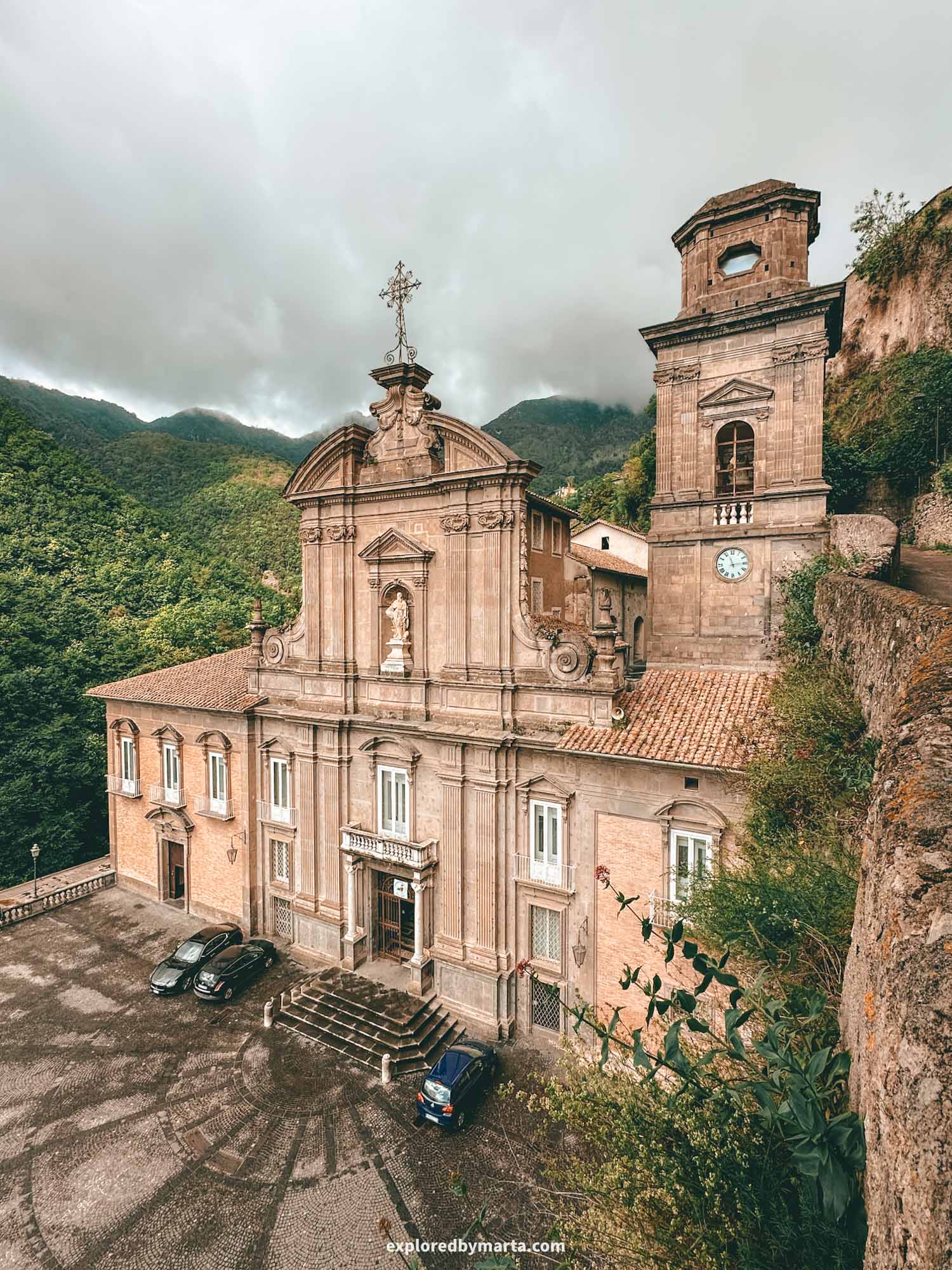
Located in a deep ravine next to a river and surrounded by lush mountains is a majestic medieval Benedictine abbey, dating back to the 11th century, La Trinità della Cava.
During our travels around the Amalfi Coast and Campania region, we stayed in the Cava de’ Tirreni municipality for a while (just inland from Vietri sul Mare), so I noticed this place on the map and knew I had to check it out.
This beautiful and majestic abbey was founded by Benedictine monks back in 1011 AD and has truly withstood time. There are several buildings in the complex, including a cloister, a church, and a library.


The library hosts an impressive collection of ancient codices, manuscripts, rare books, and documents, which date back to the 8th century. Overall, about 100,000 items, including a 9th-century Visigothic Bible.
There are guided tours available at the abbey at certain hours; however, when we arrived, we could not find anyone, so we just explored the outside of the abbey and walked inside the church (just push the door, it should be open).
The church is the final resting place for Queen Sibylla of Burgundy, wife of King Roger II of Sicily.

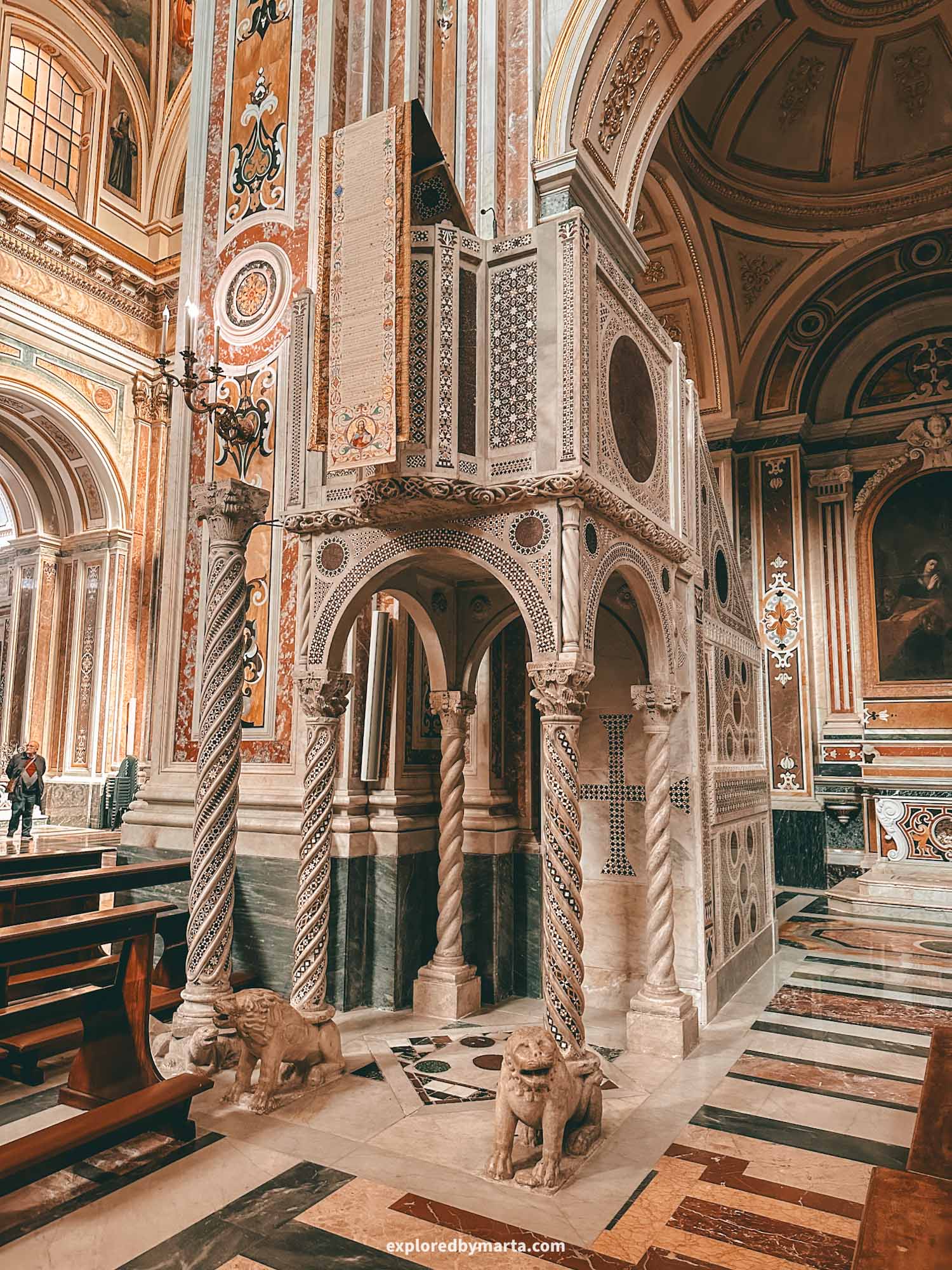
The main nave is richly decorated with marble, beautiful frescoes on the ceiling, as well as stucco. It looked incredibly majestic and serene.
While exploring the outside, we walked along a path that goes steeply uphill right next to the church, so we were able to basically walk up to the roof of the church. Such a cool angle!
If you’re a lover of art and love historical places, and if you’re in the area and have some spare time, definitely pass by this unique place! There’s such peace and quiet if you compare it to the busy coastal towns!
Location: Abbazia della Santissima Trinità
Happy exploring!
The Amalfi Coast, a UNESCO World Heritage Site, is known for its natural beauty, scenic views, and beautiful architecture. I haven’t been everywhere, but it has to be one of the most beautiful places on our planet!
We spent half a year living in and exploring the area on and around the Amalfi Coast. It’s easy to see why this region has drawn everyone from simple fishermen to Roman emperors to its shores for thousands of years.
I hope you find some travel inspiration in this Amalfi Coast guide – and that you enjoy your time on Italy’s Divine Coast as much as we did. The beaches, the views, the villages, the food… It’s a place you won’t ever forget!
PIN FOR LATER!
